Turkey Part 8: Big detour from Konya to Göreme
The long way to the center of Cappadocia (23)
Look, there is a meerkat over there! And there is another one! At the second look it turned out to be a Centralasian ground squirrel next to the road that guaranteed for a little distraction from cycling through the dull plains that followed Konya. They are cheekily looking out and warn their friends with a high whistle from the approaching cyclists.
After three days in Konya we decided to continue cycling despite the strict lockdown during the Ramadan. Until now, we had the subjective sensation what we’re all the same during the pandemic, but this changed with the new rules in Turkey: Tourists are allowed to roam the country freely, while the locals are only supposed to go outside for grocery shopping and doctor’s appointments. We are sure that many disagree with this situation, but we usually don’t hear negative comments about the government. Many are complaining about the lack of financial support and the fluctuations of the Turkish Lira though. We’re asking ourselves sometimes where Turkey is heading. There seem to be so many contradictions in this country between Europe and Asia. Those are some of our thoughts while we cycle through the dull plains and then suddenly we arrive at the doorstep of an old caravanserai in Sultanhanı and realize – we’re at the Turkish part of the ancient Silk Road.
The caravans stopped in Sultanhanı after a day’s stage for a camel (30 – 40 km) for a break. We also stop and are impressed by the beautiful architecture. Every caravanserai had a mosque, a kitchen and a blacksmith that took care of the animals. The merchants and traders gathered here and exchanged tips and we are doing the same as we meet two other cyclists in the caravanserai (what are the odds?). Laura & Bastian from Lille left France in the winter and cycled all the way to Turkey, but now they changed their plans and flew from Istanbul to Miami and discover the USA as they were running out of the 90 days tourists are allowed to stay in Turkey.
We realize that we are constantly moving further East and towards Central Asia and it suddenly feels as we’re very far away from home. Now there’s only the camel missing for the perfect picture, but that would have to wait for a while.
Soon after the city of Aksaray the landscape changed into rolling hills that already looked like in Kyrgizstan. From far away we see a couple of vacant decaying houses at the village of Kızılkaya that we like to visit. Those simple mud houses are our first impression of the way of living in Cappadocia in the past. The roof was usually covered with grass which guaranteed a good climate and the locals moved from ladder to ladder and from one roof to the next instead of using roads. It is ghostly silent and only a tortoise is slowly moving around. There probably aren’t too many visitors stopping here and the locals are taking their time to chat with us. We meet Hatice, who shows us her small “museum”, that turns out to be the house of her ancestors.
Is this real or the backdrop for a science-fiction movie?
Sometimes we stand in disbelieve at what we see in Cappadocia, as this weird and wacky landscape is truly unique. We experience this feeling the first time when we stand in front of the astonishing rock-cut Selime Monastery. Star-Wars fans would probably recognize this setting from one of the films. This biggest monastery in Cappadocia has been built into the soft tuff stone and incorporates living rooms, a kitchen, a chapel and a place for viticulture. Monks used to live in these caves during the 9.- 11th century AD.
A series of volcanic eruptions is responsible for the fantastic fairy chimney landscape of Cappadocia. The volcanic ash hardened into layers of rocks known as tuff that have whittled away by the grinding effects of wind, water and ice and creating bizarre rock formations. The tuff was easy to work with and strong enough to guarantee a relatively safe living and people have long utilized the region’s soft stone, seeking shelter underground and leaving the countryside scattered with cavern architecture and underground cities connected with kilometers of corridors.
Ihlara Valley & Güzelyurt: Rock-cut churches in a beautiful landscape
The 14 km long Ihlara Valley runs between Selime and Ihlara and is surprisingly lush and fertile compared to the stubbly fields around. In the middle of the valley lies the small village of Belisirma where we can pitch our tent behind a restaurant, which allows us to discover both parts of the valley on foot. It is a wonderful stroll next to the Melendiz River surrounded by jagged cliffs. This valley was a favorite retreat for Byzantine monks, who cut churches into the base of its towering cliffs. Unfortunately, not much is left from the once colorful frescos, as the faces of the saints are often destroyed by acts of vandalism. The mixture of nature and culture is fascinating and we enjoy having so much time to explore the Ihlara Valley. Other visitors are just walking along a small section of the valley and we are usually the only one round. In the evening we sit around the fire and listen to the pretty reliable nightly concert of croaking frogs.
Our next stop is the panoramic village of Güzelyurt that lies only 12 km from Belisirma and we are taking a 4-day-break here. We didn’t really plan on staying that long, but we received a great offer to stay at a wonderful hotel for a good price and now we enjoy the view from the terrace over to the silhouette of Hasan Dagi. There is a group of Ukranian cyclists at the hotel as their government is promoting Turkey as a safe travel destination at the moment and we meet many on our trip. We discover our first underground city in Güzelyurt and the monastery valley with its rock-cut churches. The electricity was out in one of the underground cities and we feel like explorers discovering all the dark corridors. The complex ranges across several levels and there is one section where you have to descend through a hole in the floor.
The “long route to Göreme”
From Güzelyurt we could have reached Göreme, the tourism hotspot of Cappadocia within one or two cycling days, but it took us more than a week to get there as we only wanted to arrive in Göreme at the end of the lockdown on May 17th. We heard that the famous hot-air balloon rides were cancelled during the lockdown and that’s something we definitely wanted to see, so this means planning a new route for us that takes us over a 2000 m high pass and towards the Aladağlar National Park.
Despite the exhaustion, the landscape is absolutely rewarding with lakes and the view to the extinct volcano Erciyes Dagi in the distance. We cycle along a flock of sheep that choose a future ski resort as their pasture and shortly afterwards we see our first snow this year. It would be great to camp up here, but we don’t have enough water and so we cycle down to the next village and ask for the village fountain. Everybody tries to help and promises us that their water is great and everyone is very excited about us stopping here. We love those visits in the villages. You never know what happens and usually people greet us very friendly and if you chat for too long you could even get an invitation to sleep somewhere. But tonight we prefer to sleep in our tent and so we cycle a little bit further and find a campground with a wonderful view towards the Aladağlar mountain range. The night is very cold and when we wake up it’s only 0° degrees outside.
Hiking in the barren landscape of the Aladağlar National Park
Shortly after the provincial centre Niğde we feel the lockdown restrictions as well when we can’t enter the Eski Gümüşler Monastery. Usually all sights are open for tourists, but unfortunately not this wonderfully preserved monastery. It’s a rock-cut Byzantine monastery with a large courtyard on the base of a cliff and it’s supposed to have some captivating frescoes. The good thing is – we meet two other travellers here from Austria that are on their way to the Aladağlar National Park and they tell us how beautiful it is and so we definitely decide to make a detour to the mountains, again.
The National Park protects the rugged middle range of the Taurus Mountains and is famous for climbing and trekking and the barren landscape with high mountain plateaus dotted with lakes. We cycle to the small settlement of Çukurbağ where we stay at the Ala Dağlar Camping. We talk to the other campers and decide that we would like to venture further into the nature and the National Park.
But first we need to get some groceries, as there’s no infrastructure in the park and it’s not that easy to just quickly cycle back and forth for us. We visit the village of Çamardı where we find everything but alcohol as the government prohibited the sale of alcohol during Ramadan and the lockdown. Just as we leave a supermarket, the vendor almost yells at us on the other side of the road: “Beer? Beer!”. Everyone on the street could hear him. We laugh and go back and buy some beer that he hides beneath the counter. The funny thing is, that all travellers in this area seem to know this store and conversations would go like this: “Yeah, we heard this form the beer-guy in Çamardı”.
Fully equipped for the next days we cycle further into the National Park to the entrance of the Emli Vadisi. There is a big meadow surrounded by an alpine landscape where you can pitch your tent for a small fee. There is drinking water and even a complex with toilets and a cold shower, what more could we want? It’s Bayram, the end of the Ramadan and families come here to celebrate while having a picnic together. Everyone brings their camping chairs, blankets, large cans of tee and frying pans for the Turkish pancakes Gözleme.
It’s a wonderful gathering this weekend and we get invited for tea and fruit and quickly meet a family from Bayern in South Germany that travels with their small children in a campervan through Turkey (www.martl-jung.de). They both love cycling and have seen many parts of the world in an adventurous way and are very inspiring people. They invite us for a delicious dinner and we all sit together and talk about traveling.
We spend the next two days hiking through the barren landscape. Even though this National Park is quite popular, there isn’t a good map or signposting of the routes and we have to guess the right path quite often. There are many loose rocks and sometimes the passages are quite steep. Once on our way back to our tent we even have to climb over some snowfields in the shaded areas of a canyon, it’s a nerve-racking adventure. We just plan on doing small day-hikes but we end up hiking for two full days enjoying wonderful weather and great views.
On our way out of the National park we stop at the hidden Kazıklı Canyon, that you can’t see from the road. There are climbing routes everywhere. This is now the third famous climbing spot in Turkey that we visit by change and as climbing novices we can’t even really appreciate this fact. So maybe this means we have to come back with the right equipment and experience someday, who knows, life’s full of surprises and twists and turns.
The dramatic Soğanlı Valley
After the mountains we visit another valley full of fairy chimneys and rock-cut churches that is less visited and the Soğanlı Valley turns out to be a real highlight for us. We follow a route through tiny villages and gravel roads and are not sure if this is the correct route as there is no sign indicating the valley anywhere even though it’s supposed to see a “Must-See” according to the Lonely Planet. We stop in Edinkli to buy some fruits and get invited for delicious baklava and sweet lemonade. A guy collecting scrap metal with his truck even offers us a ride to the valley. But we keep on cycling and follow a bumpy road that suddenly descents into the valley and we see fairy chimneys everywhere, we have arrived.
We can camp in the garden of a restaurant and discover the valley the next morning. Monks have been busy building rock-cut churches and painting frescoes of their saints here as well and we see some very decorative dovecotes, that we’ll see even more often around Göreme. The churches are hidden amid two dramatic, secluded valleys and were used by the Romans as necropolises and later by the Byzantines for monastic purposes. We find the Kubbeli Kilise (photo above) particularly impressive as it reminds us of an Armenian church with its eastern-style cupola and dom. In some of the churches we could still see the graves or the long tables where the monks used to eat on. We stop for a tea with an elderly couple, that runs a pension. They show us the two cave rooms that they’ve built and decorated themselves and you could see that they are very proud of this charming place, but sadly no tourist has come the past two years. We hope that some visitors will find the way to this beautifully hidden valley again after the pandemic.
About underground cities, secret storages and decorative doors
We are slowly getting closer to the more touristic part of Cappadocia and the underground city of Derinkuyu, that is surrounded by fruit juice stalls and souvenir shops. Hard to imagine, that this underground city was only accidentally discovered in the 60s when a man wanted to renovate his cellar and found a hidden corridor behind the wall and then another one and….and today this is one of the most visited underground cities in Cappadocia. We don’t know what happened to the refurbishment plans of the man who discovered this incredible place.
We pay the TRL 60.- entrance fee and find out only a few days later, that we could get a Museum Card with our short-term residency permit that would have allowed us to visit interesting museums throughout Turkey for a year for the price of TRL 60.-. Well, too late now.
Today we are going underground as we visit two underground cities that lie close to each other: Derinkuyu and Kaymaklı. There are supposed to be more than 100 underground cities in Cappadocia and recently one was discovered below the city of Nevşehir. They were first mentioned by the ancient Greeks, but only extended in the 6th and 7thcenturies by Byzantine Christians that used them to escape persecution. When enemies approached they would spend months underground and therefore those cities were built for long-term stays and included churches, schools, storage rooms, wine cellars and stables while ventilation shafts and wells with drinking water secured the survival of the inhabitants. Derinkuyu and Kaymaklı housed about 10'000 to 30'000 people respectively and it must have been quite crowded and claustrophobic in the narrow walkways leading into the depths of the earth. Discovering the different subterranean corridors is an oppressing and fascinating experience at the same time.
We preferred the underground city of Kaymaklı with its maze of tunnels and rooms carved eight levels deep into the earth. Huge grindstones were used to close an alley and still can be seen today. While venturing deeper underground you sometimes forget how deep you are until you see a ventilation shaft that rises to the surface.
We only reluctantly return from the cool caves and back to 35° degrees outside. It was suddenly very hot, welcome to summer. We keep on cycling and sweating when we see something peculiar: Hills with big doors and chimneys. What could be hidden behind those doors? We’ve never seen anything like this before and it took us a moment until the secret was revealed. What do you think? The answer follows in our Cappadocia video.
Our last stop on our «long way to Göreme» is the beautiful village Mustafapaşa, that is still known by its Greek name Sinassos. It is home to some typical Greek stone carved-mansions with wonderfully ornamented doors. There is a museum in our accommodation about the time of the Greek-Turkish population exchange and many locals still speak a dialect from northern Greece.
There is also a monastery valley here with fairy chimneys and rock-carved chapels that makes a lovely walk that you’ll probably have to yourself. But after spending 10 days in the lesser-known places of Cappadocia it was about time to visit Göreme, as we couldn’t wait anymore to see the spectacular lunar landscape everyone talks about. Now it’s only 14 km more for us until we’re there and for you a little bit of time until the next blog with the obligate hot-air balloon pictures.

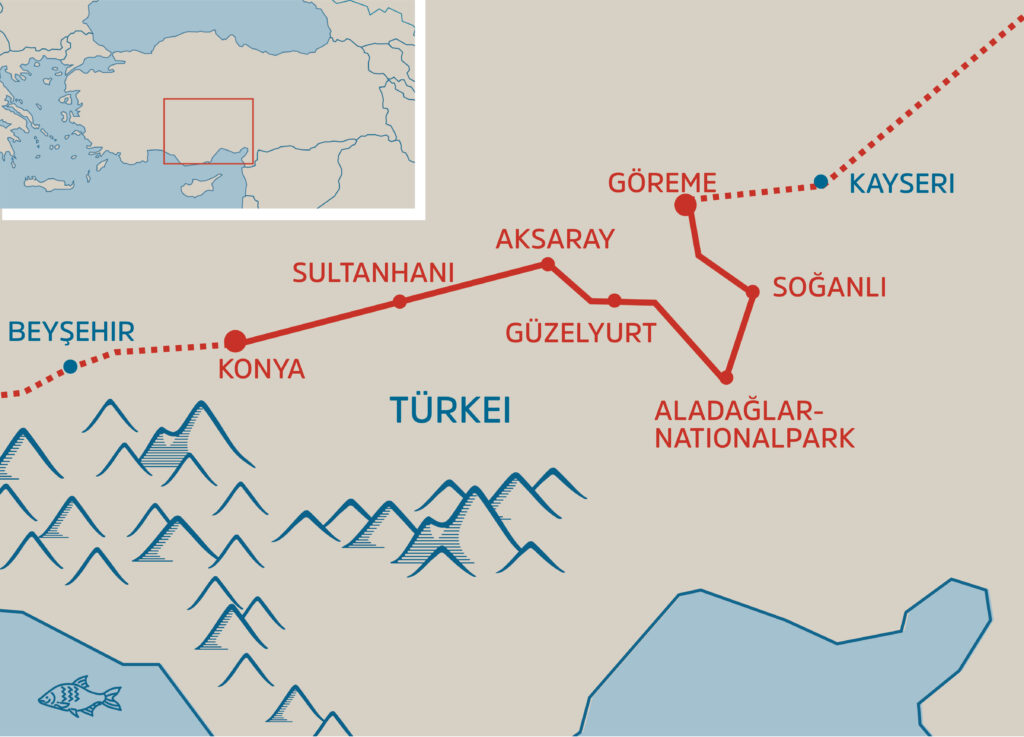
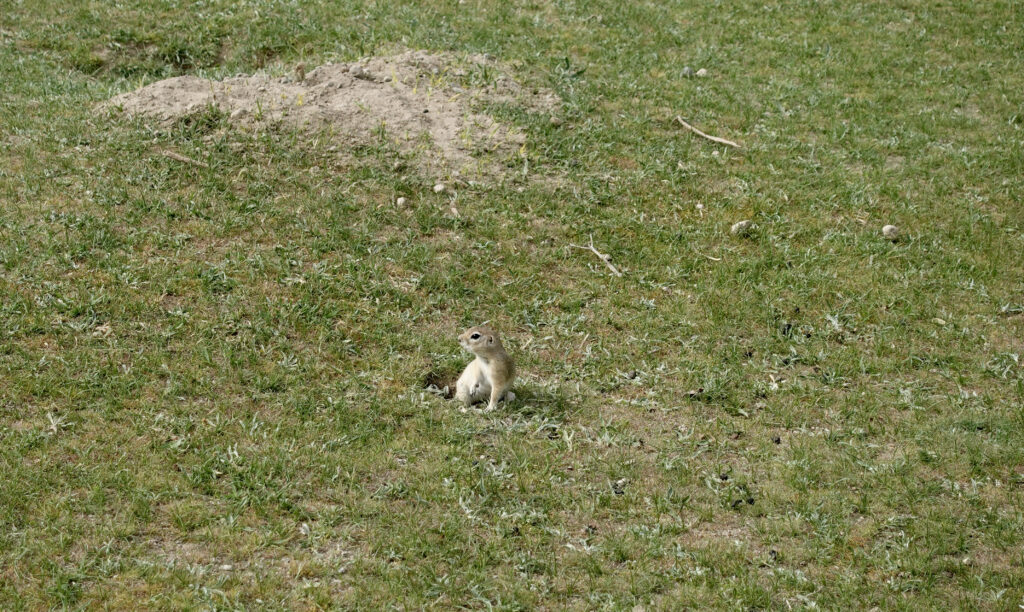
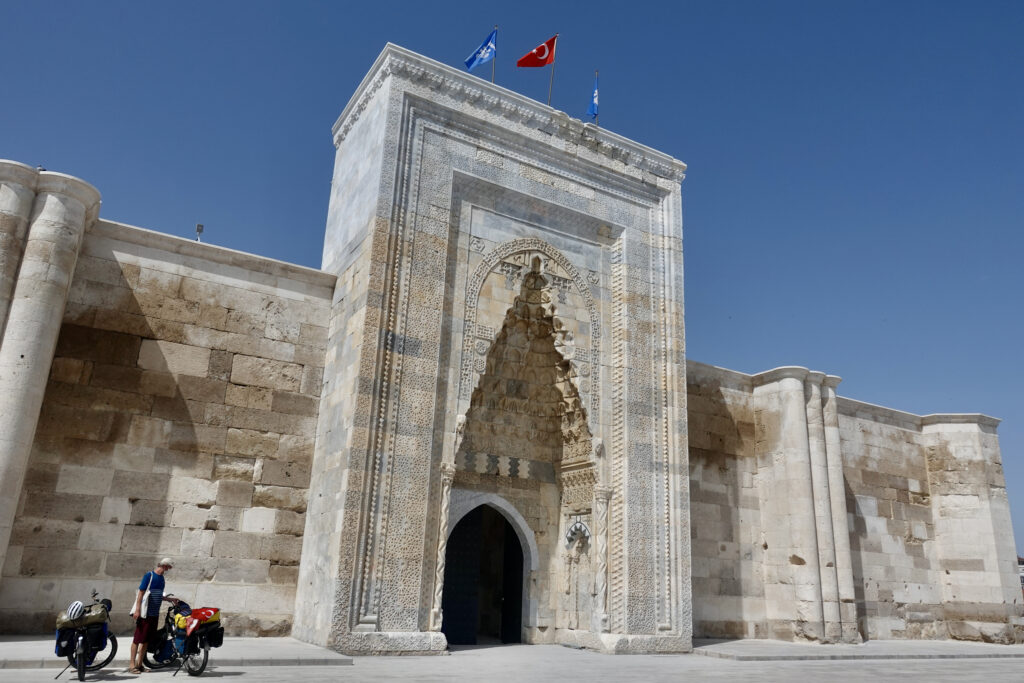
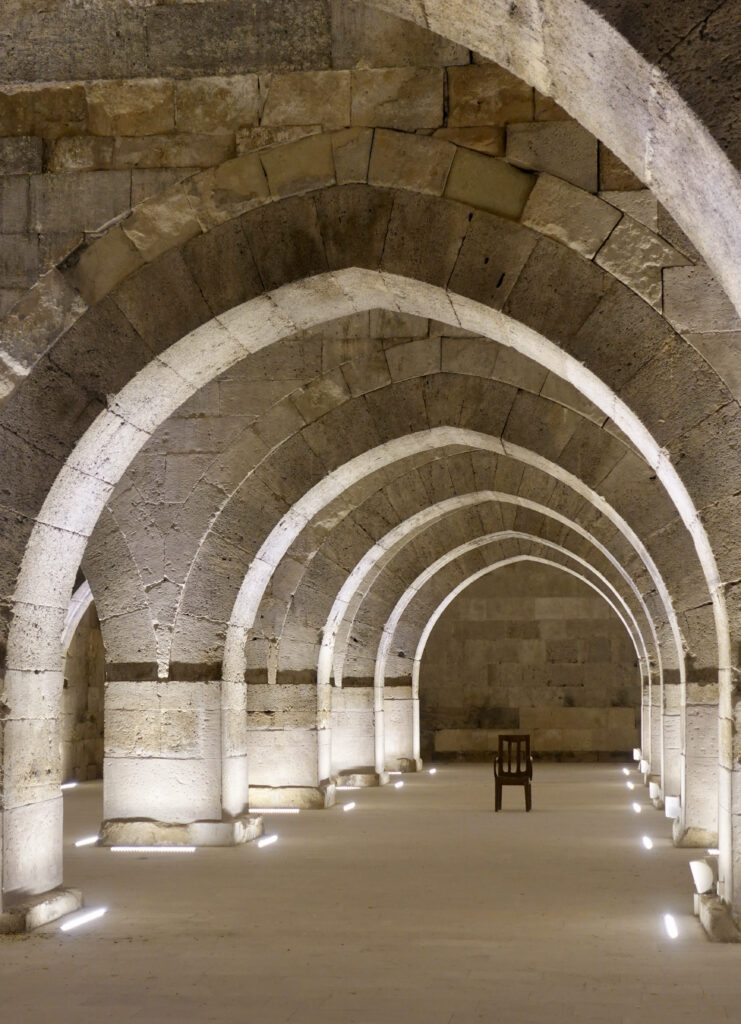
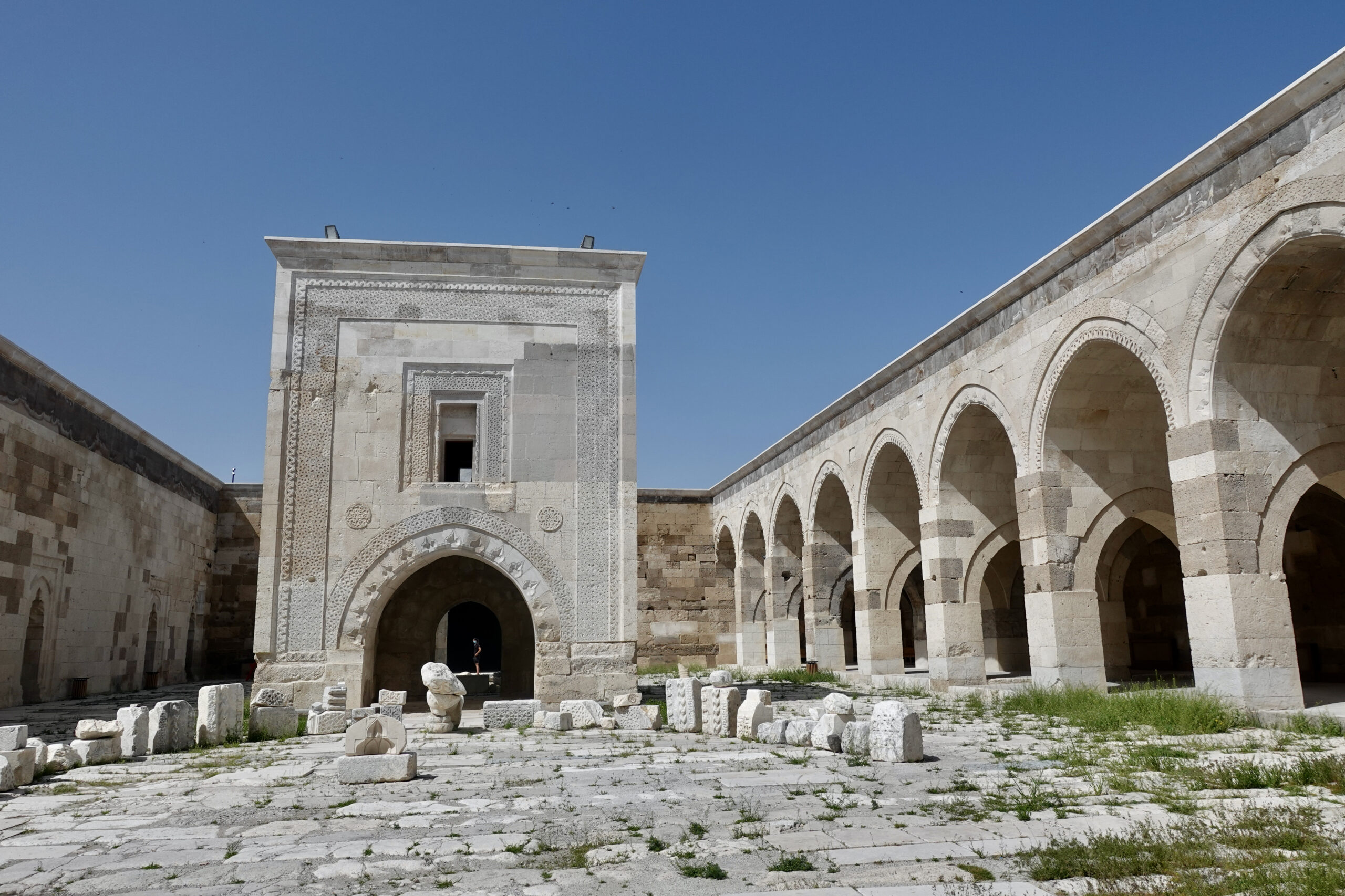
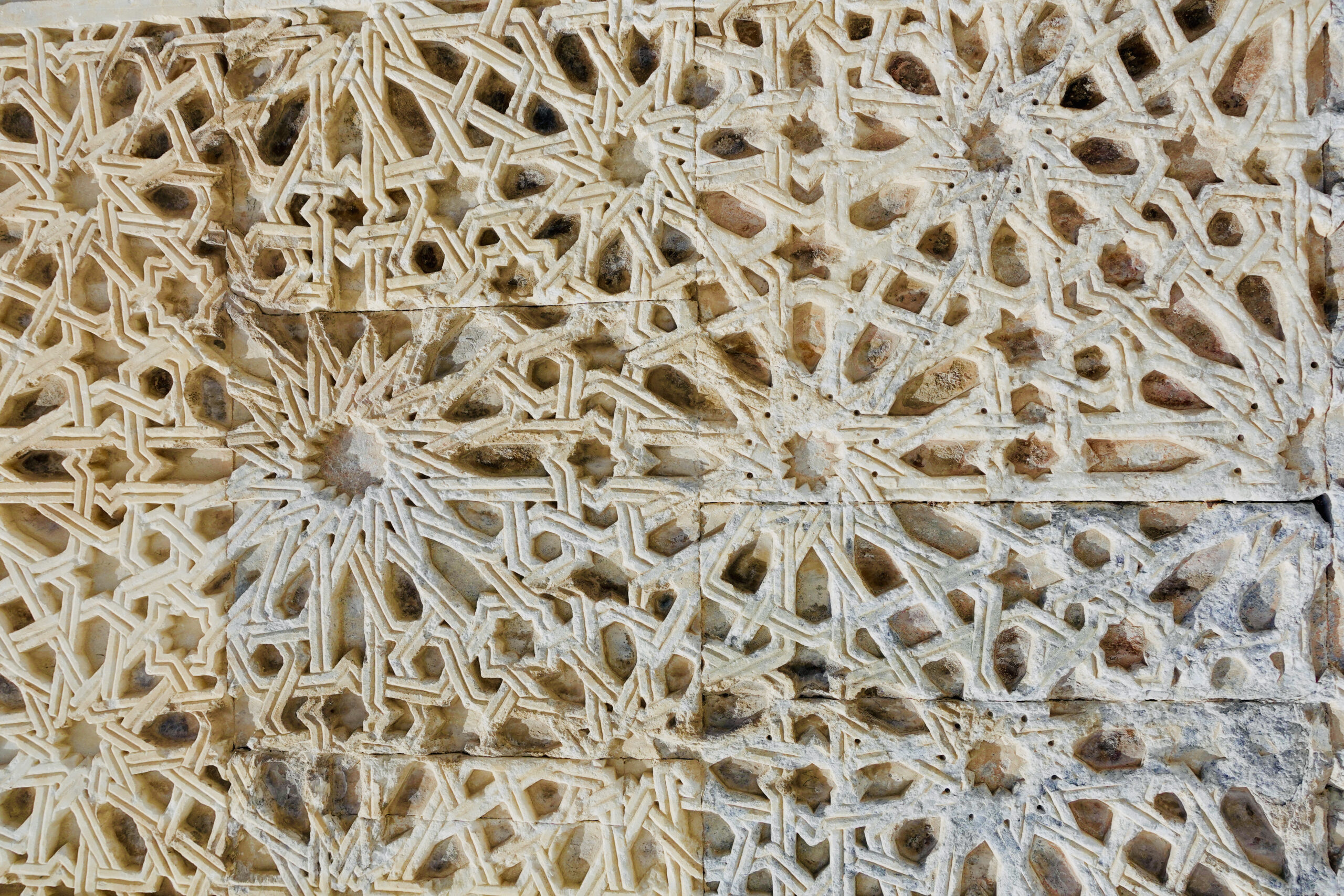
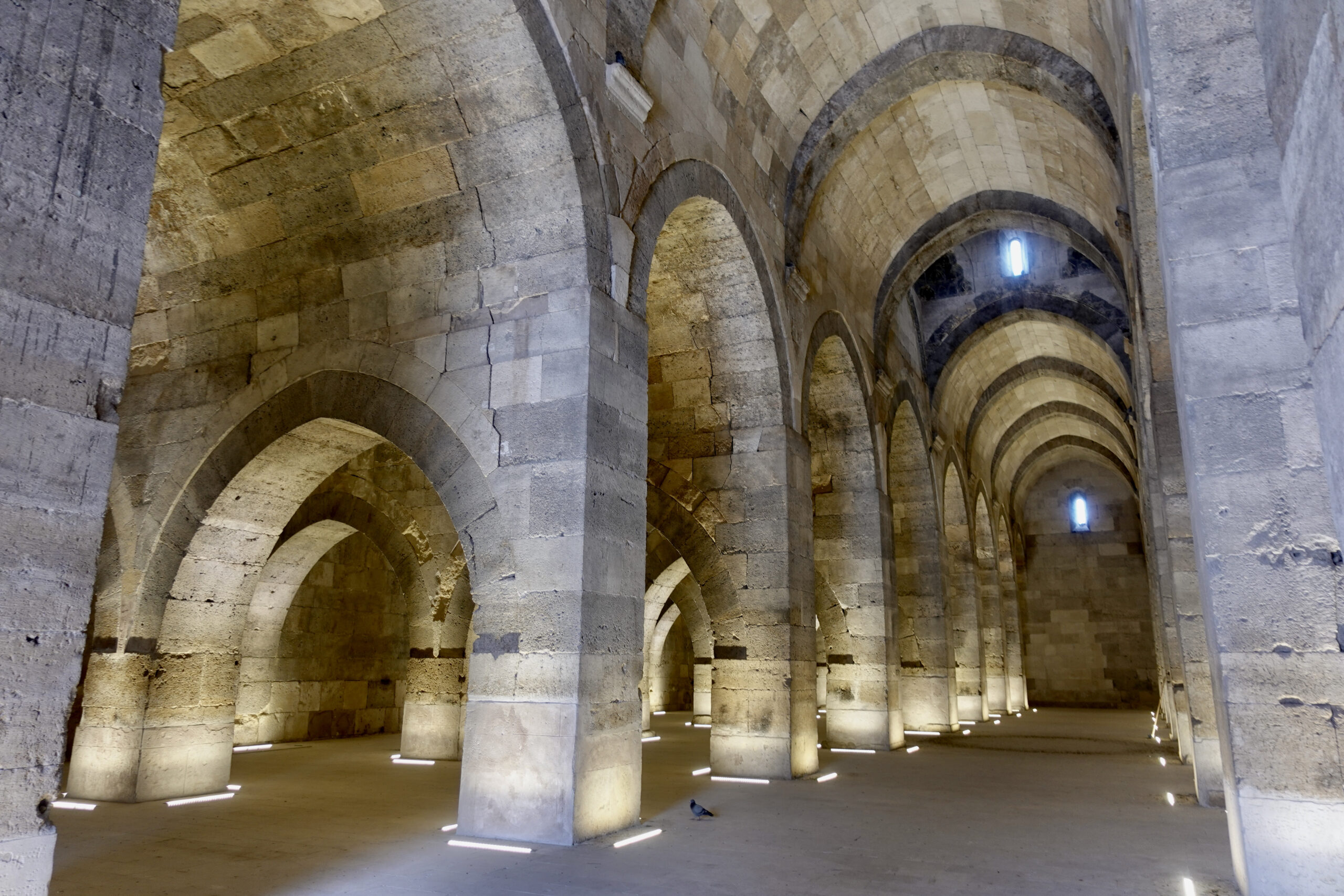
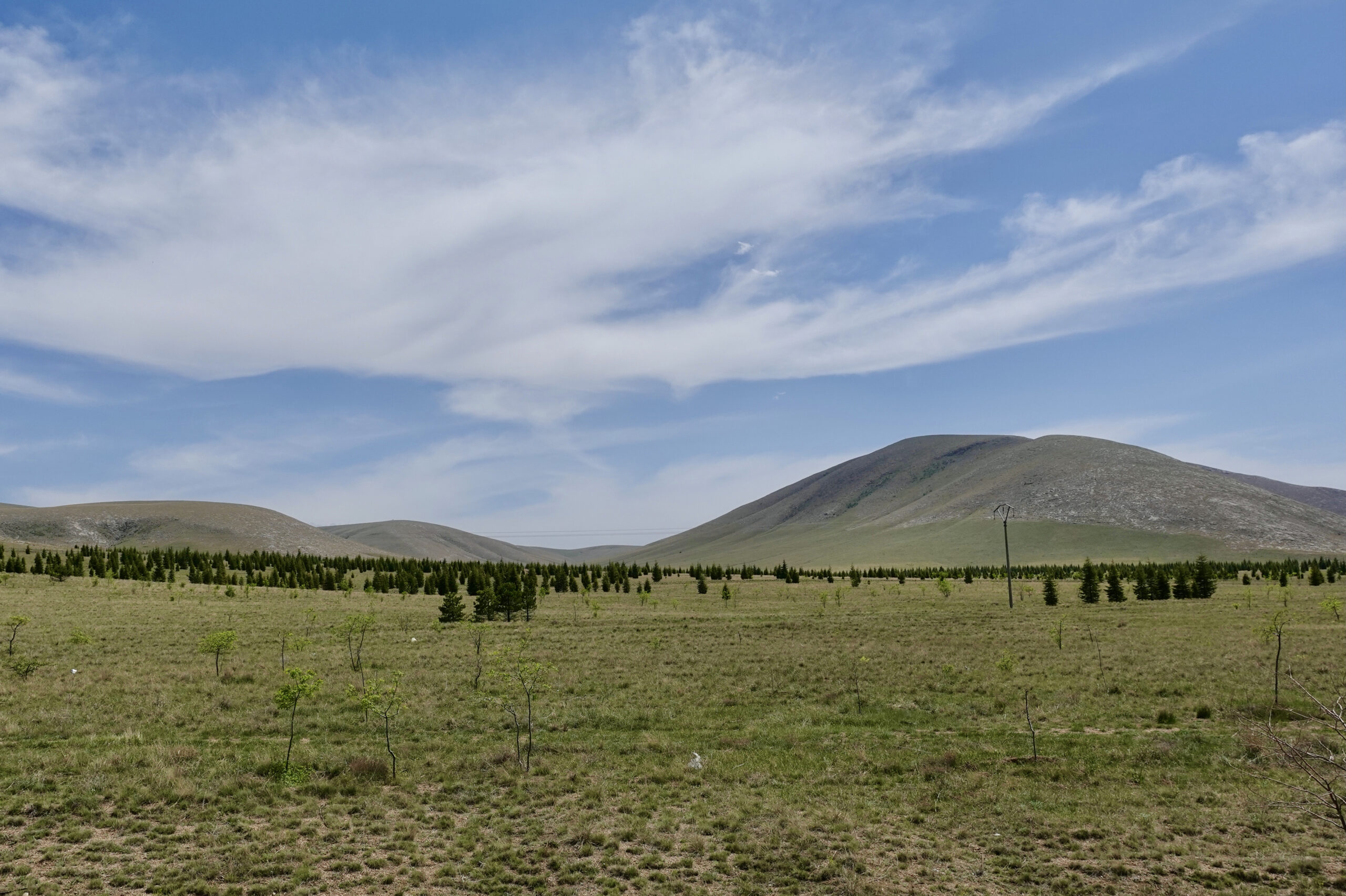
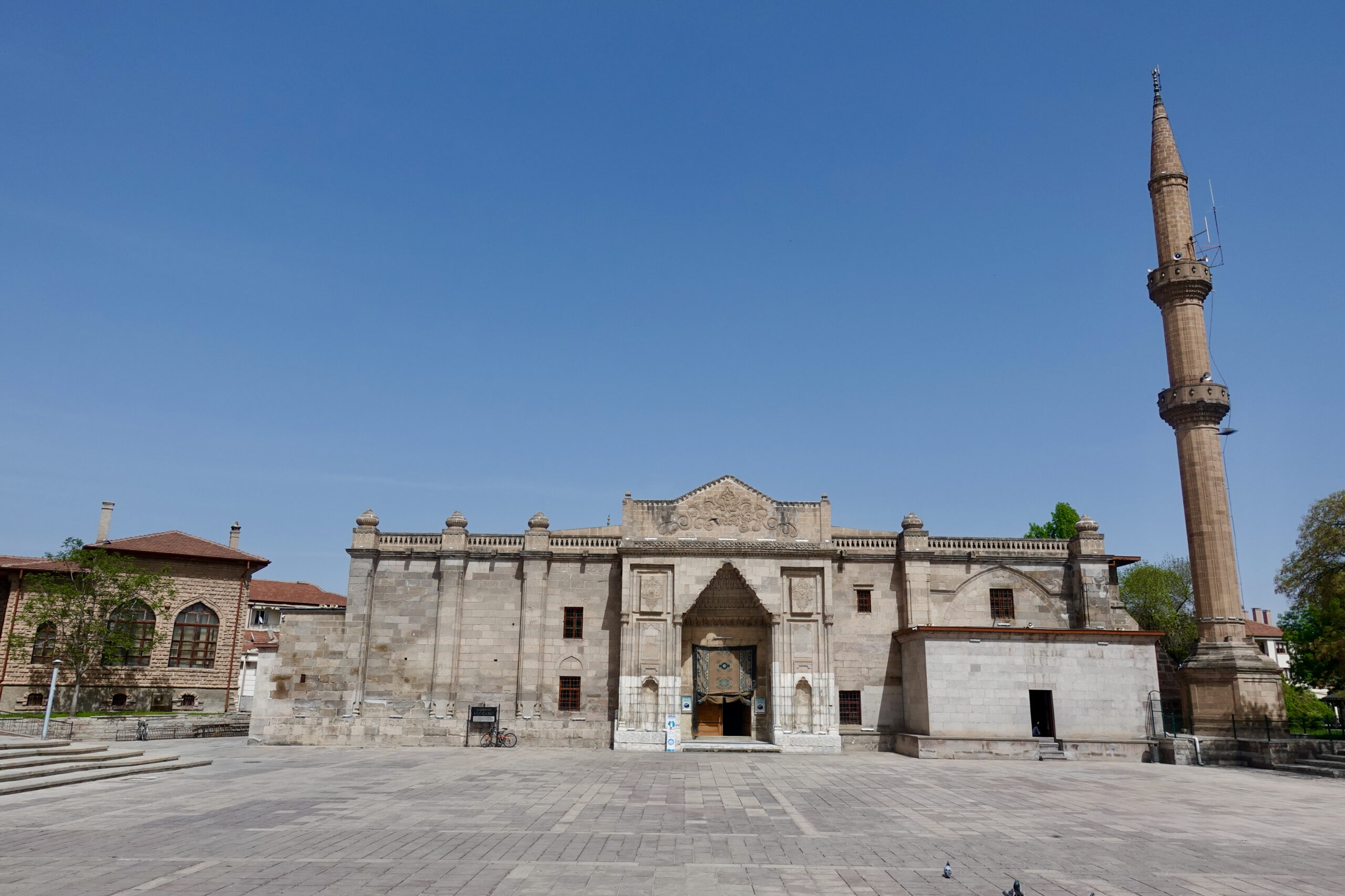
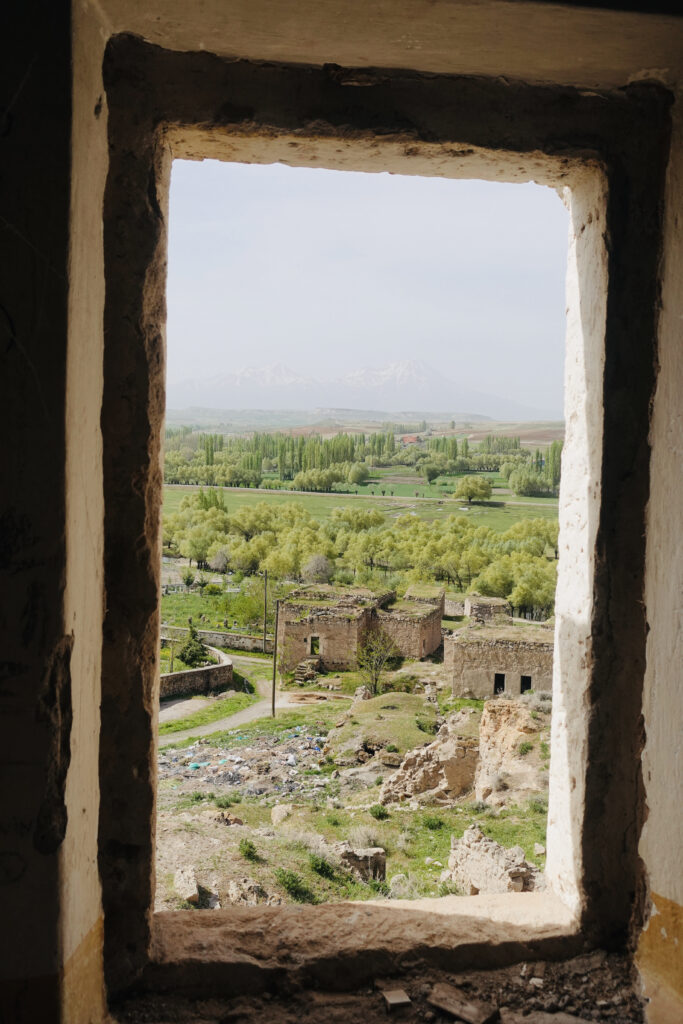
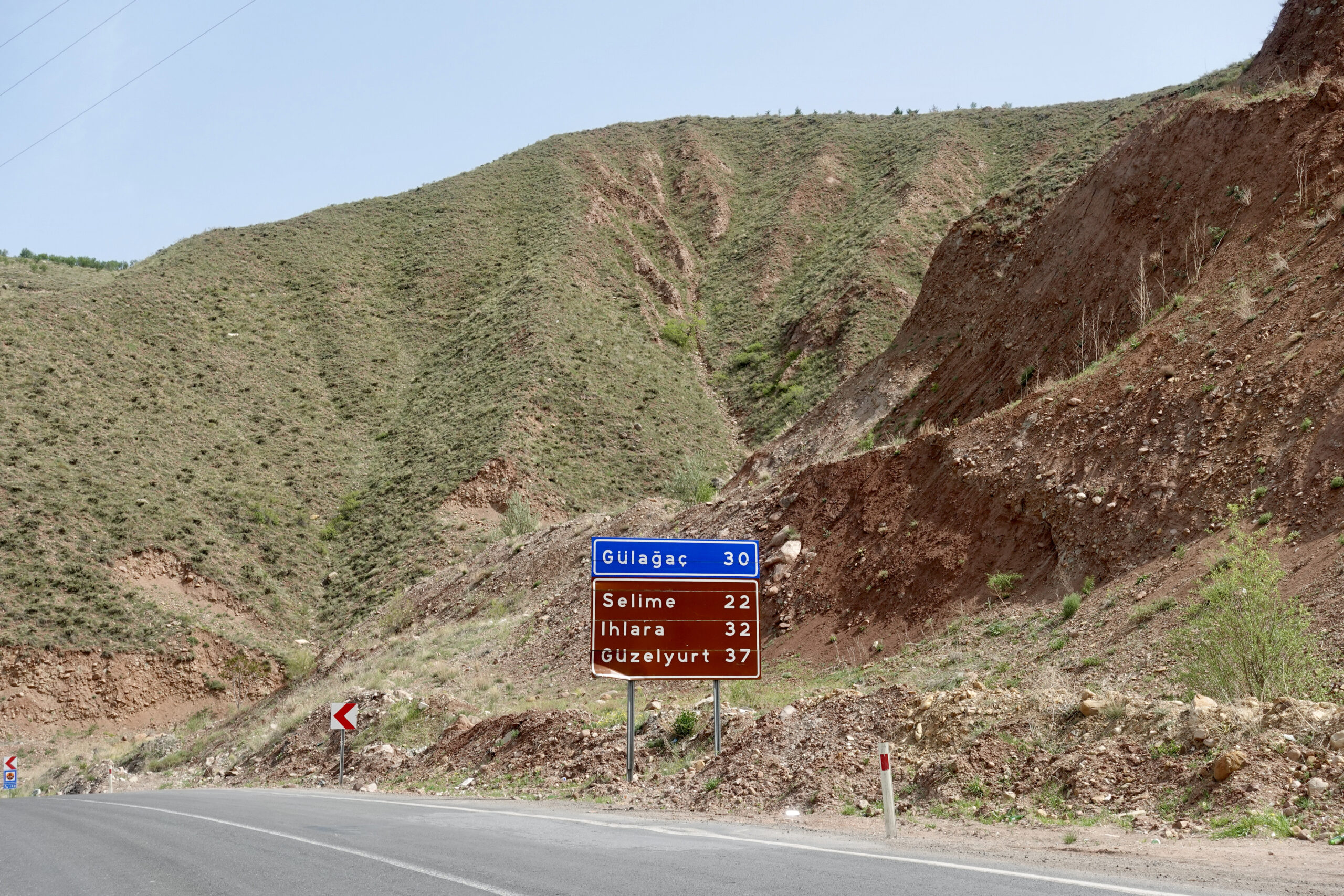
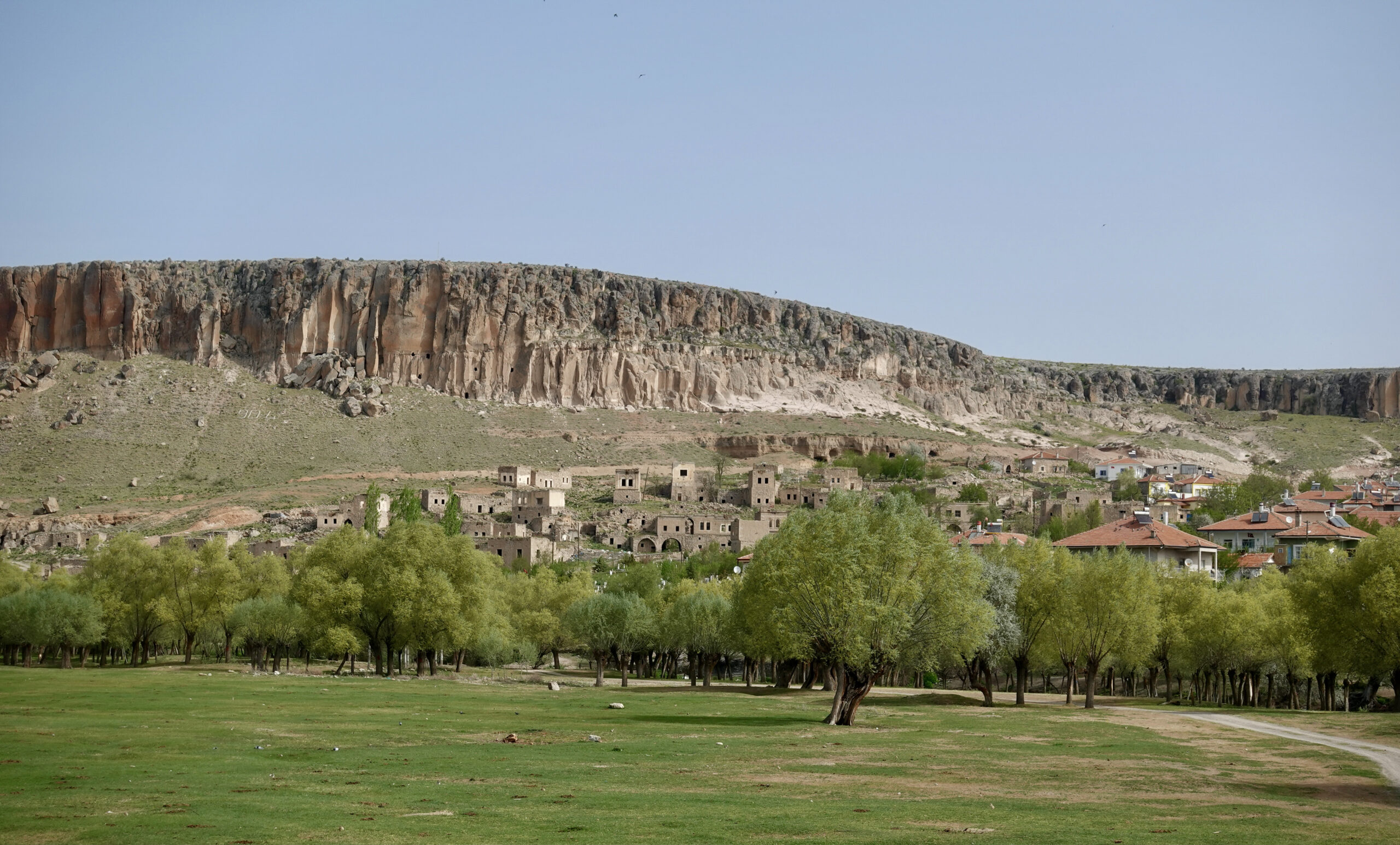
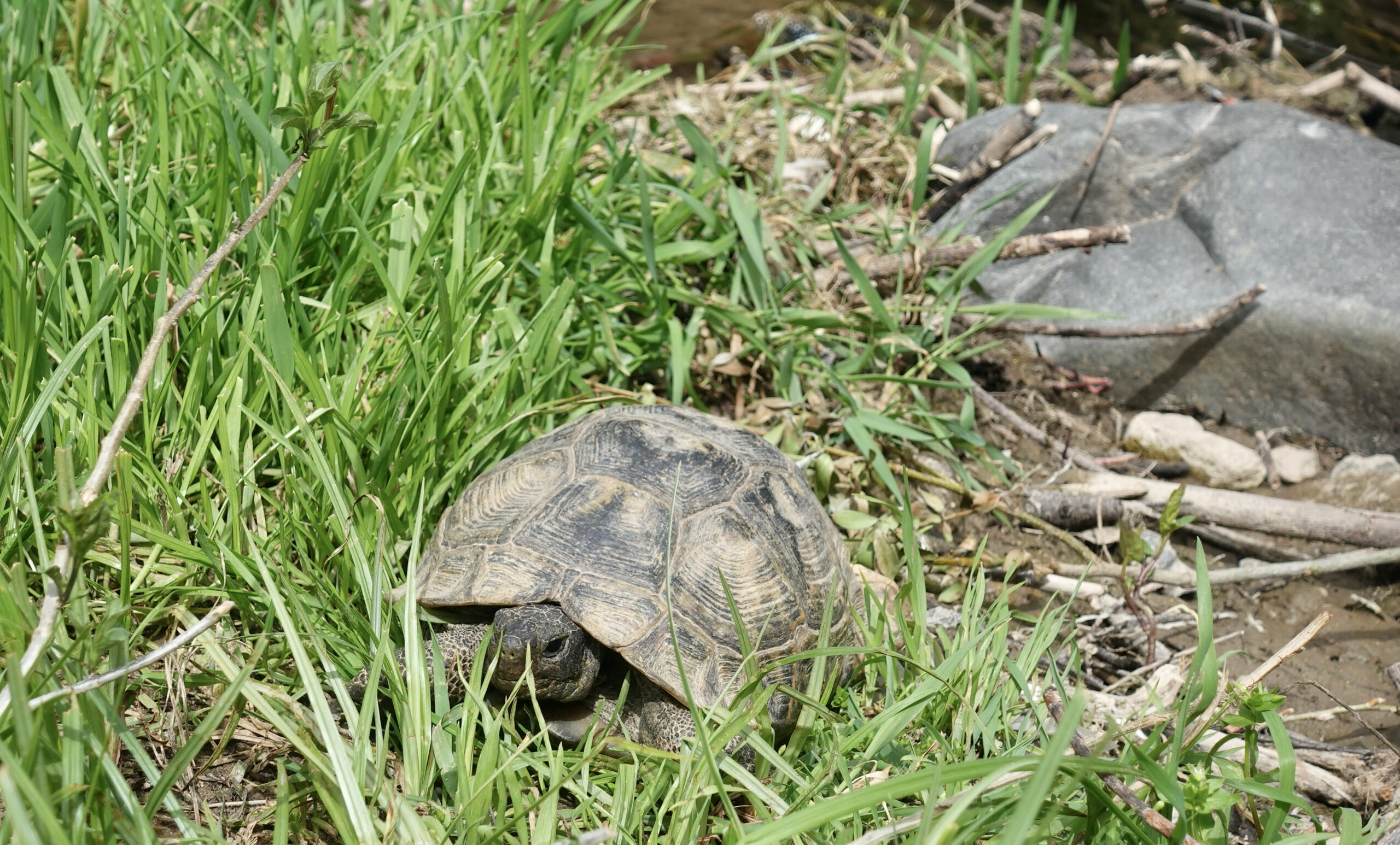
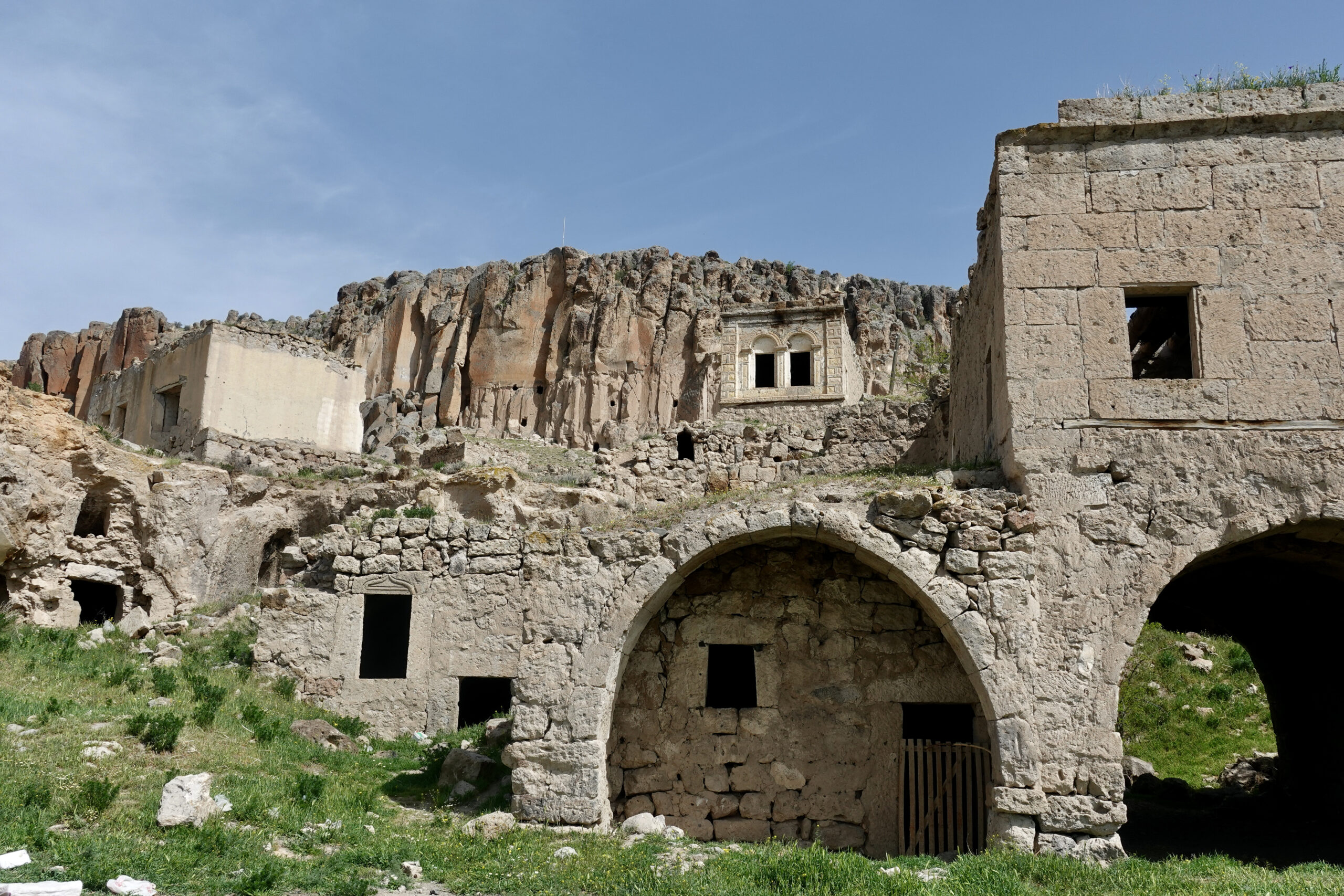
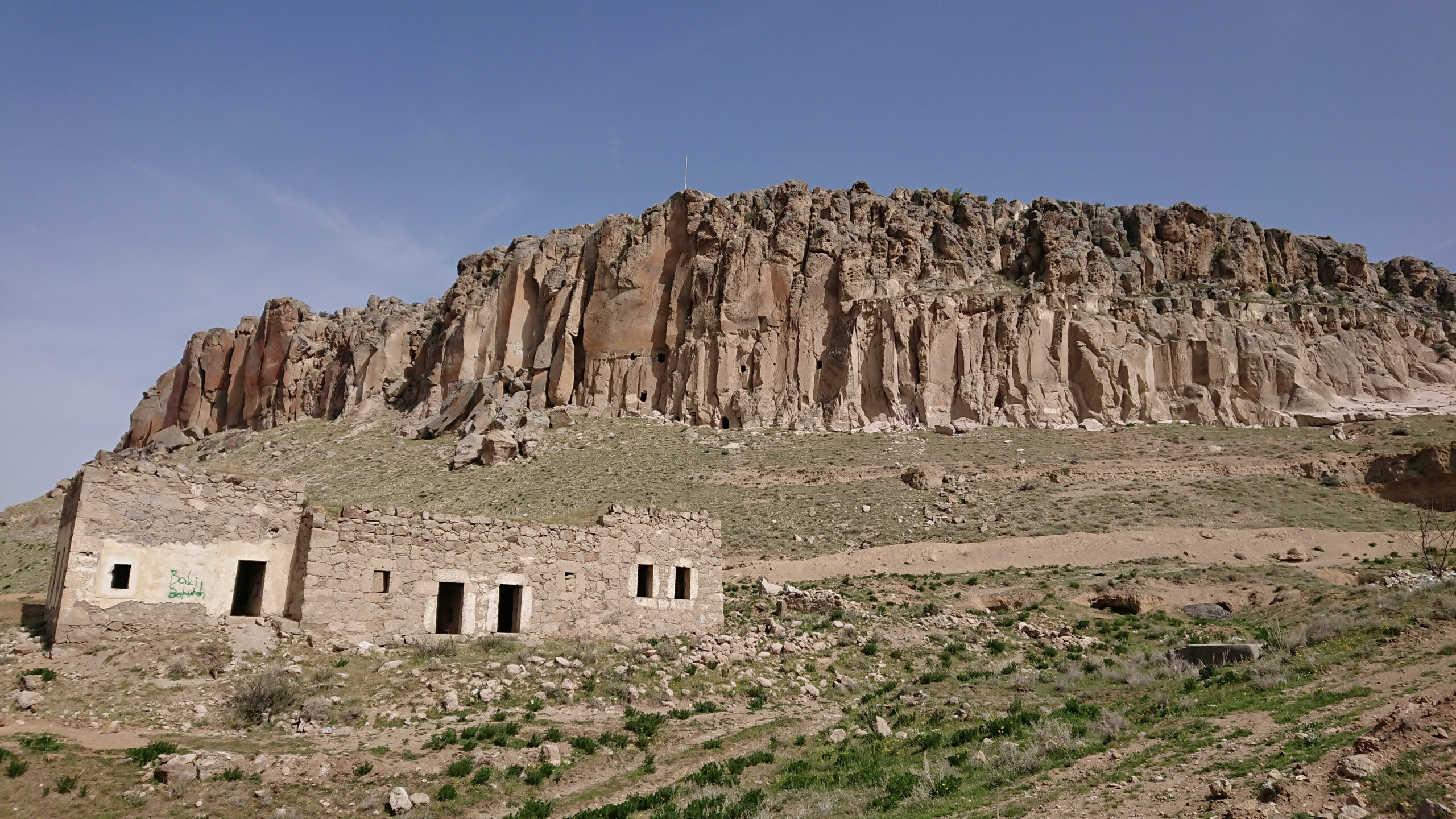
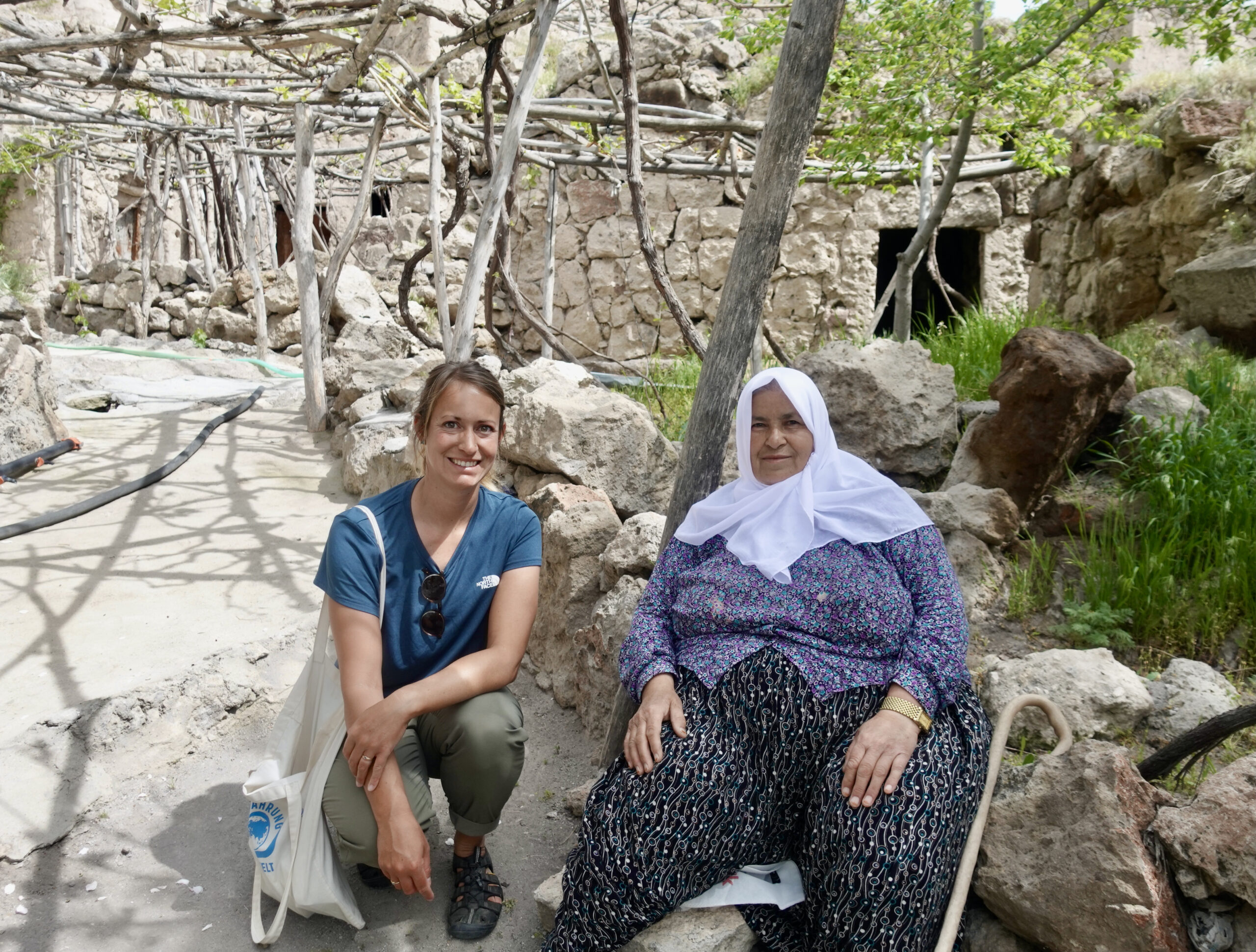
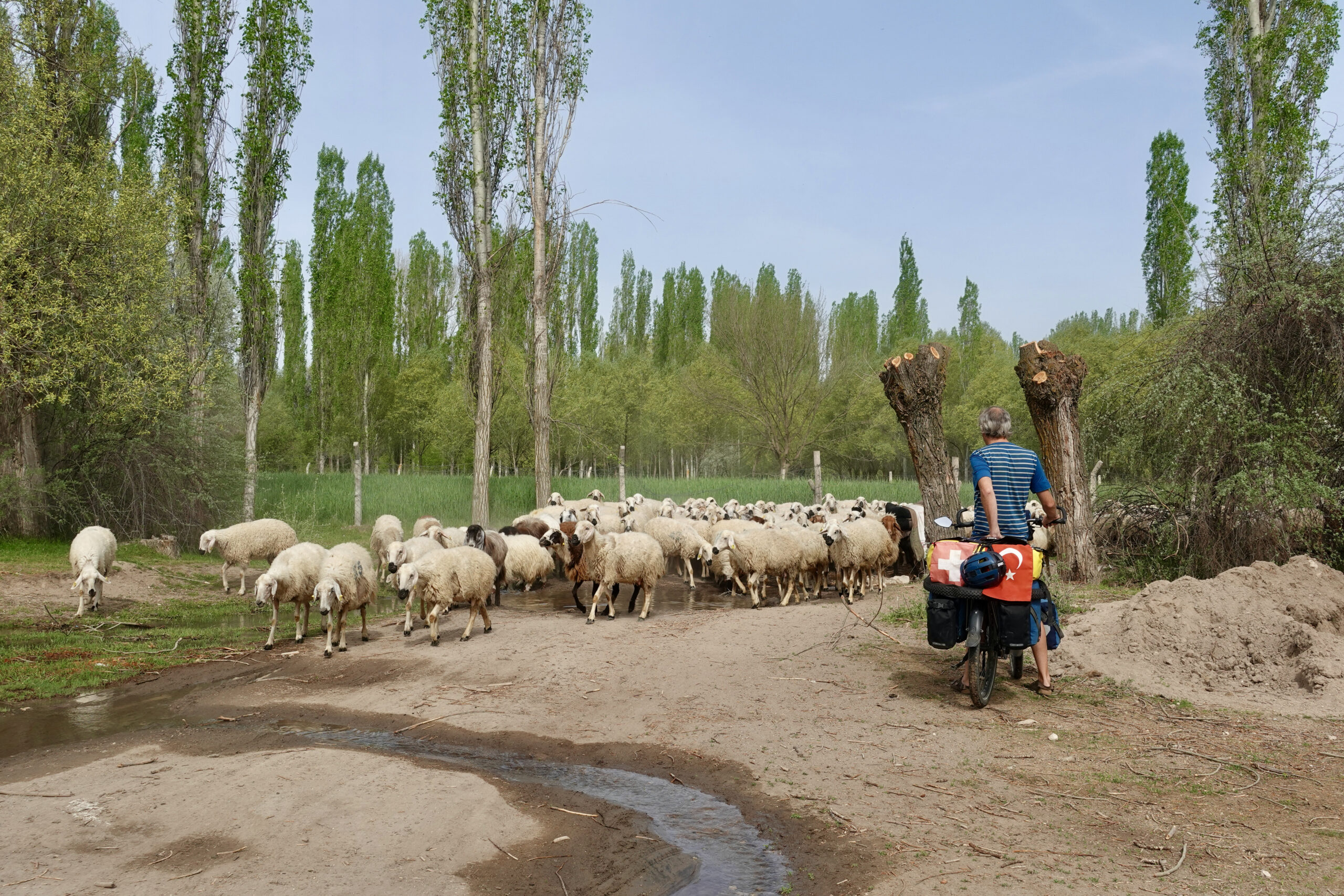

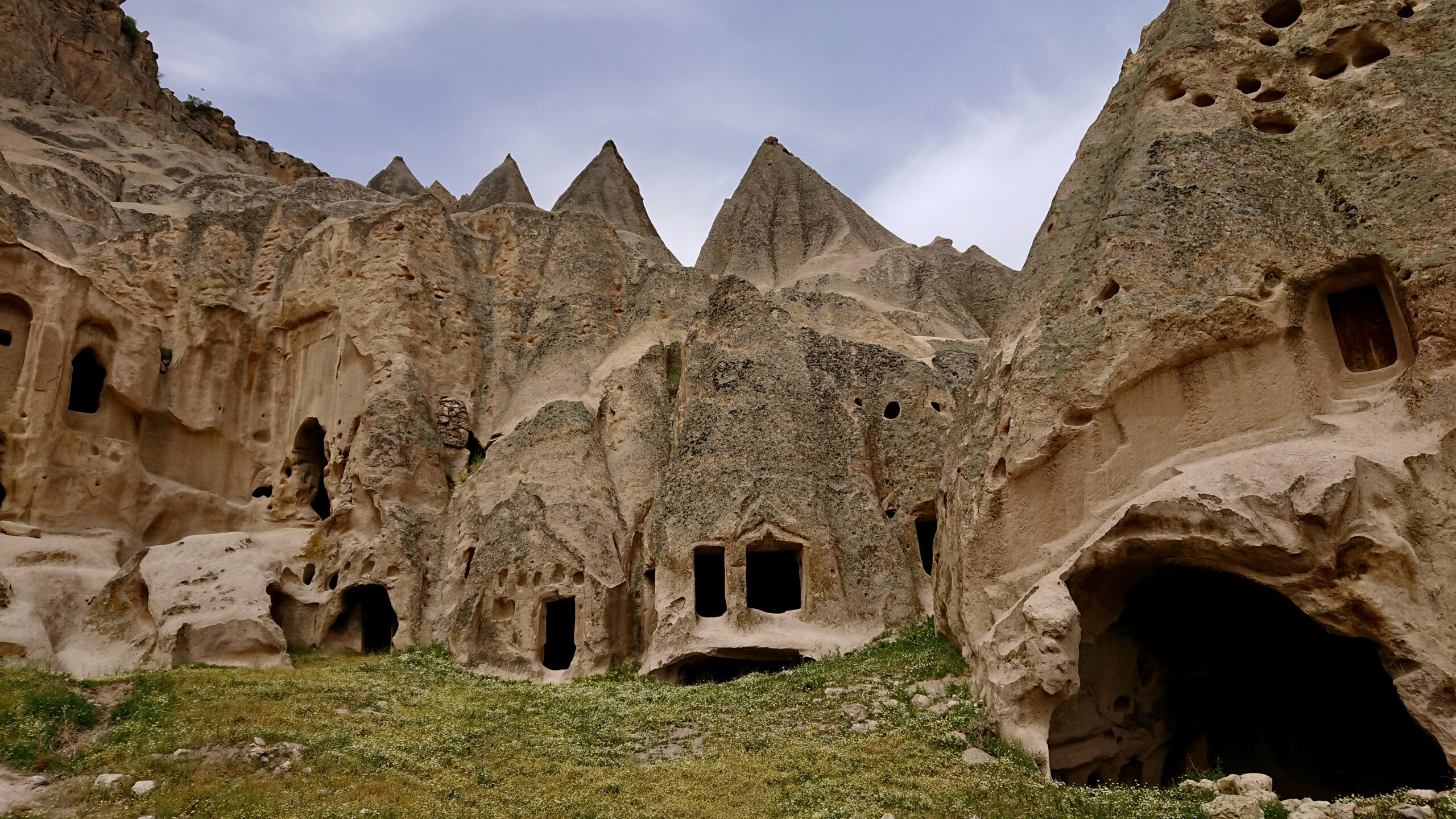
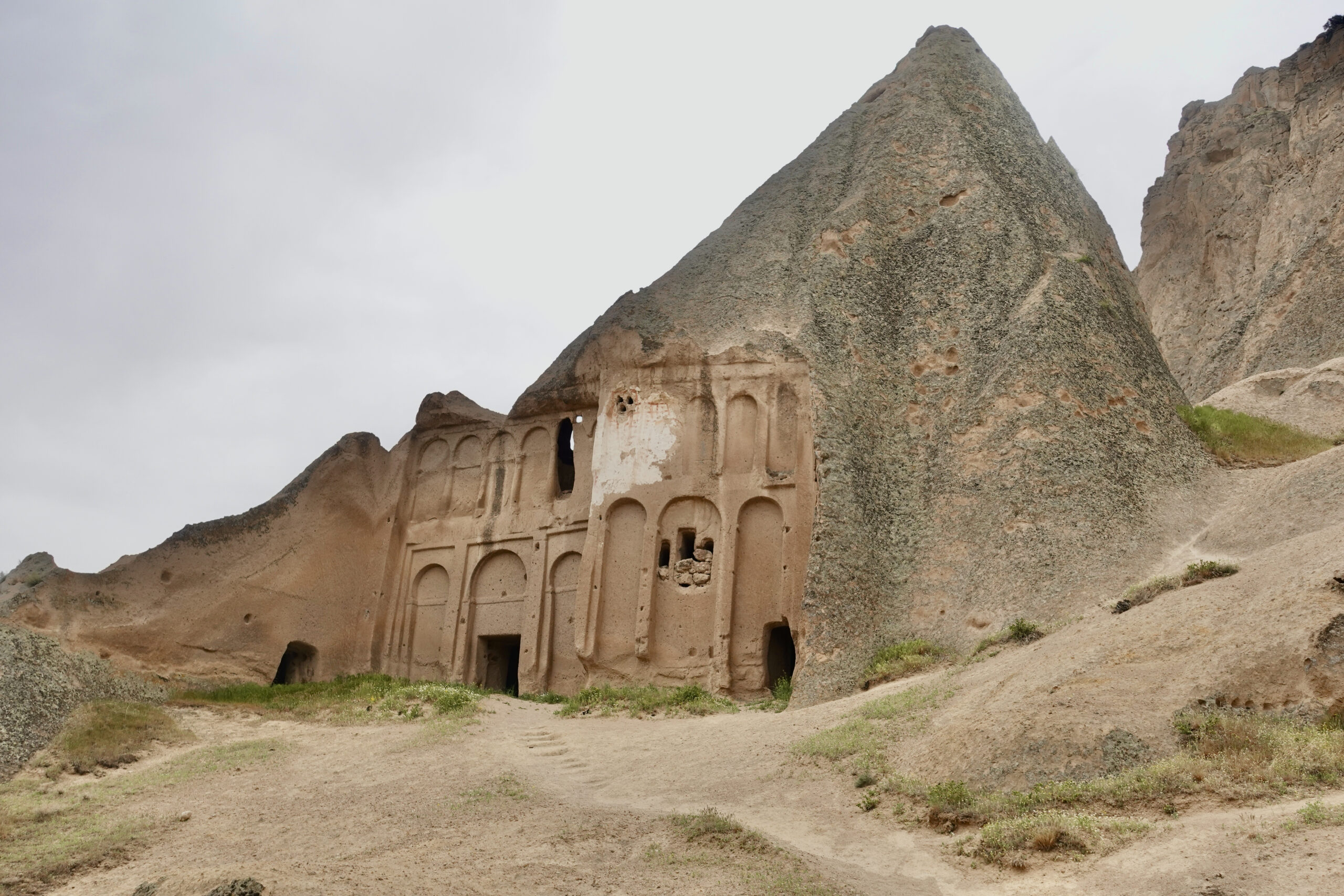
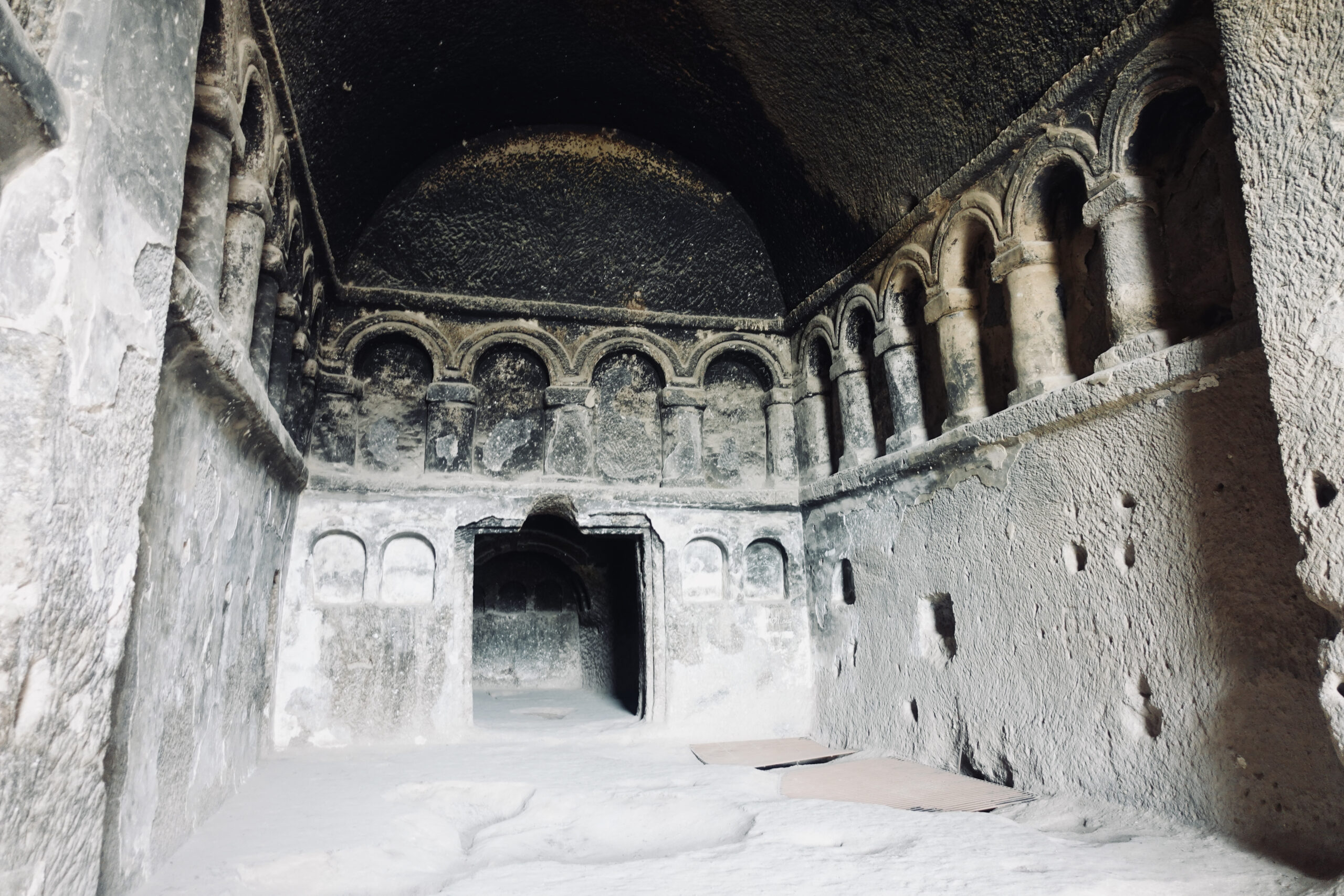
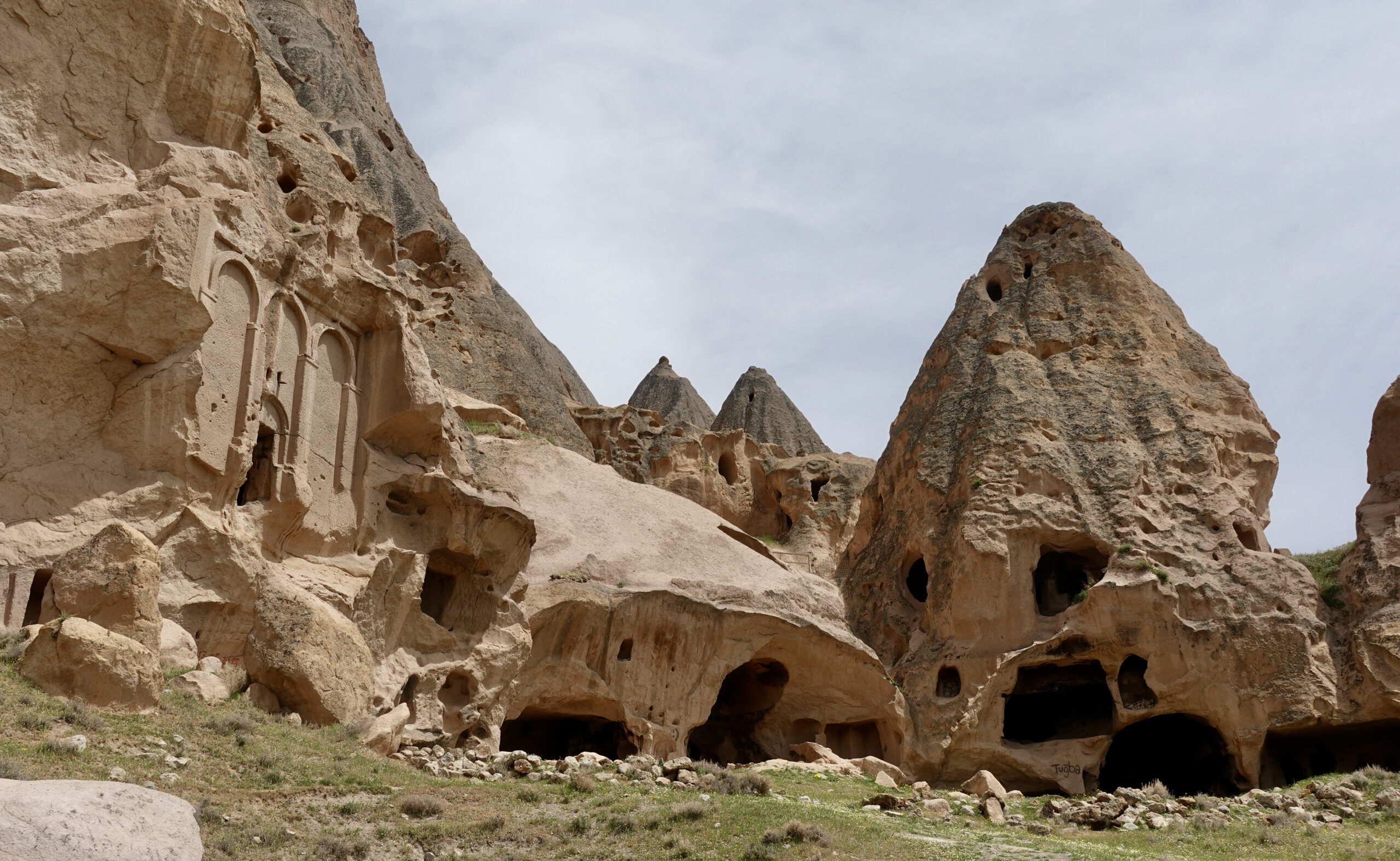
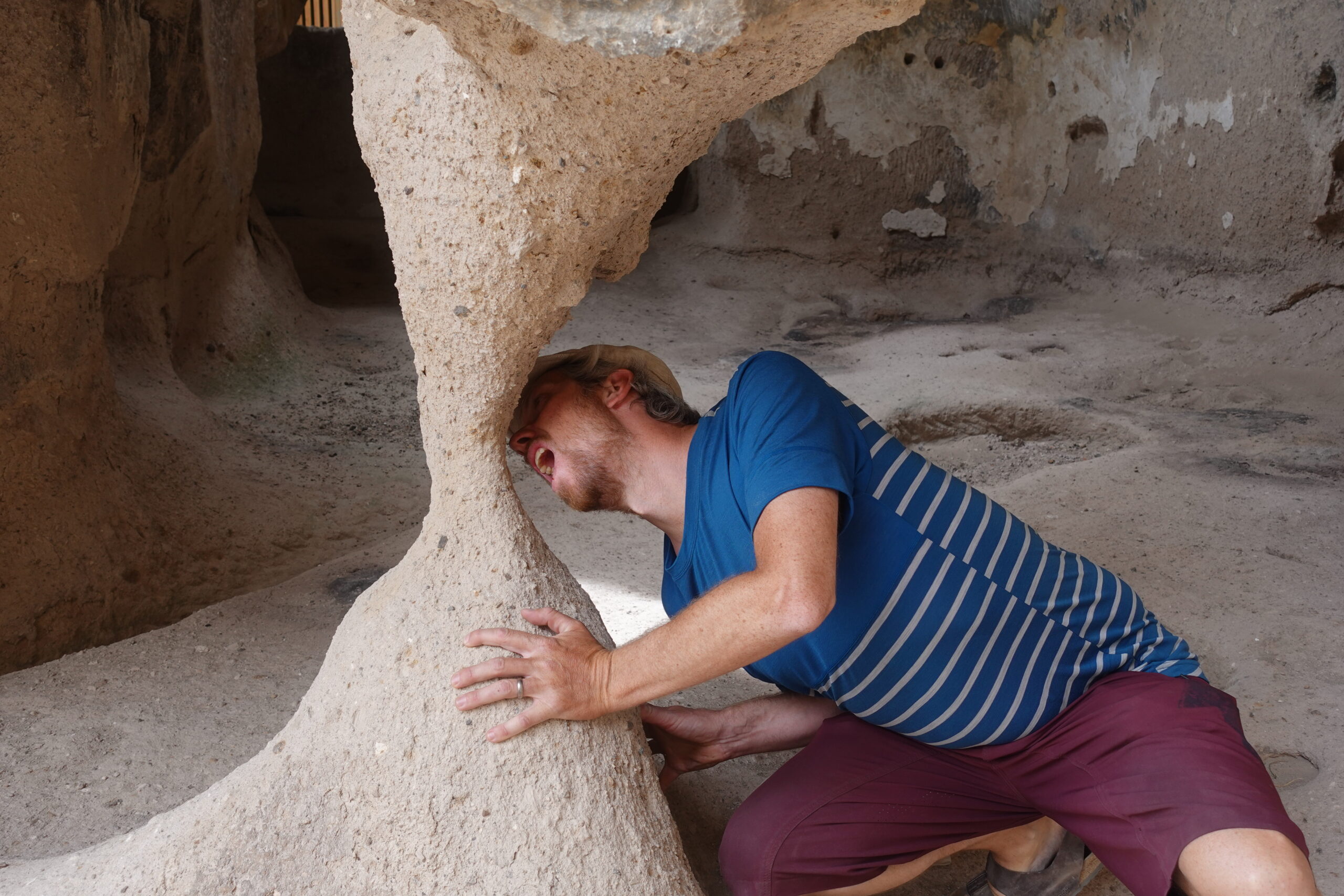
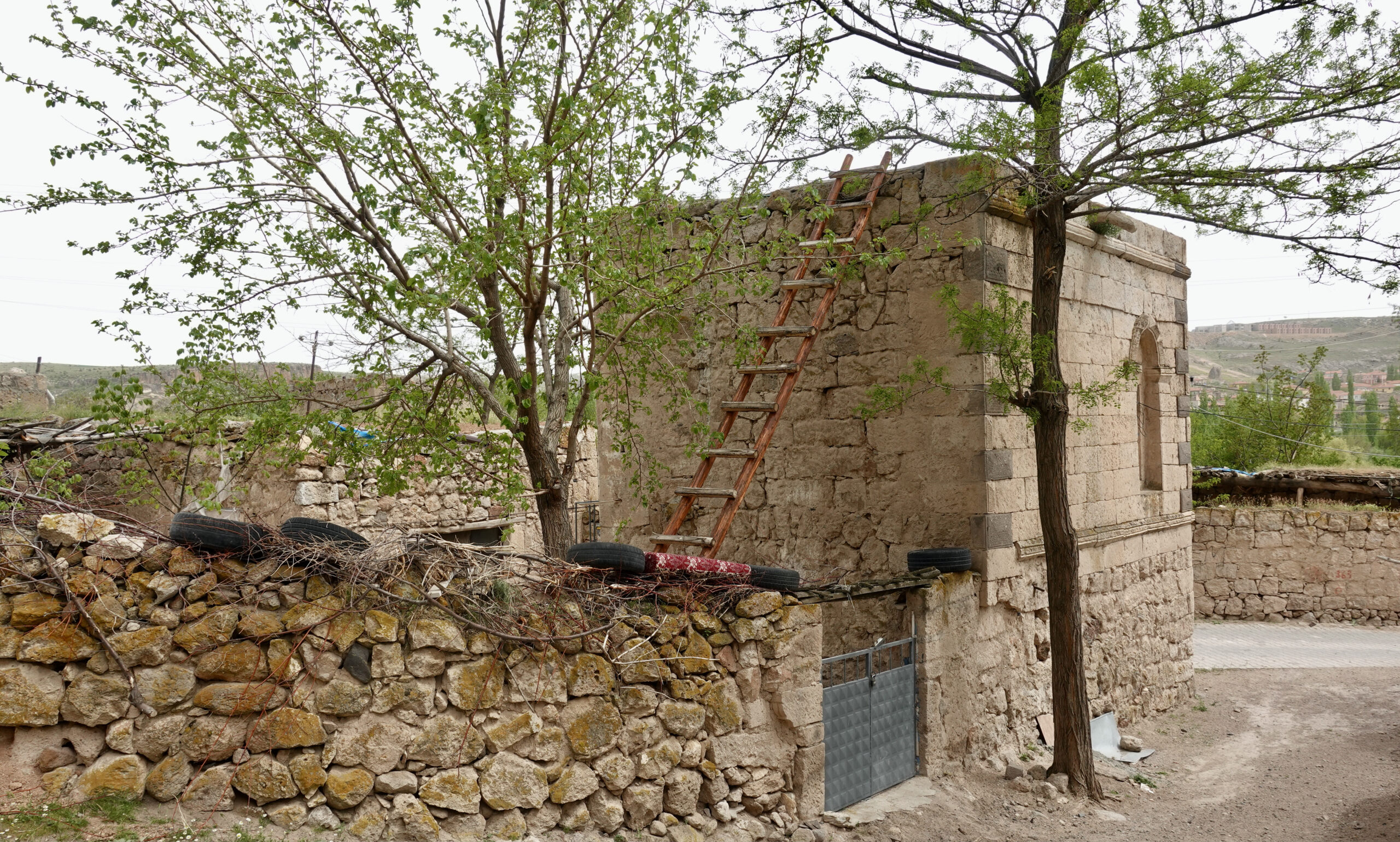

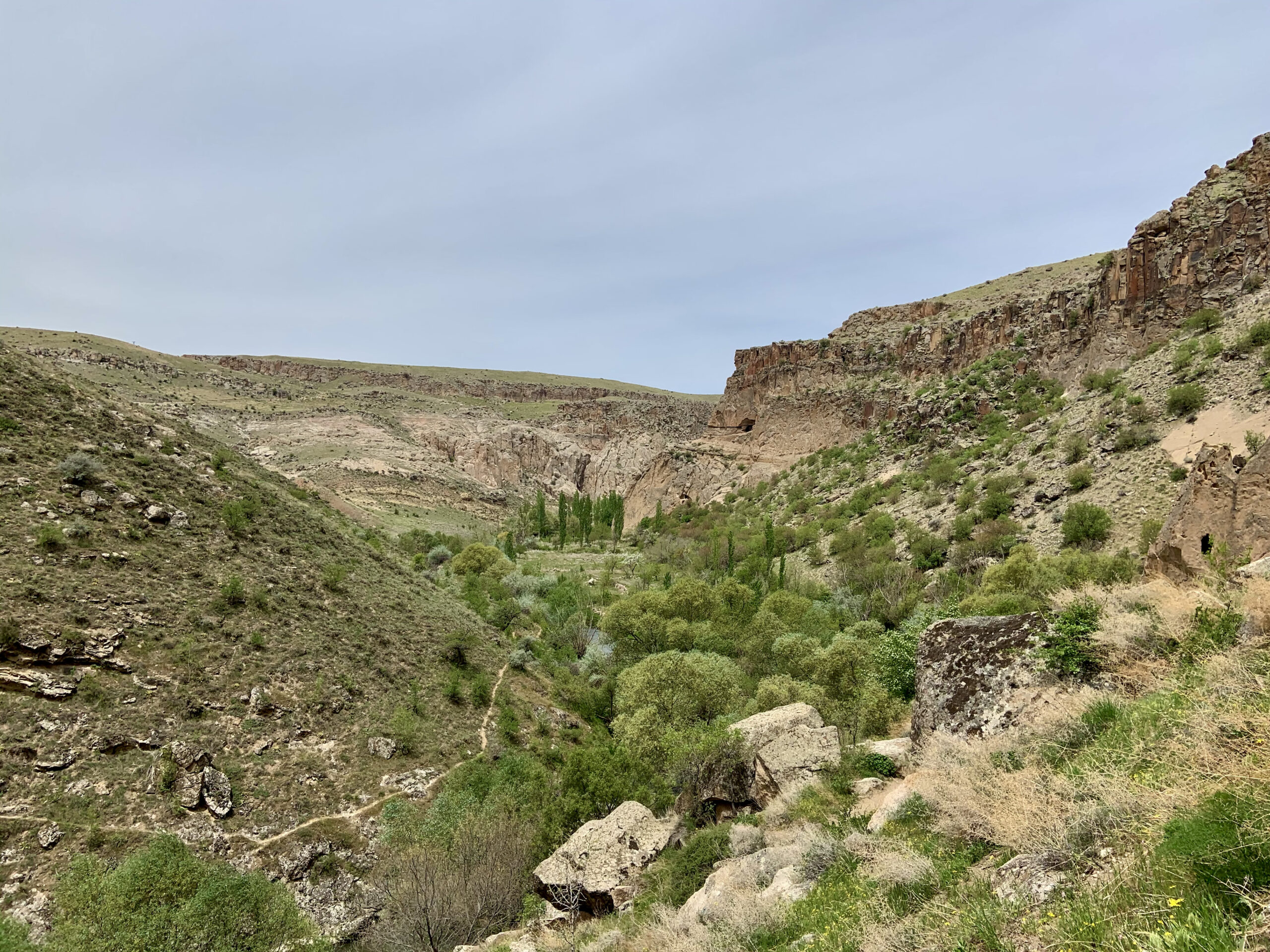
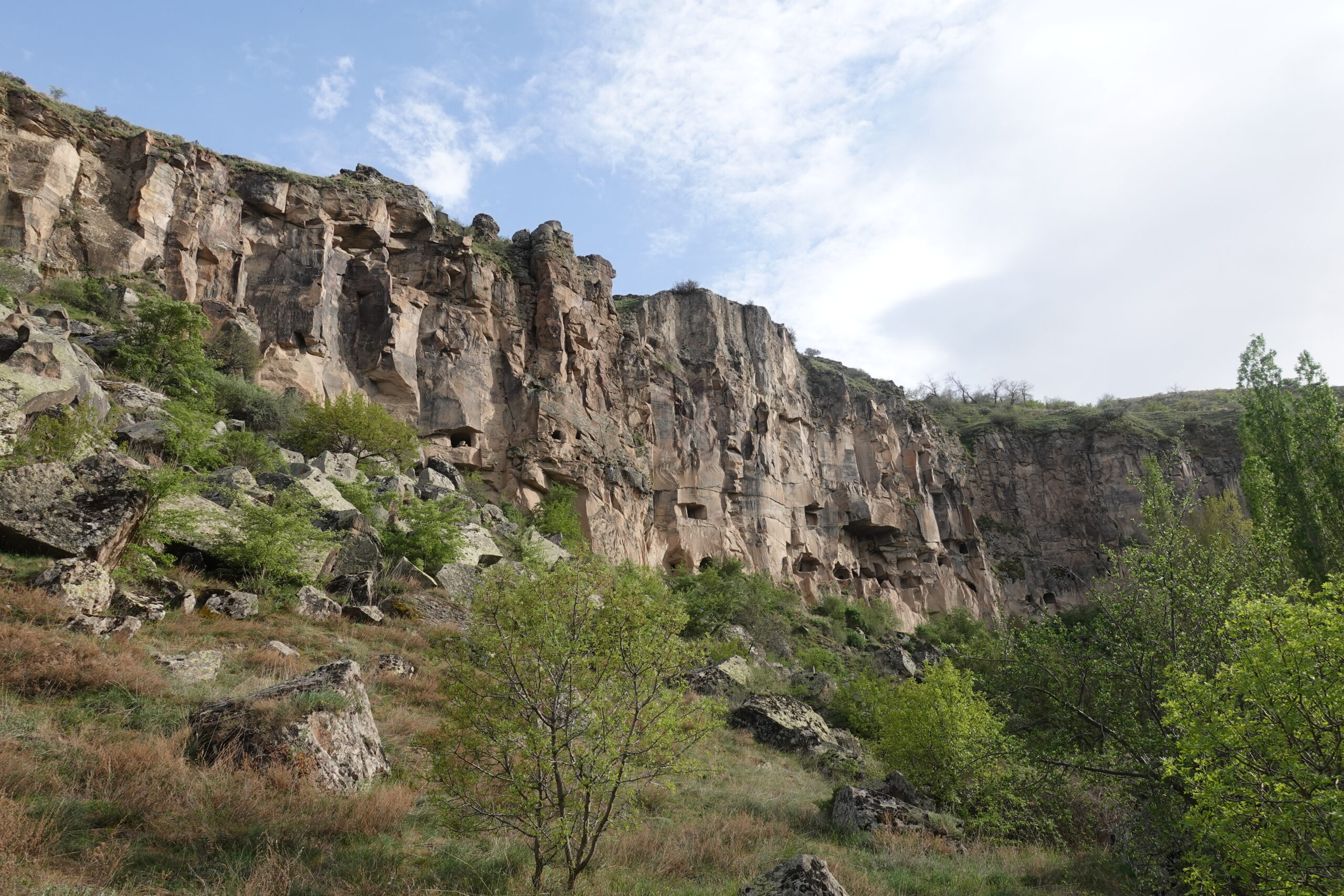
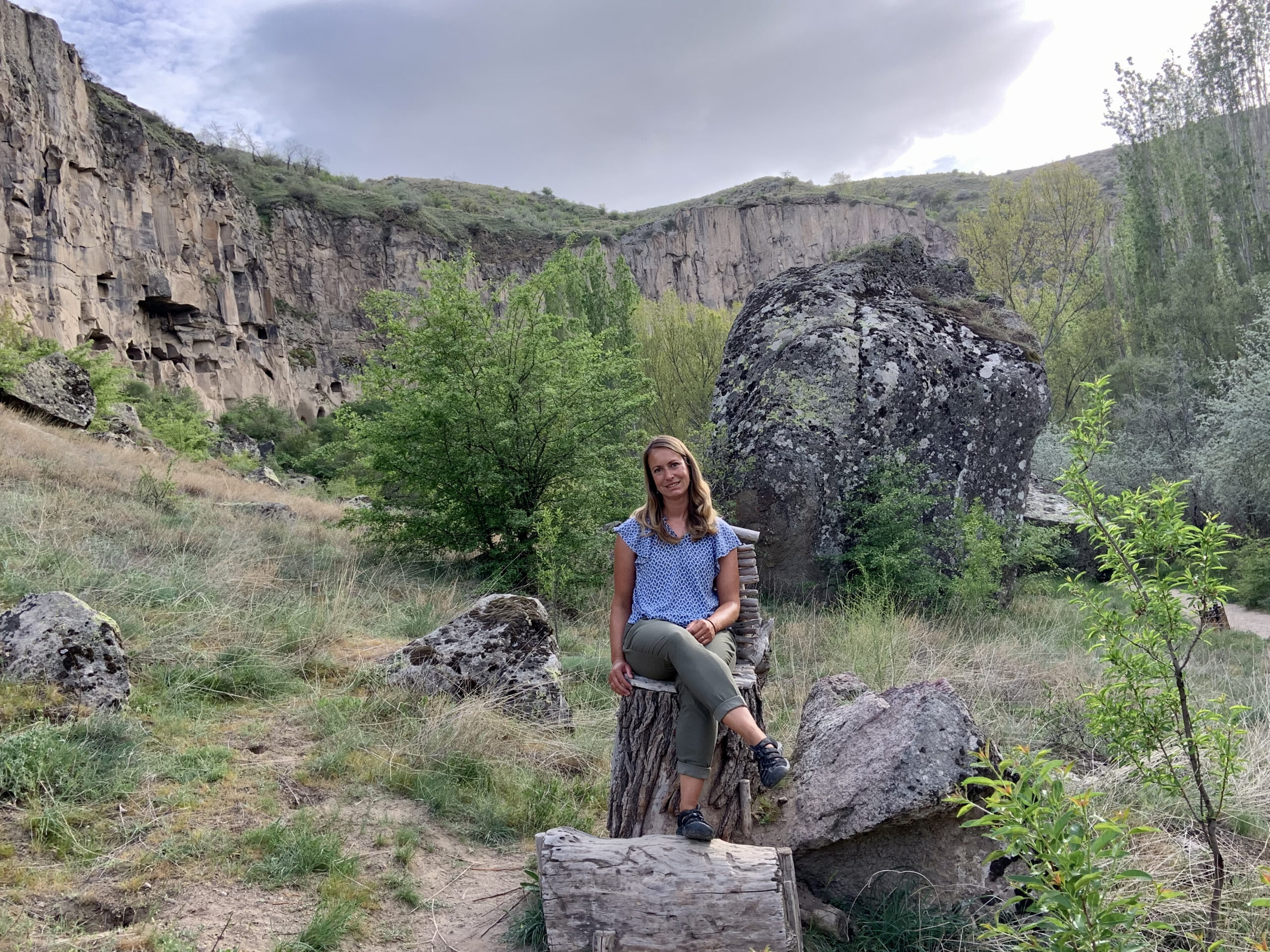
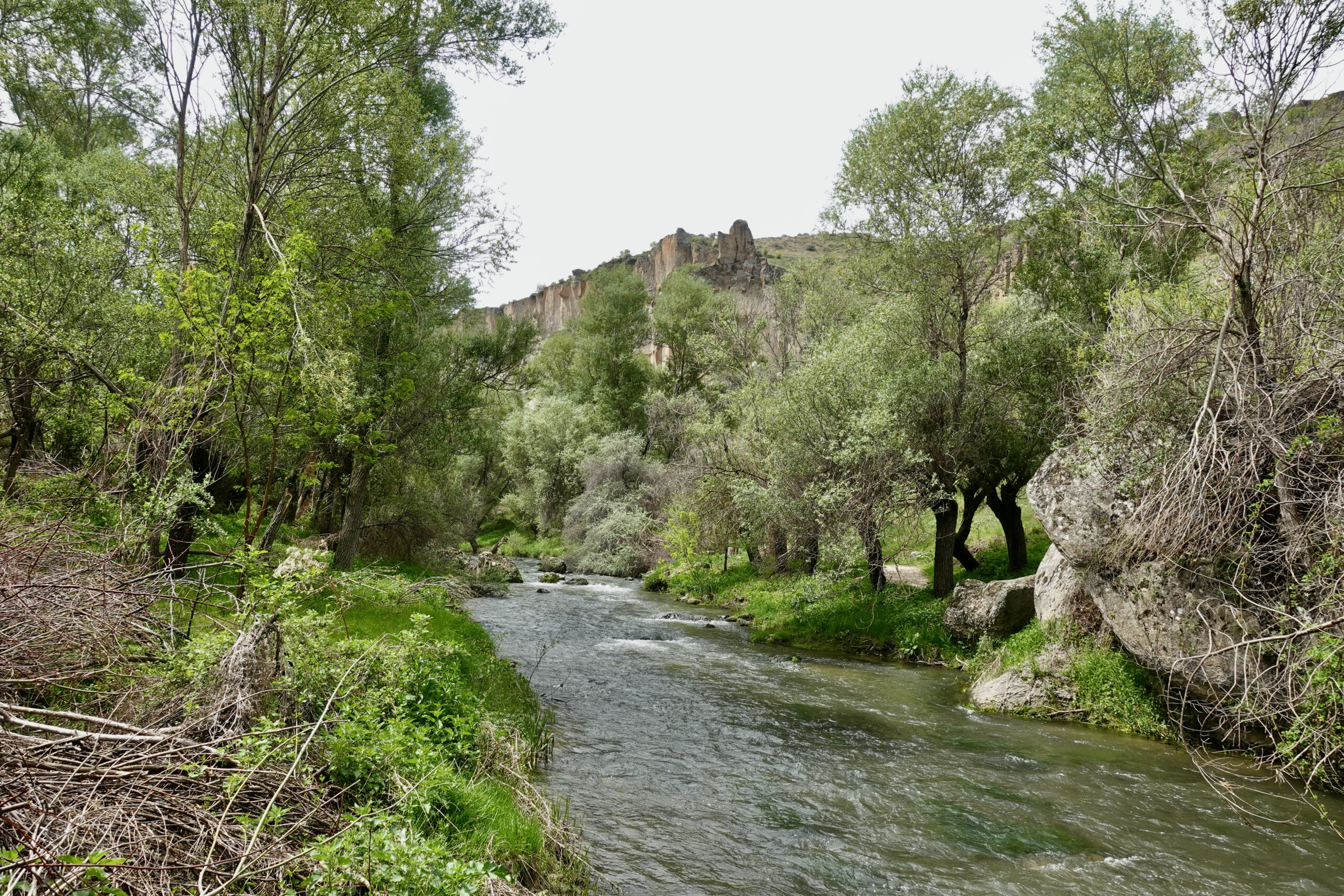


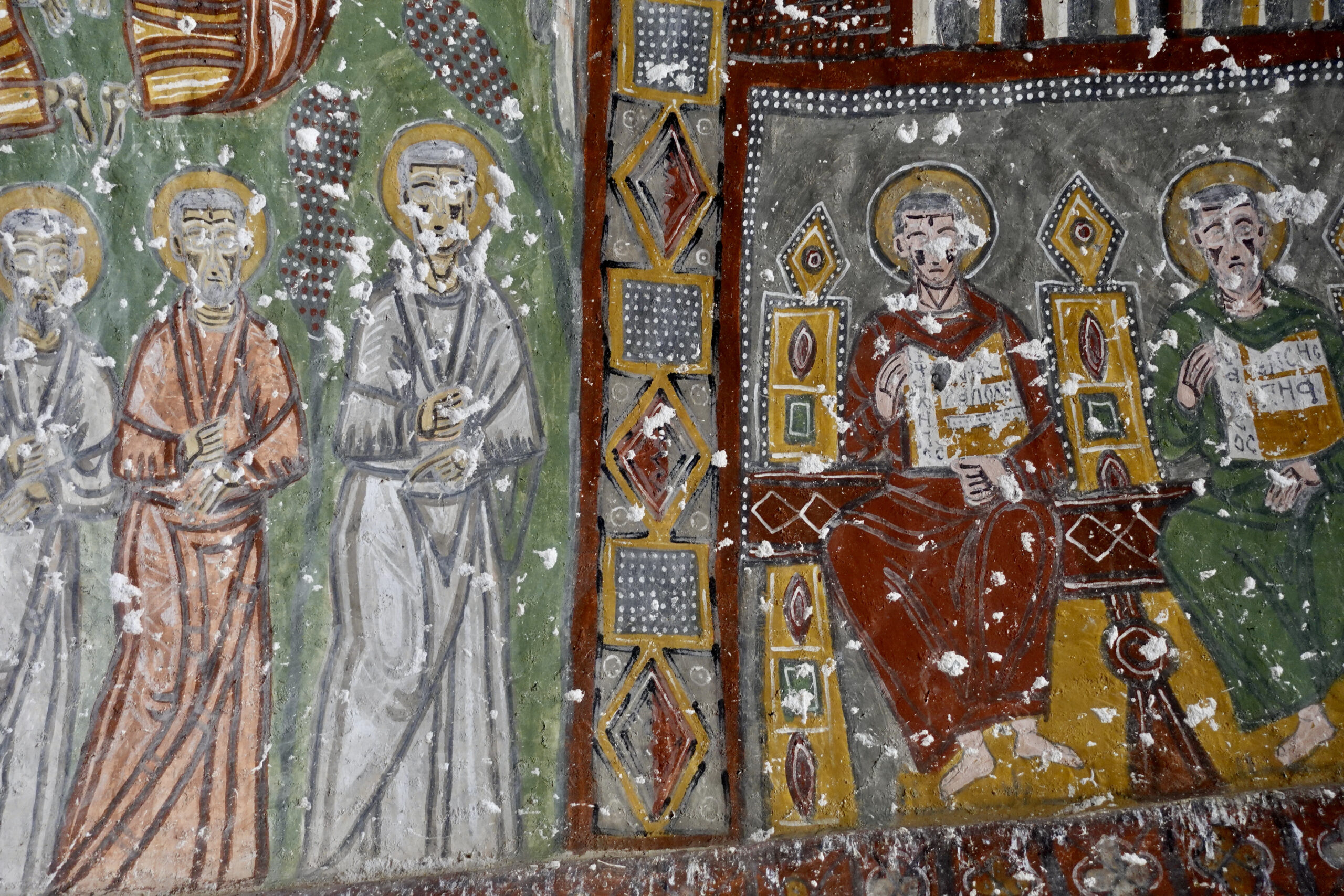
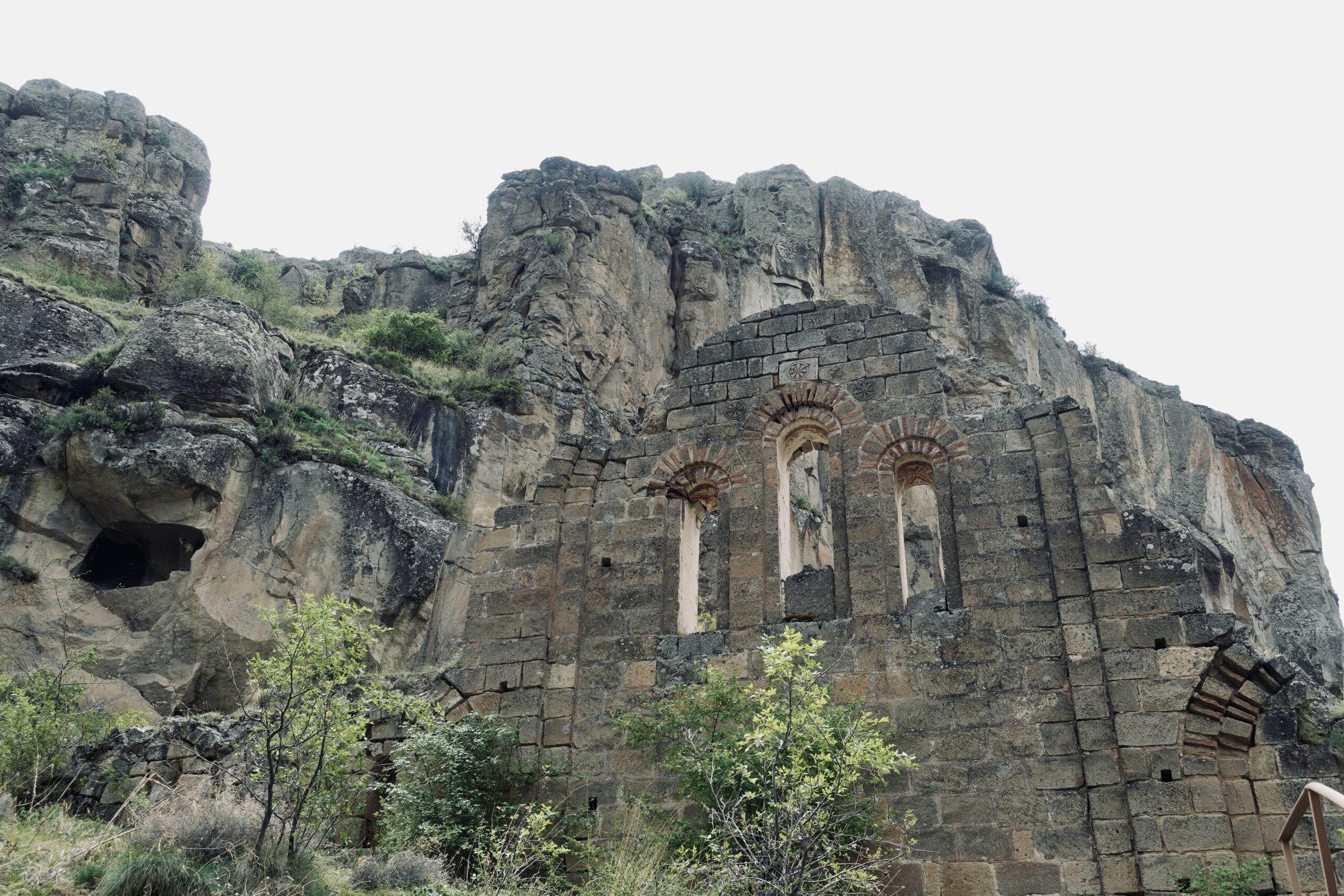
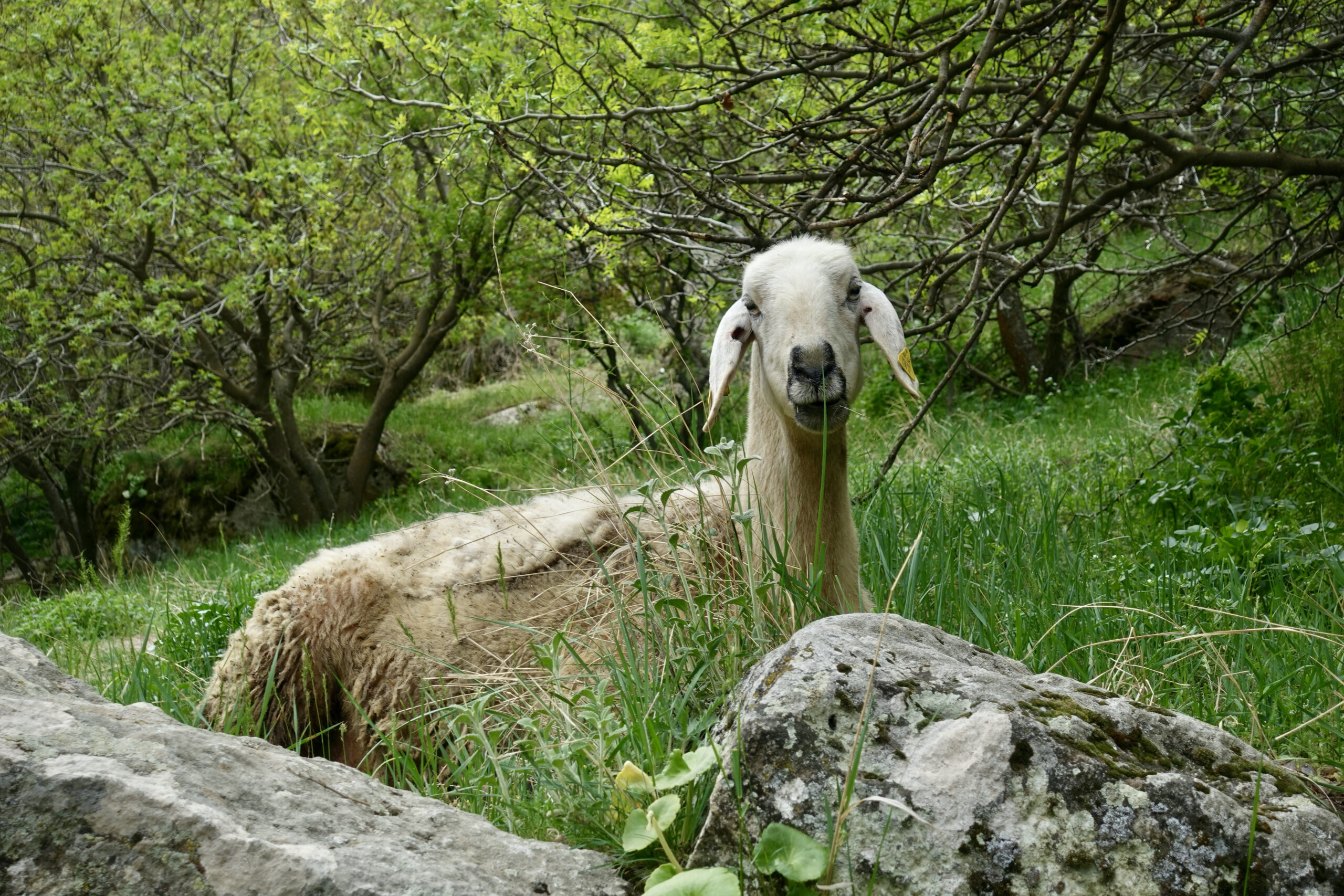
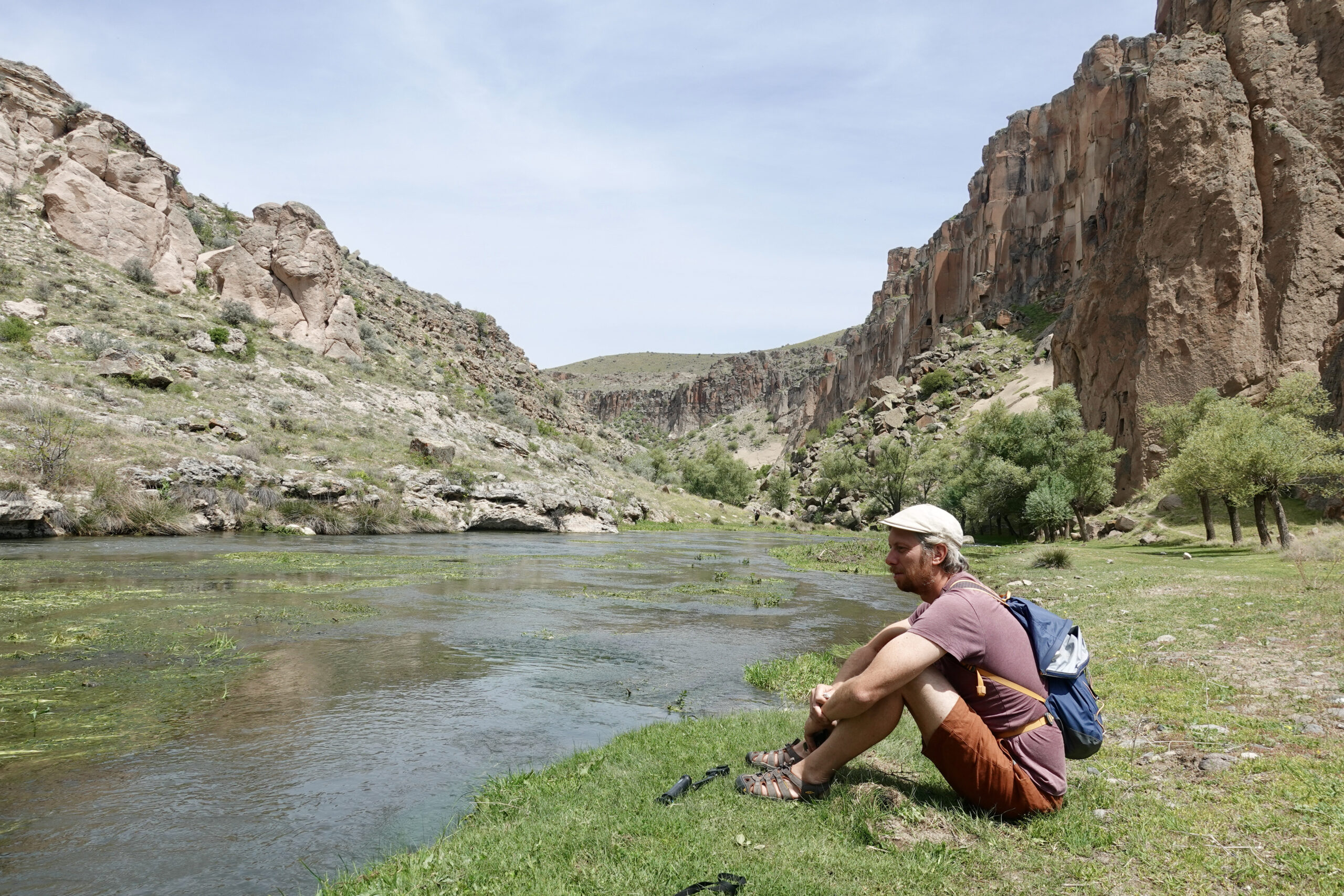


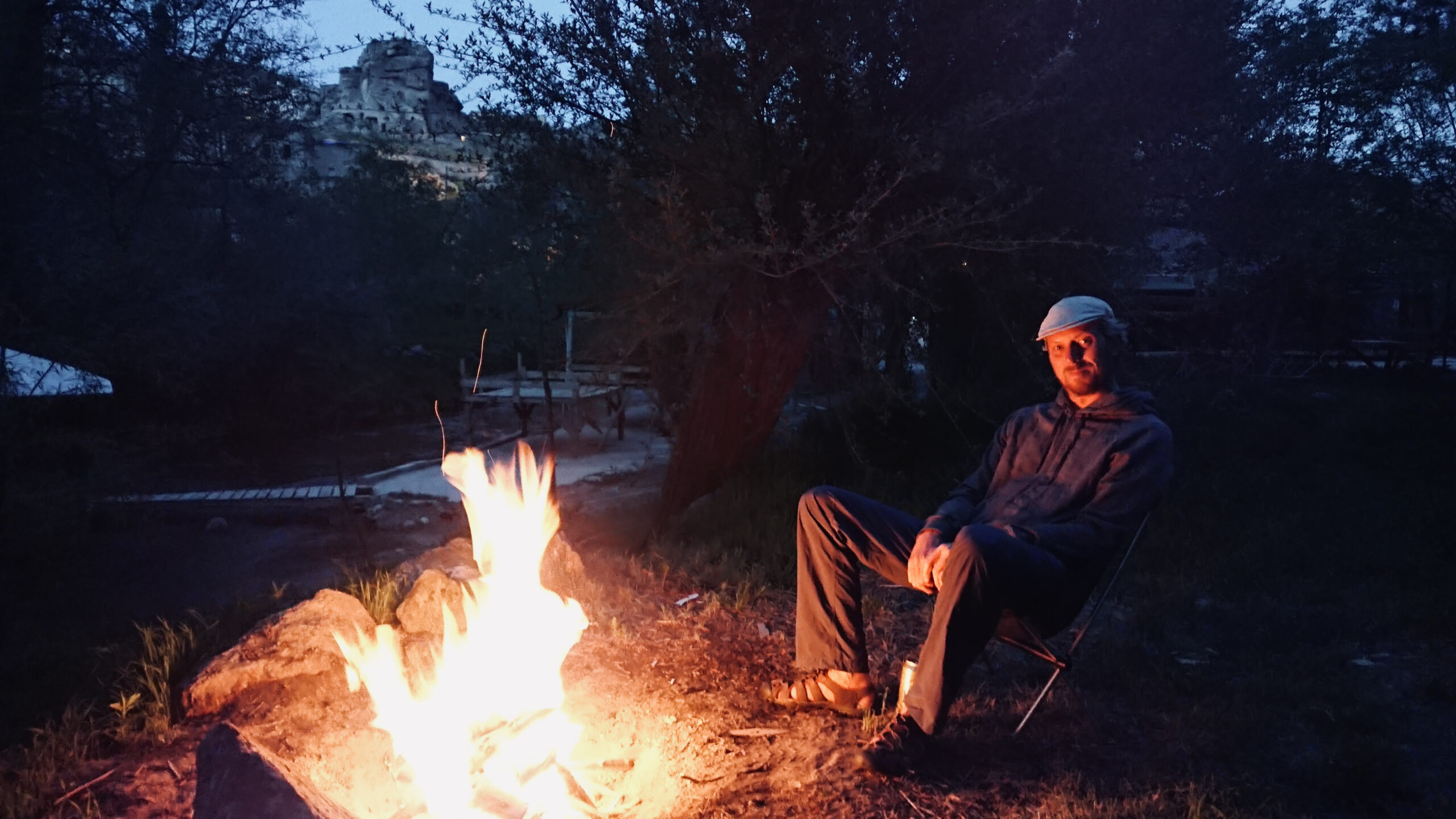

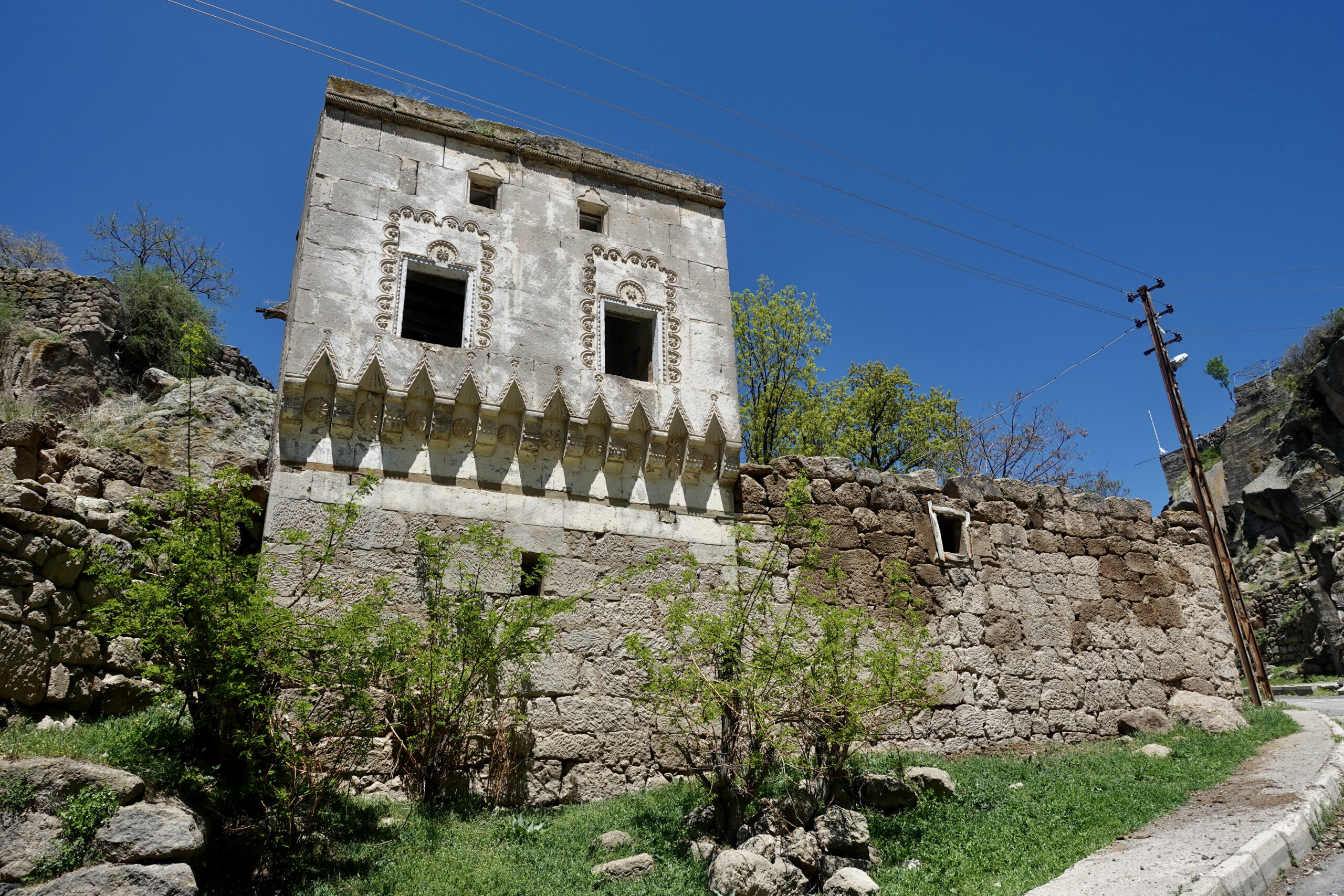
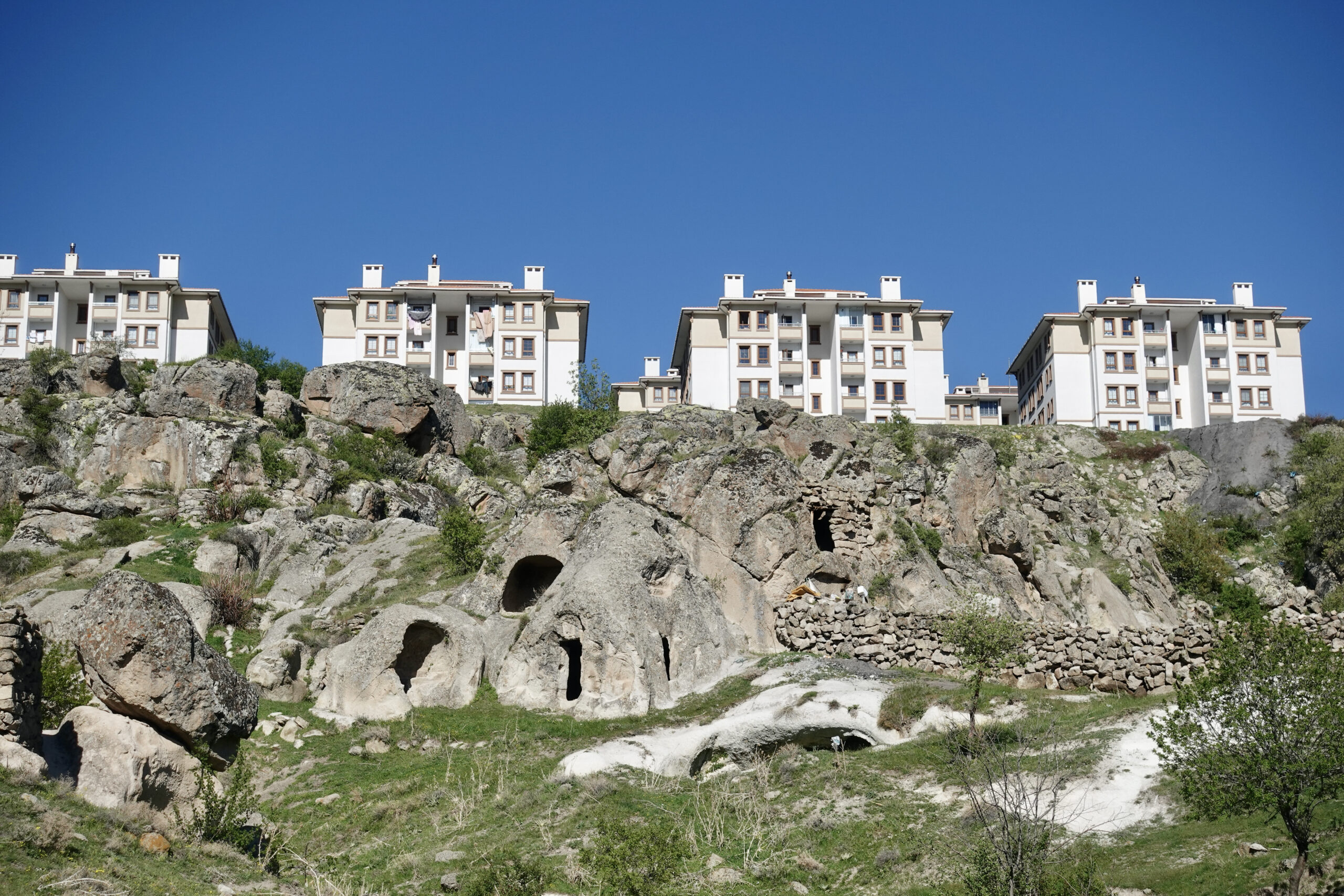
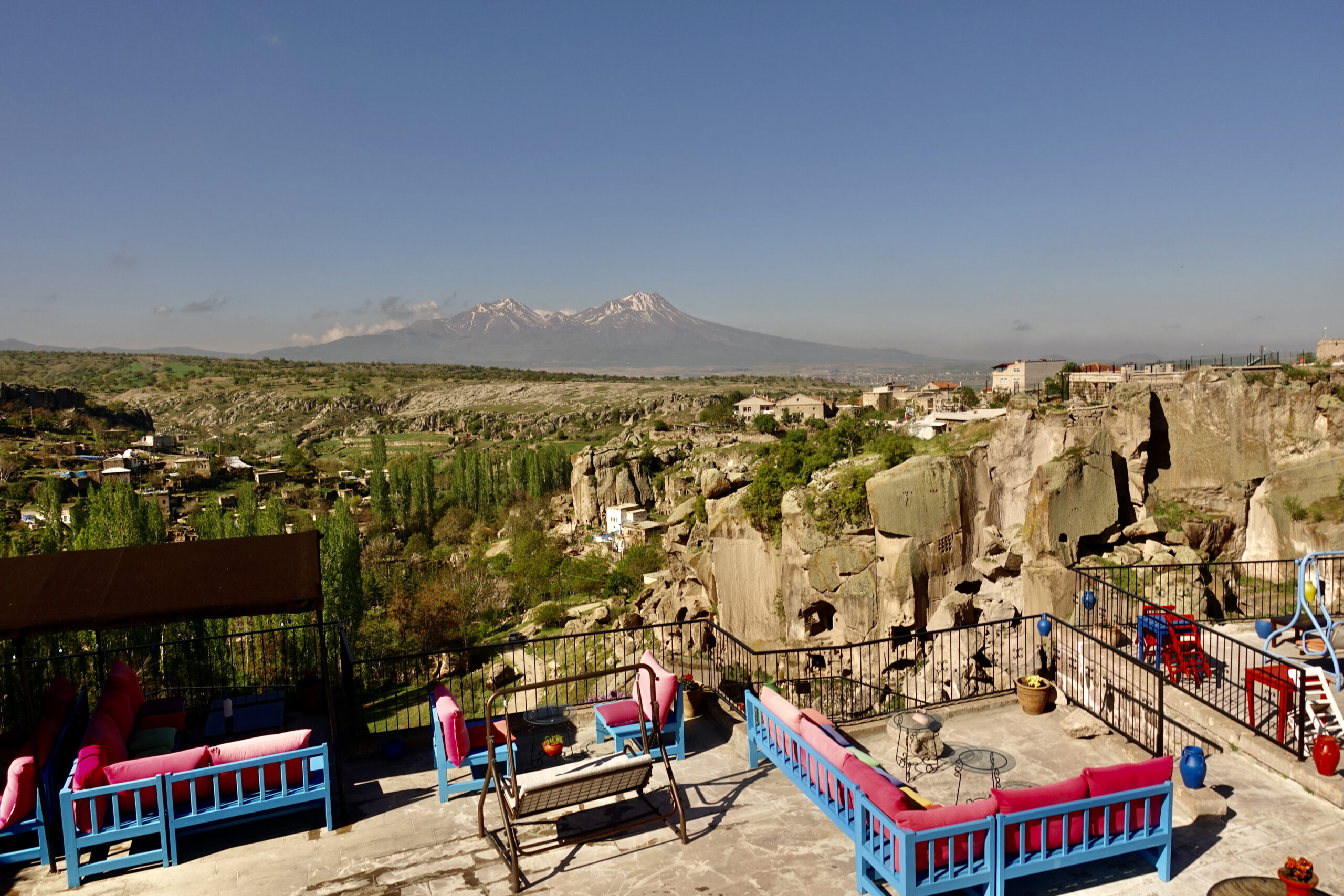
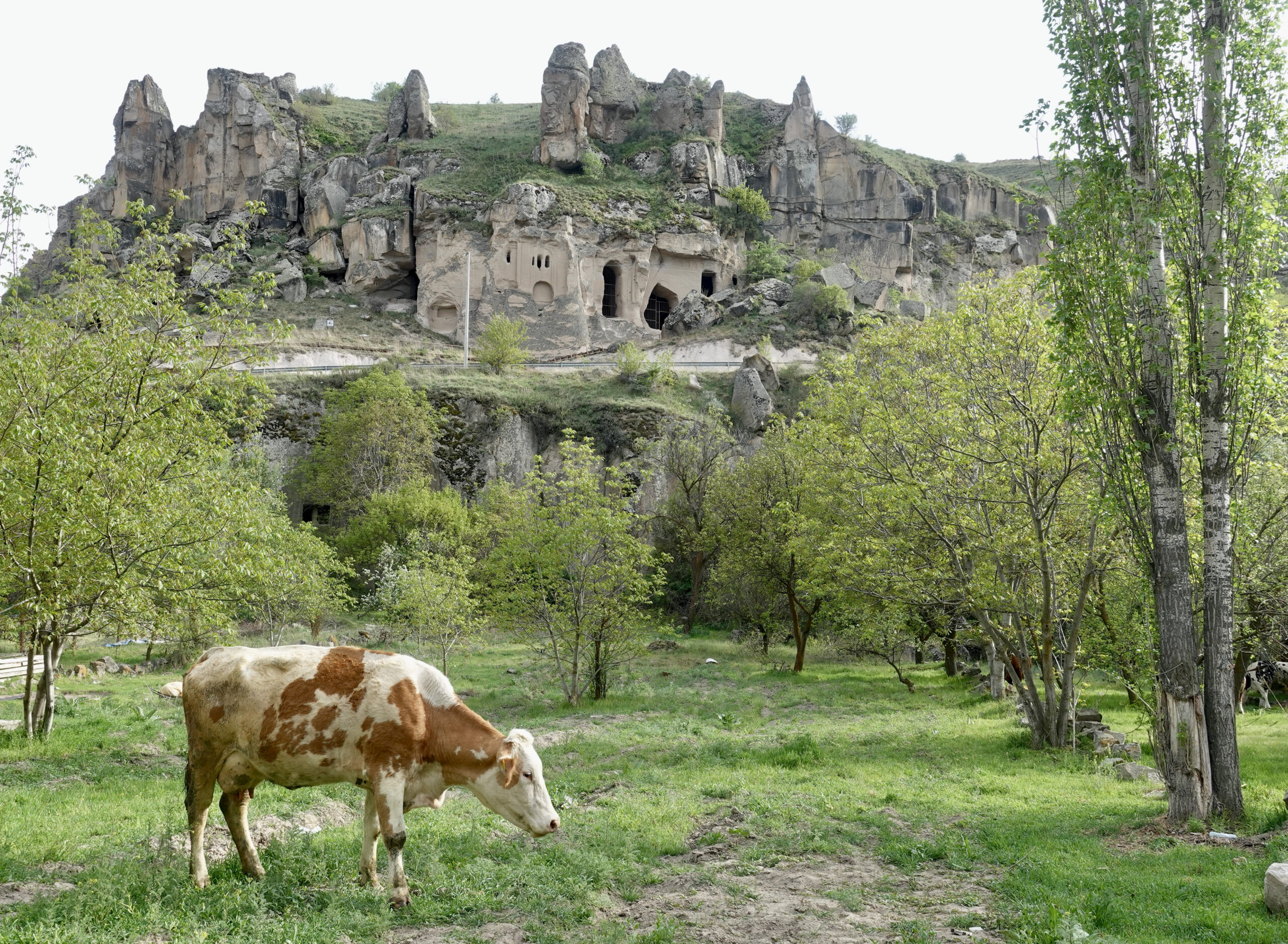
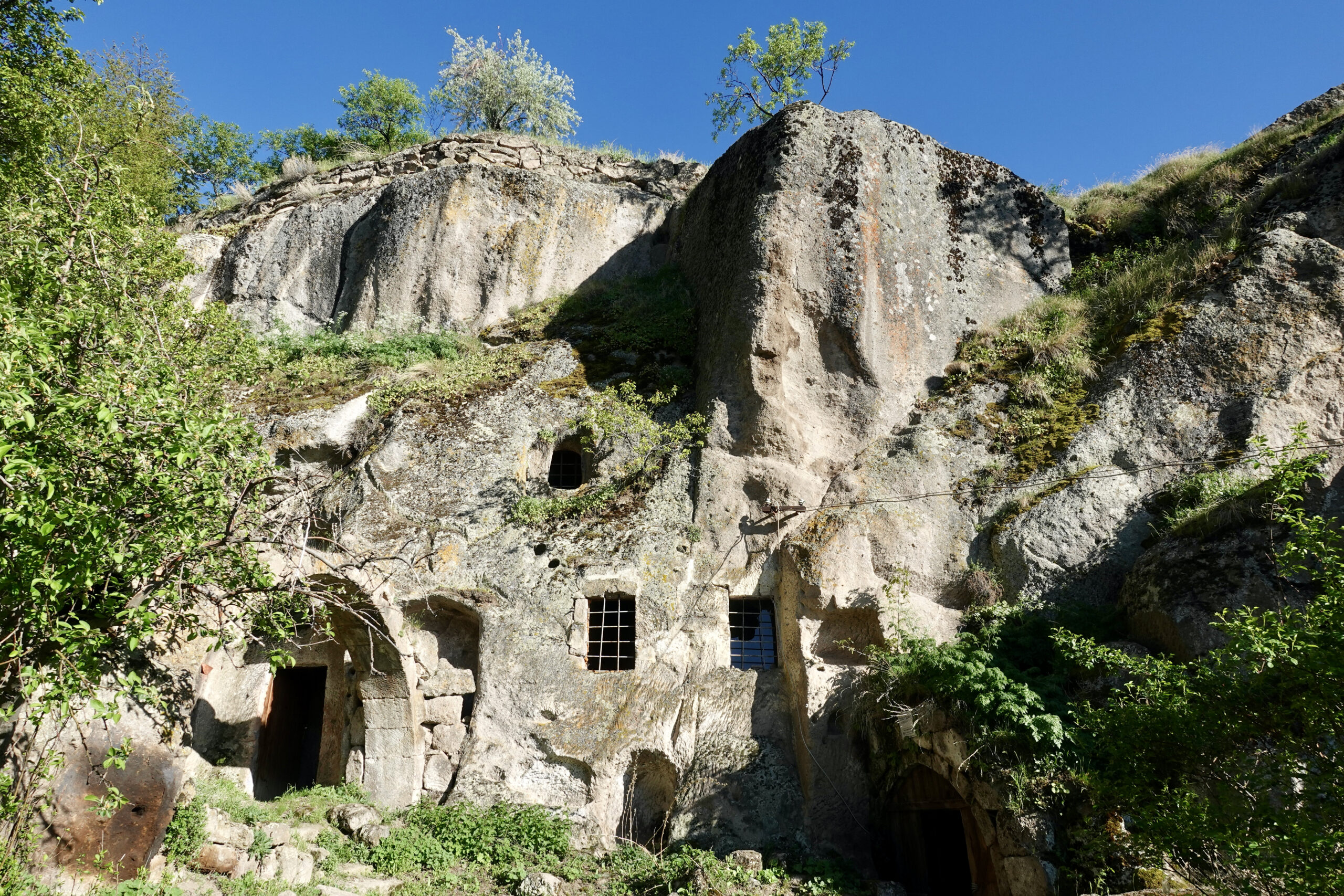
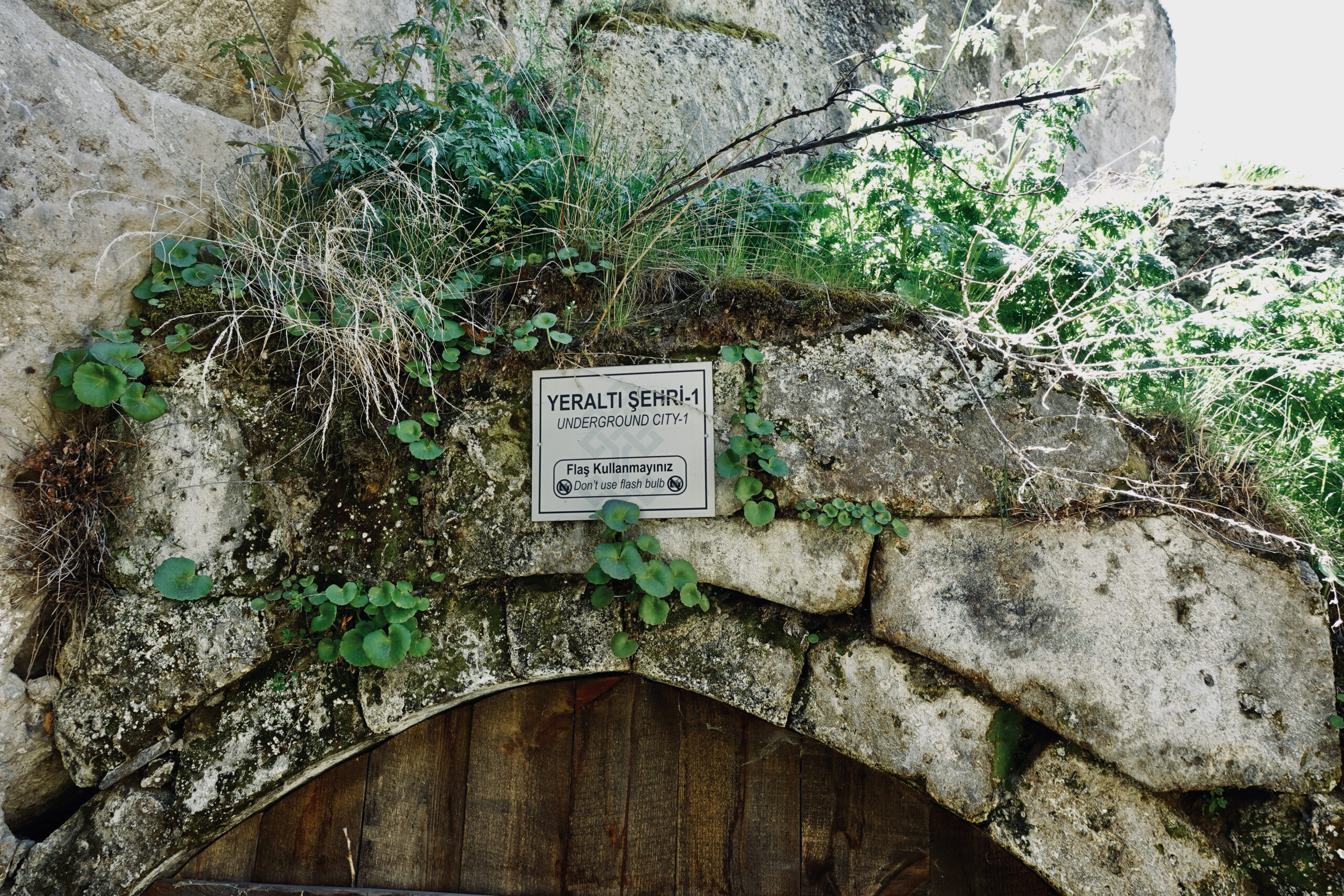

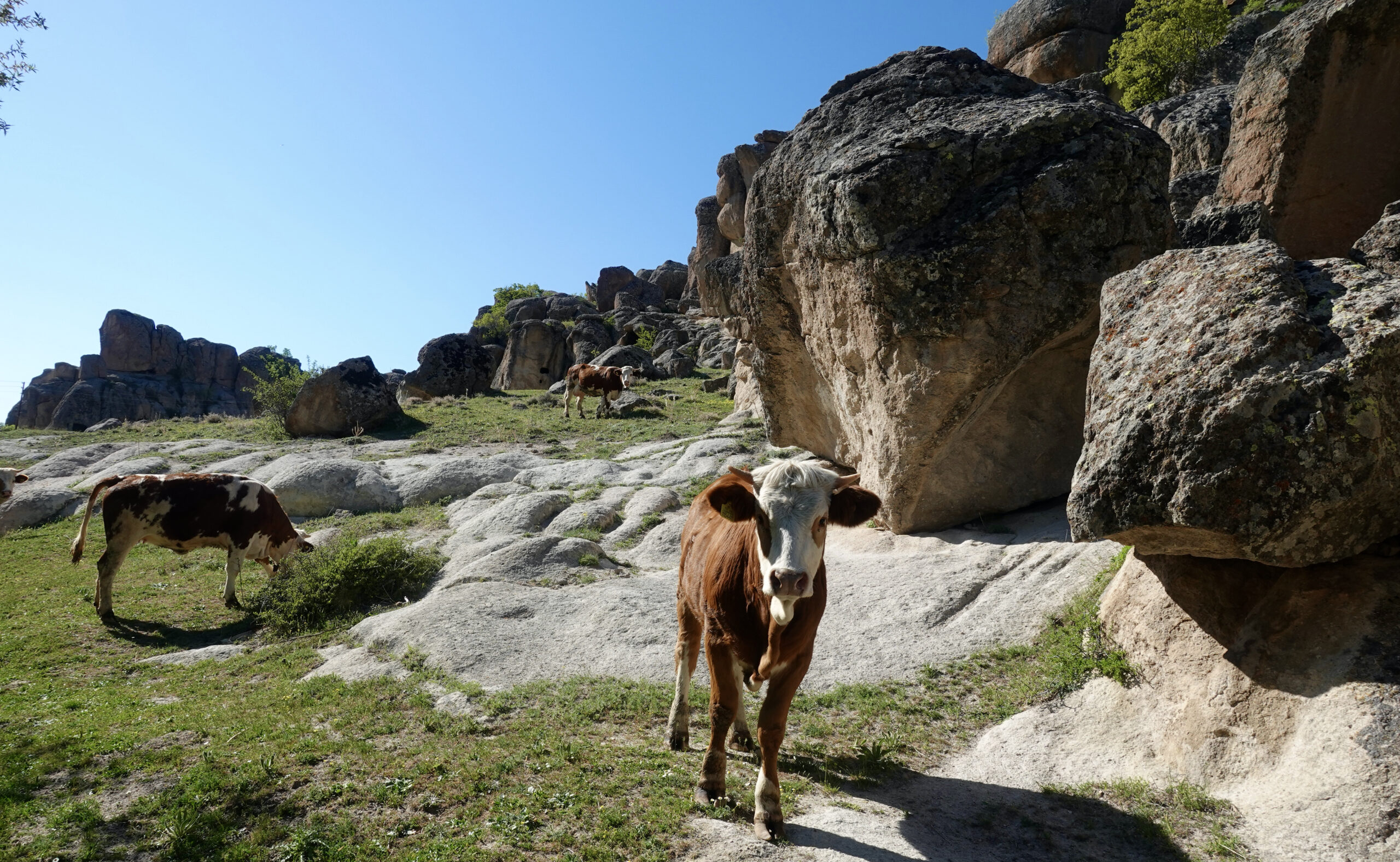

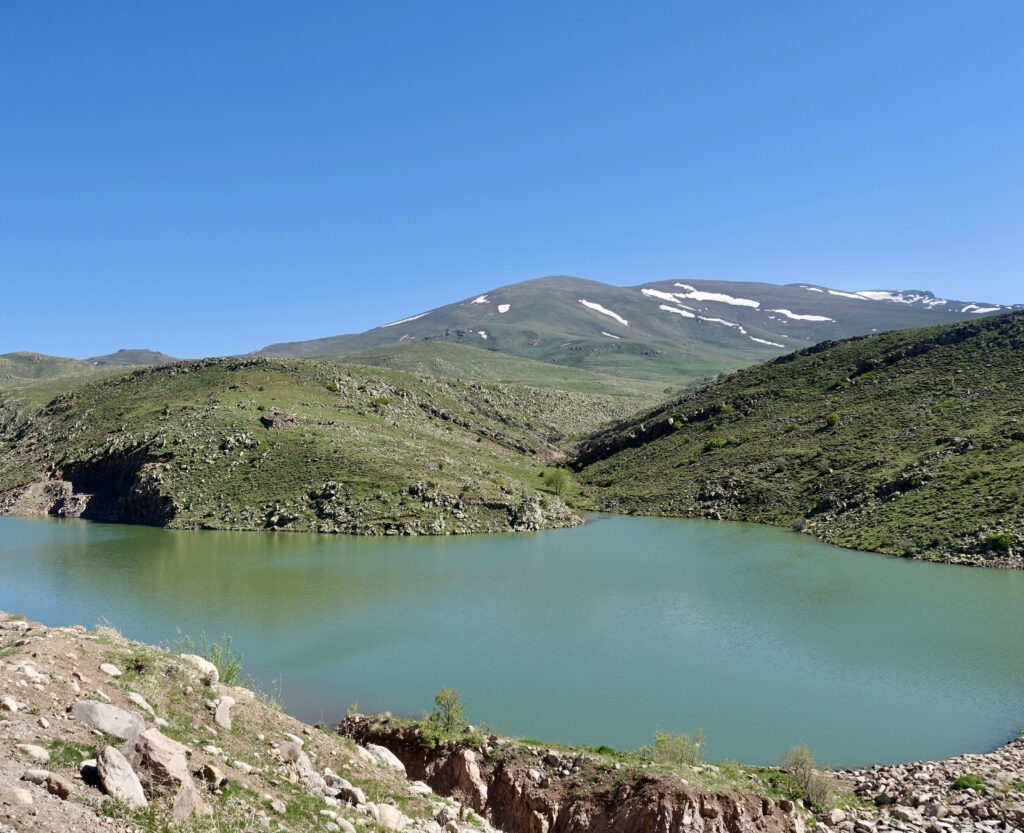
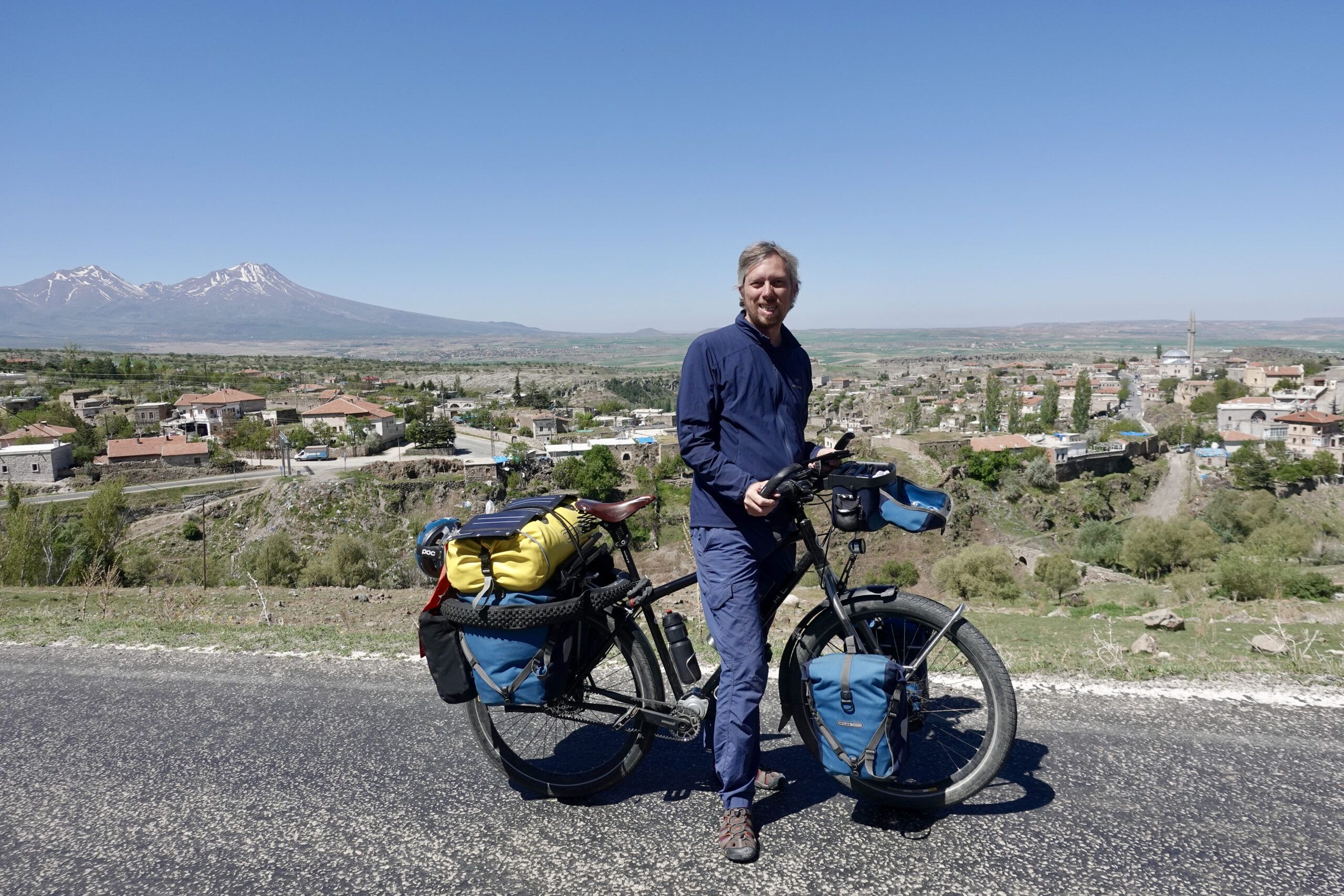
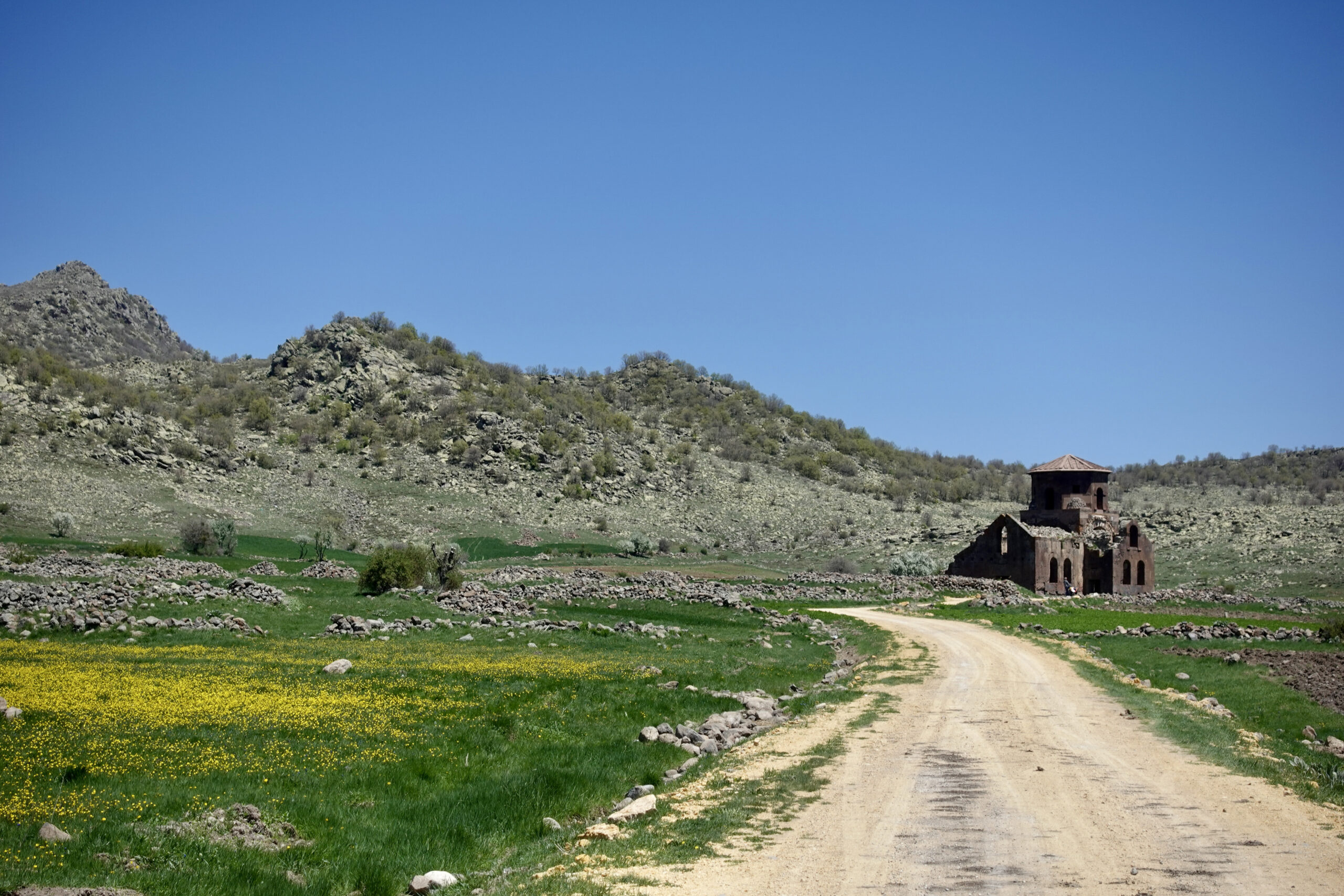
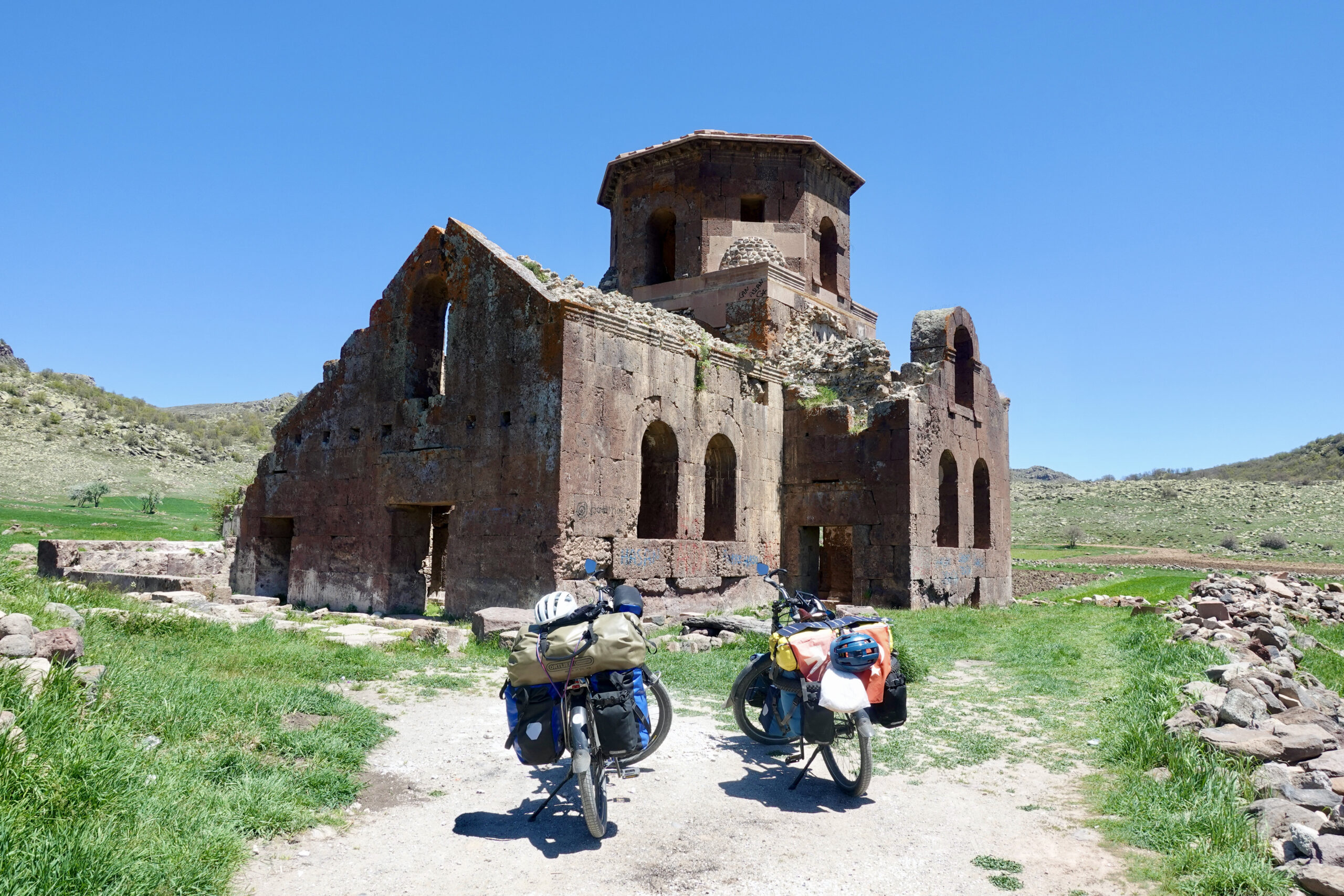

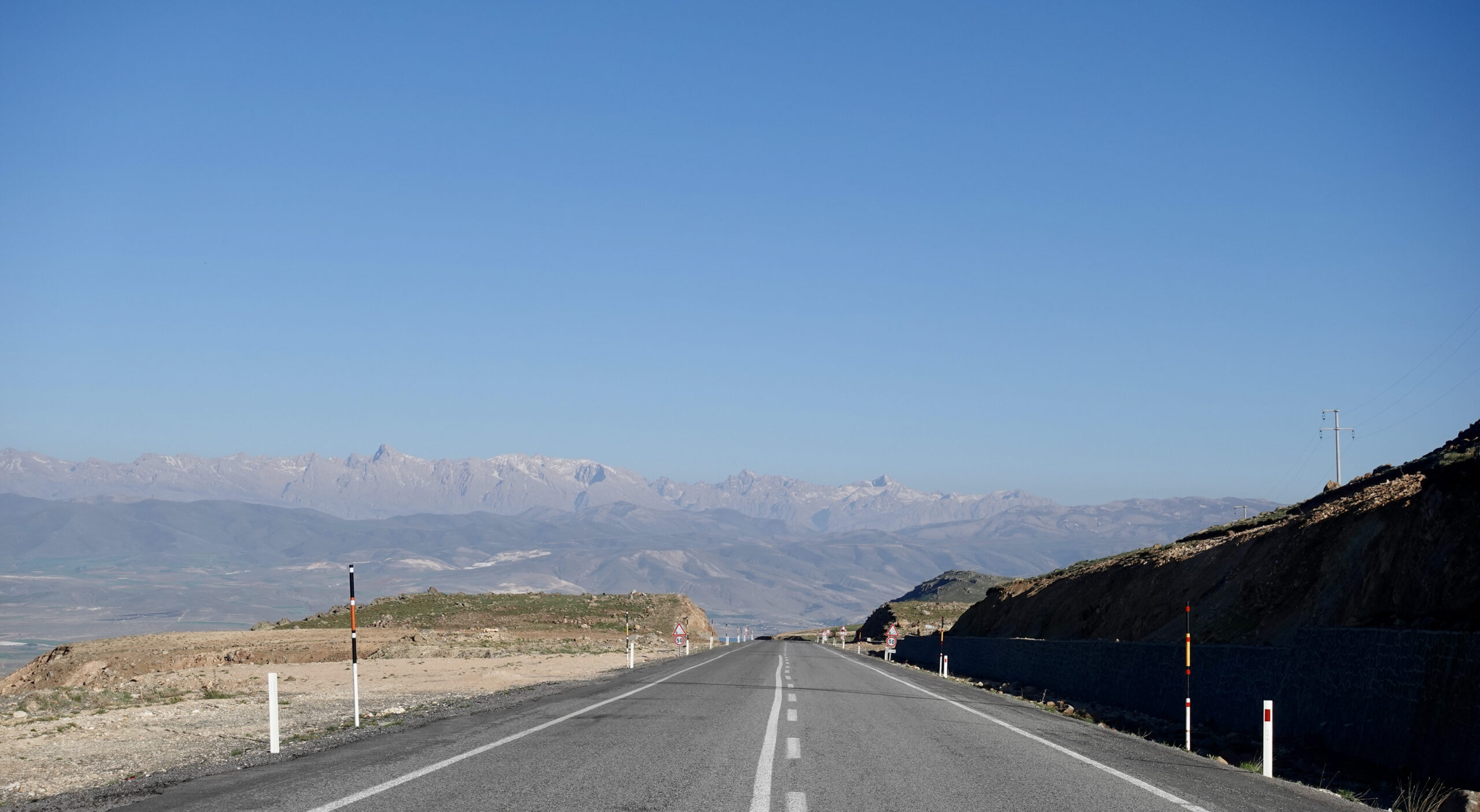
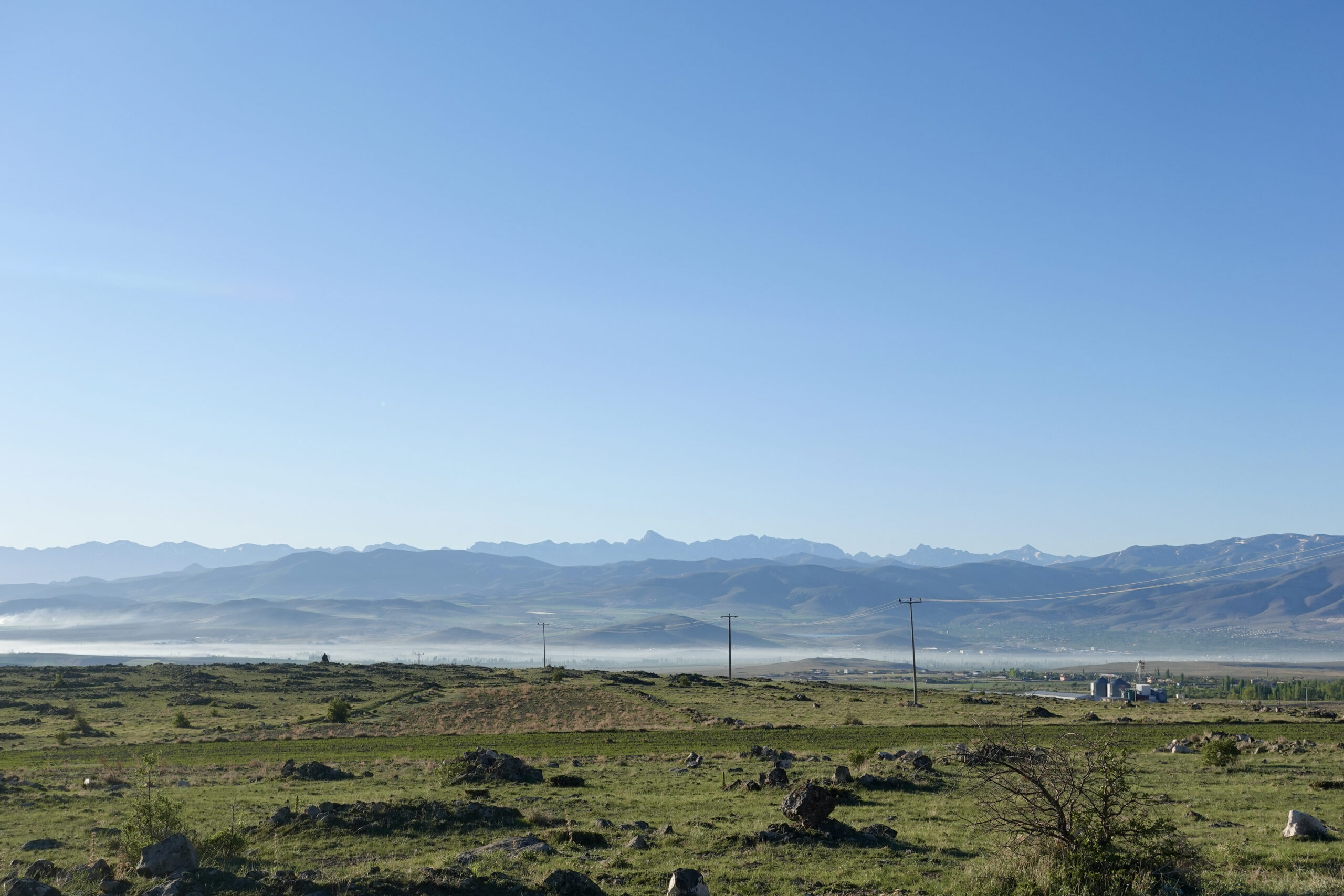
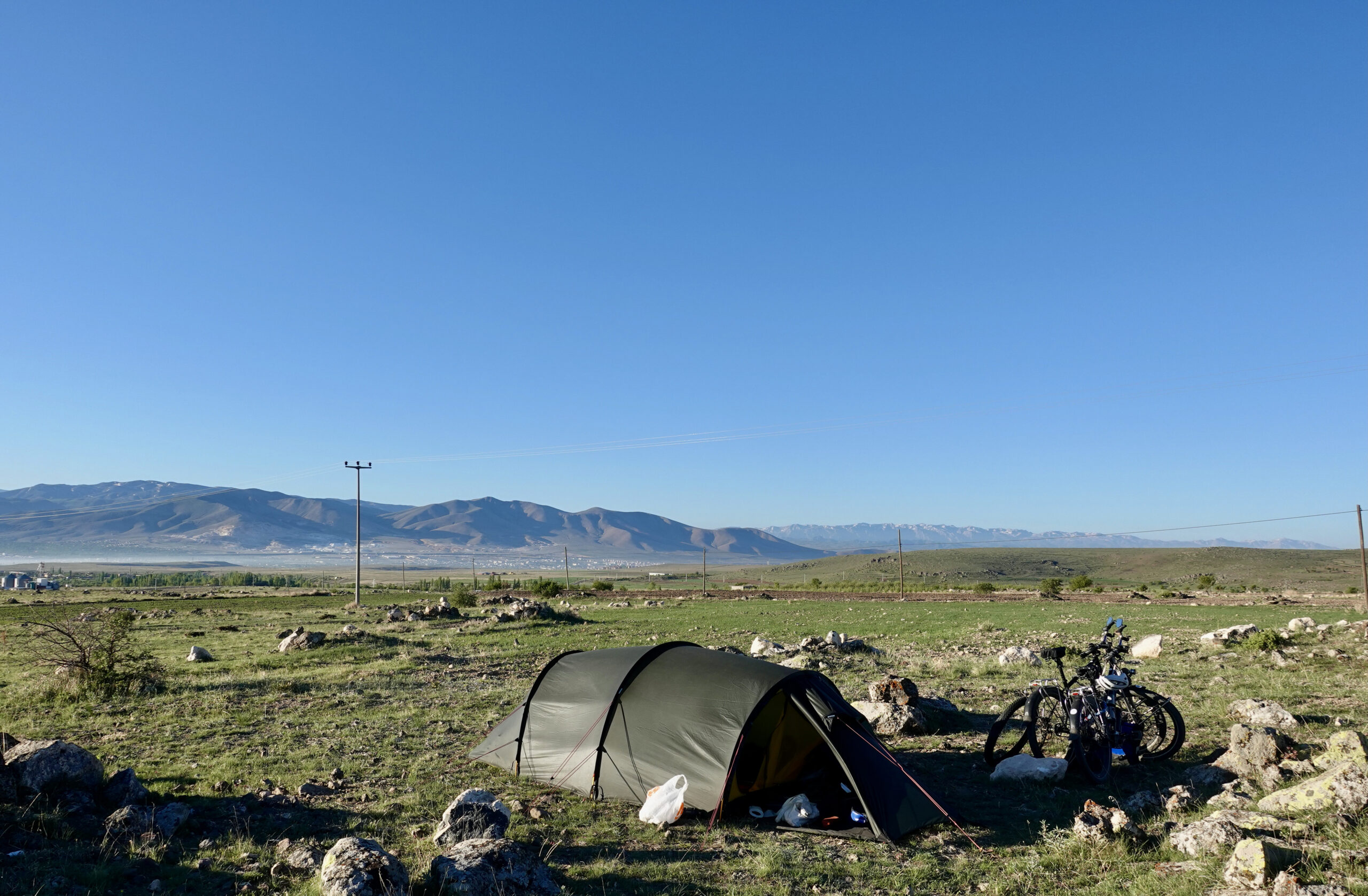
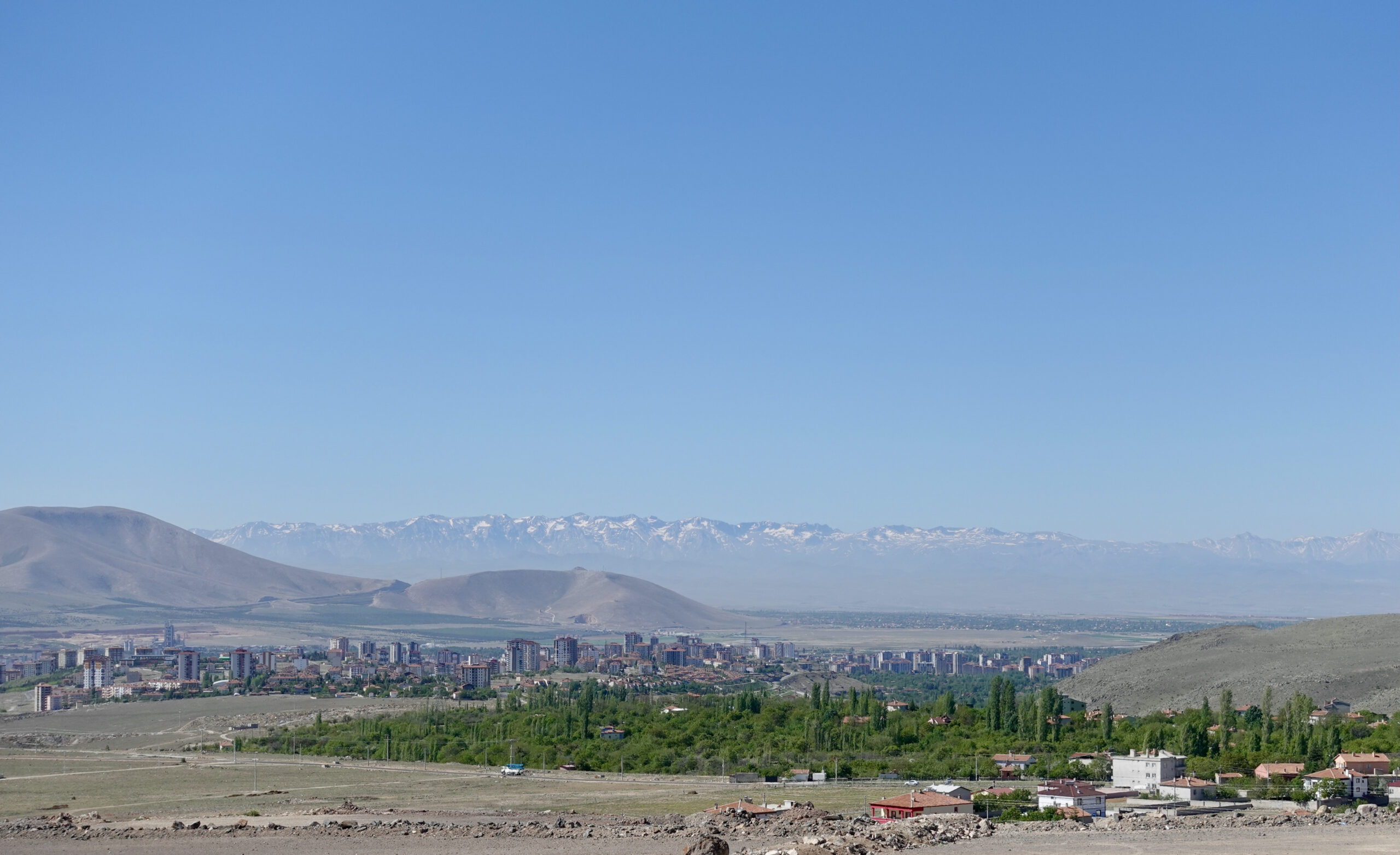
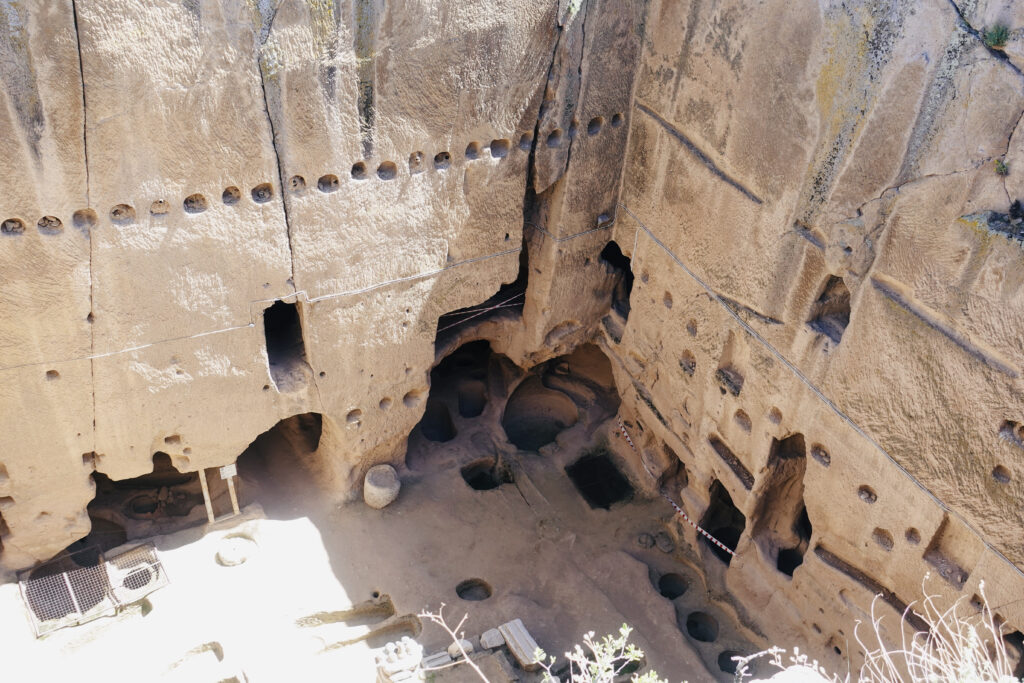

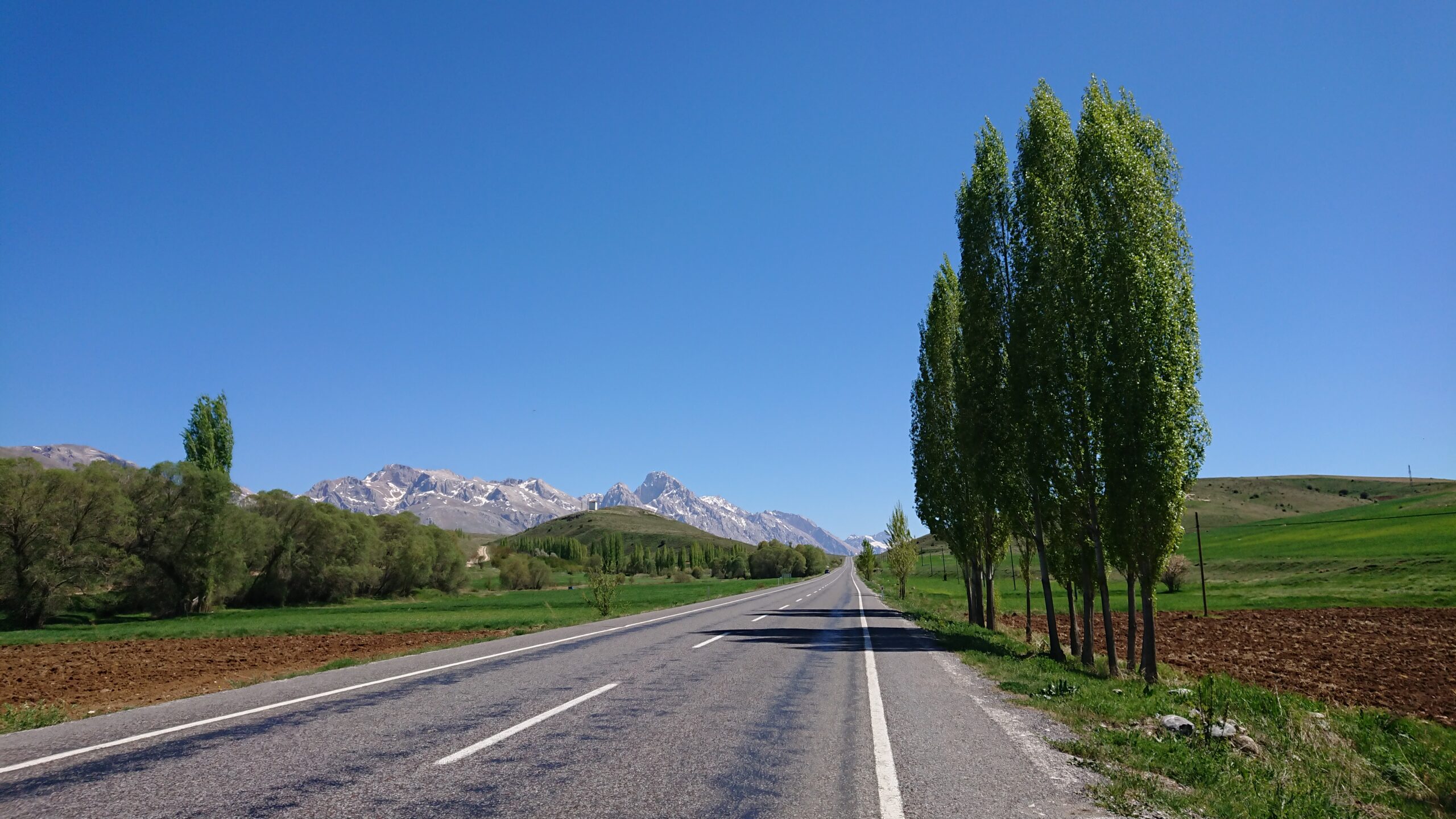
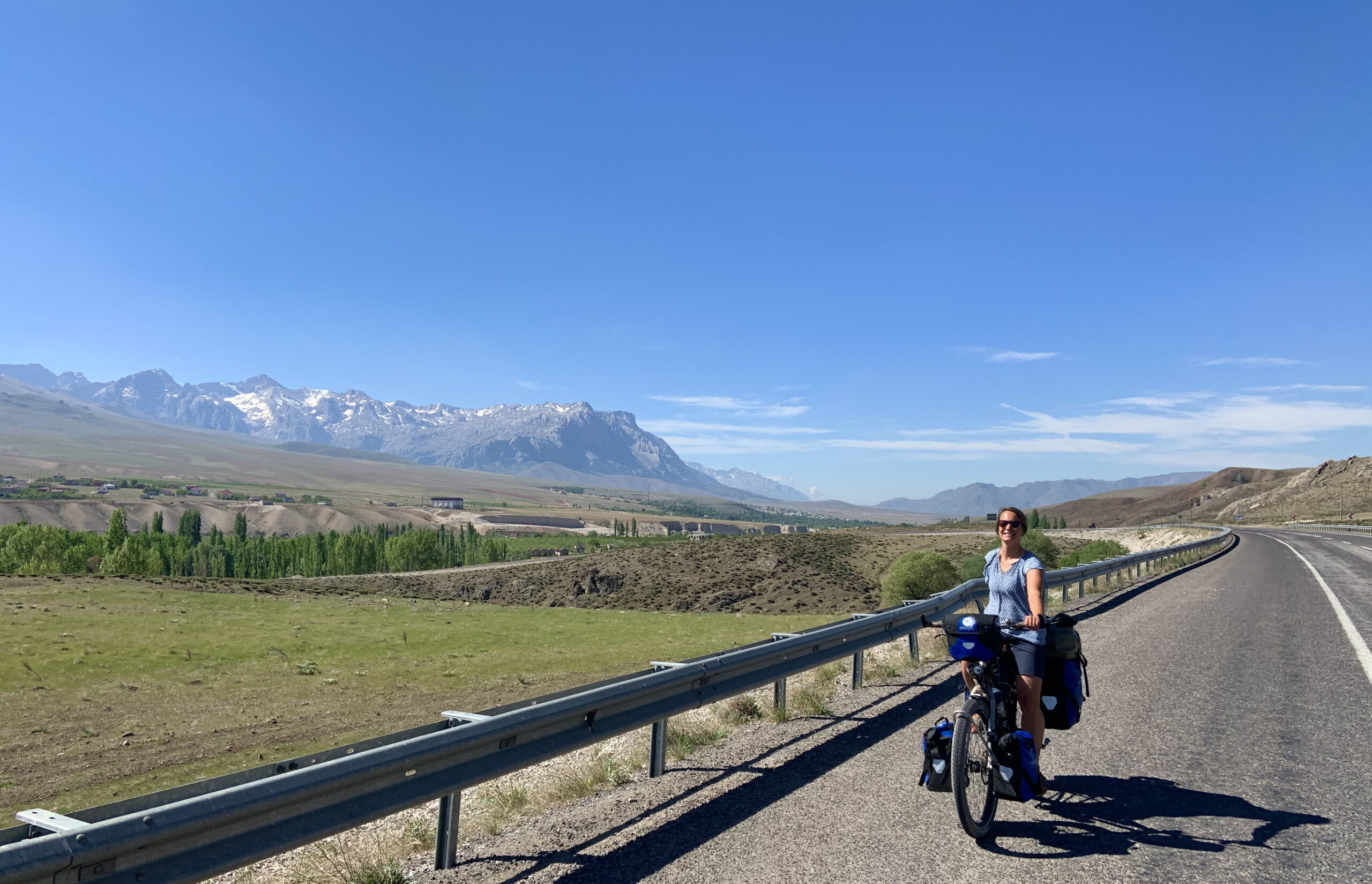
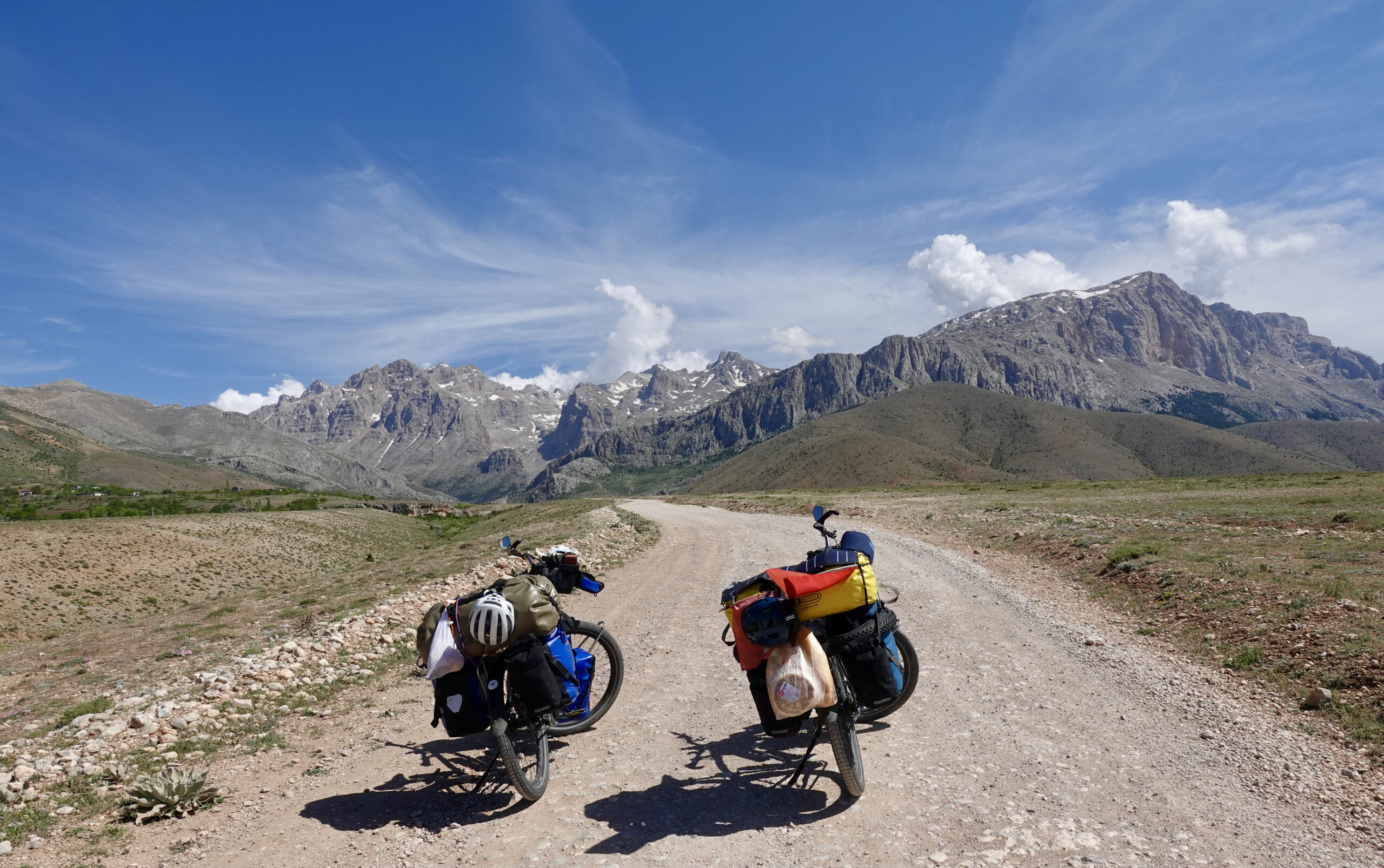
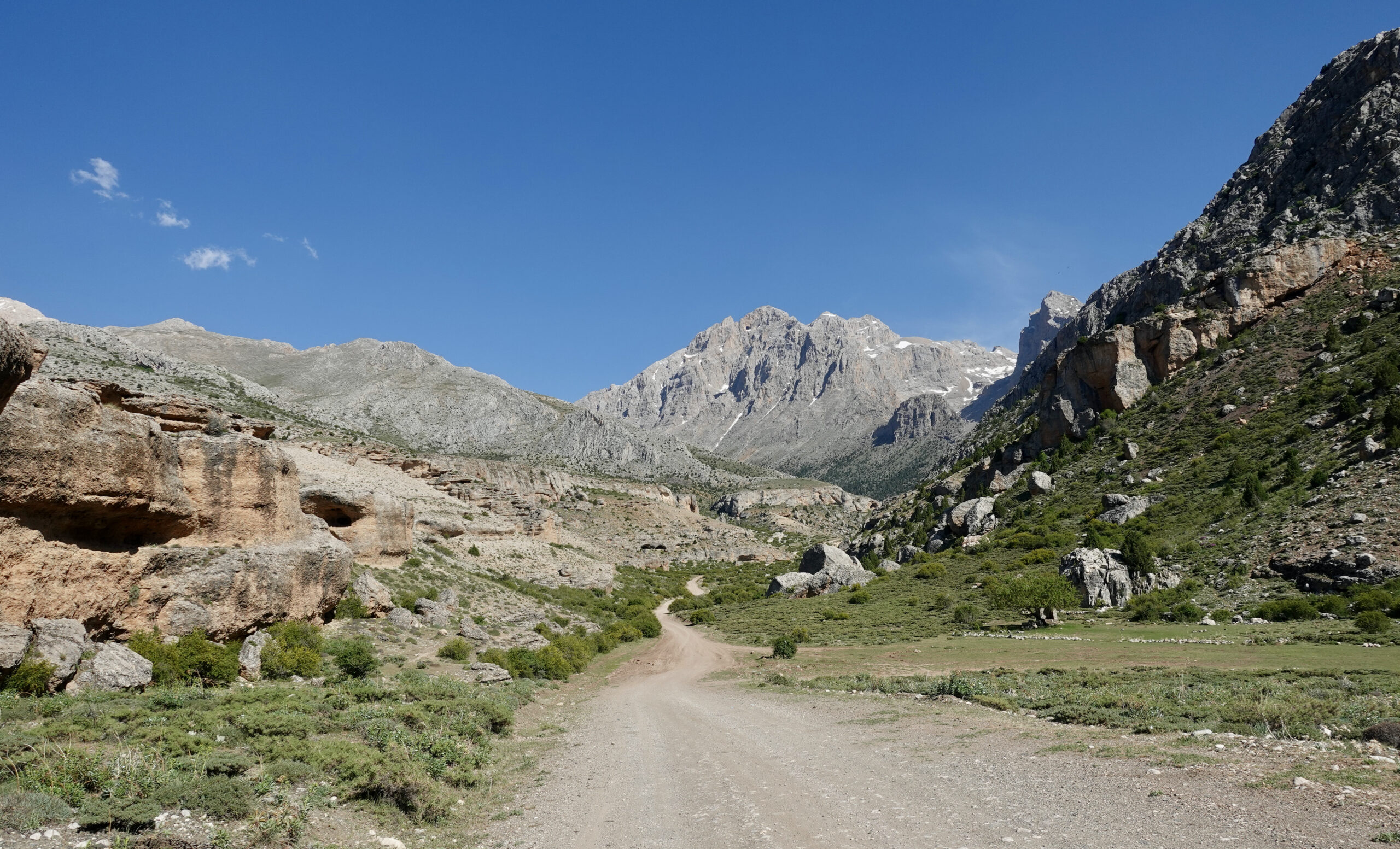
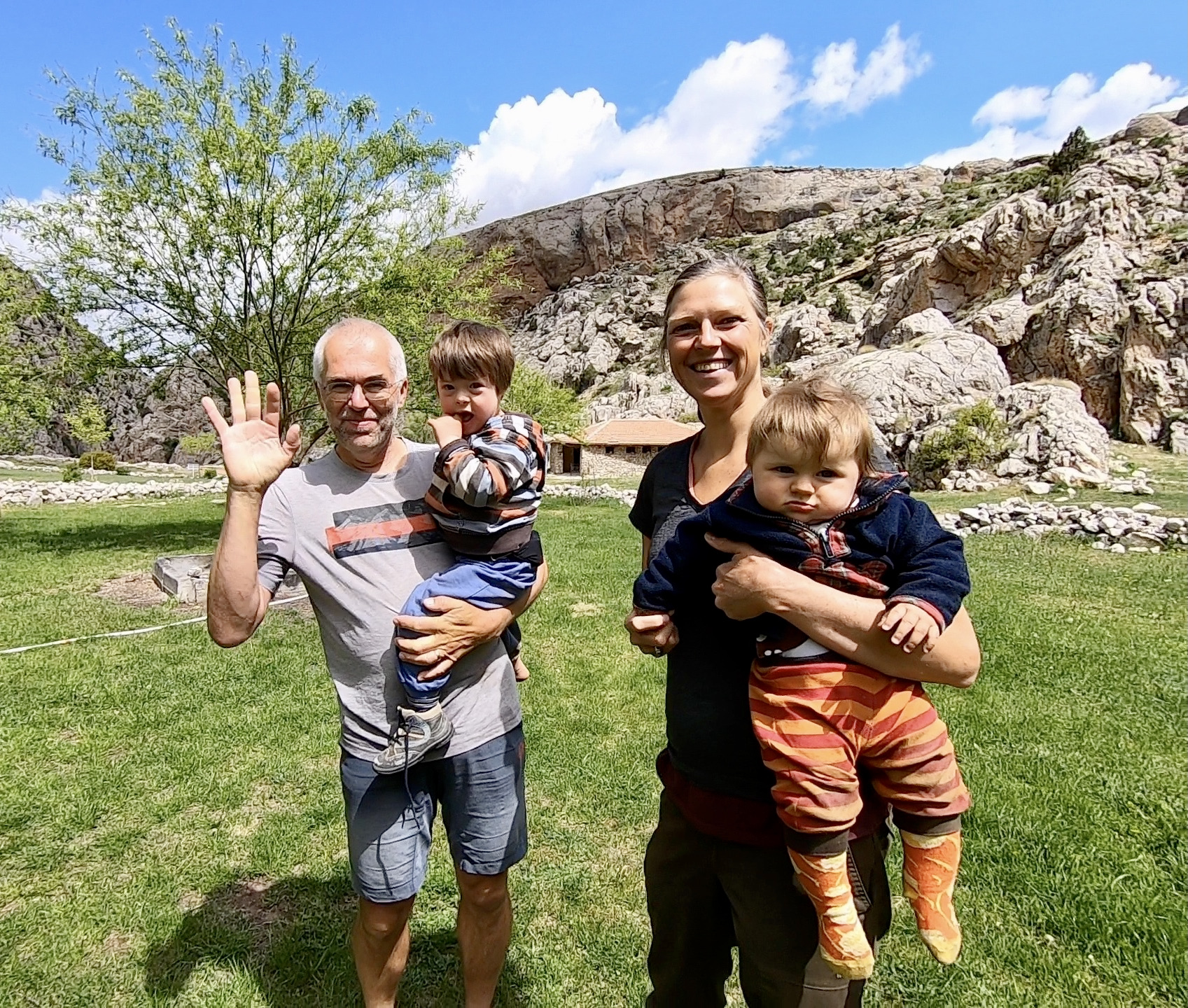
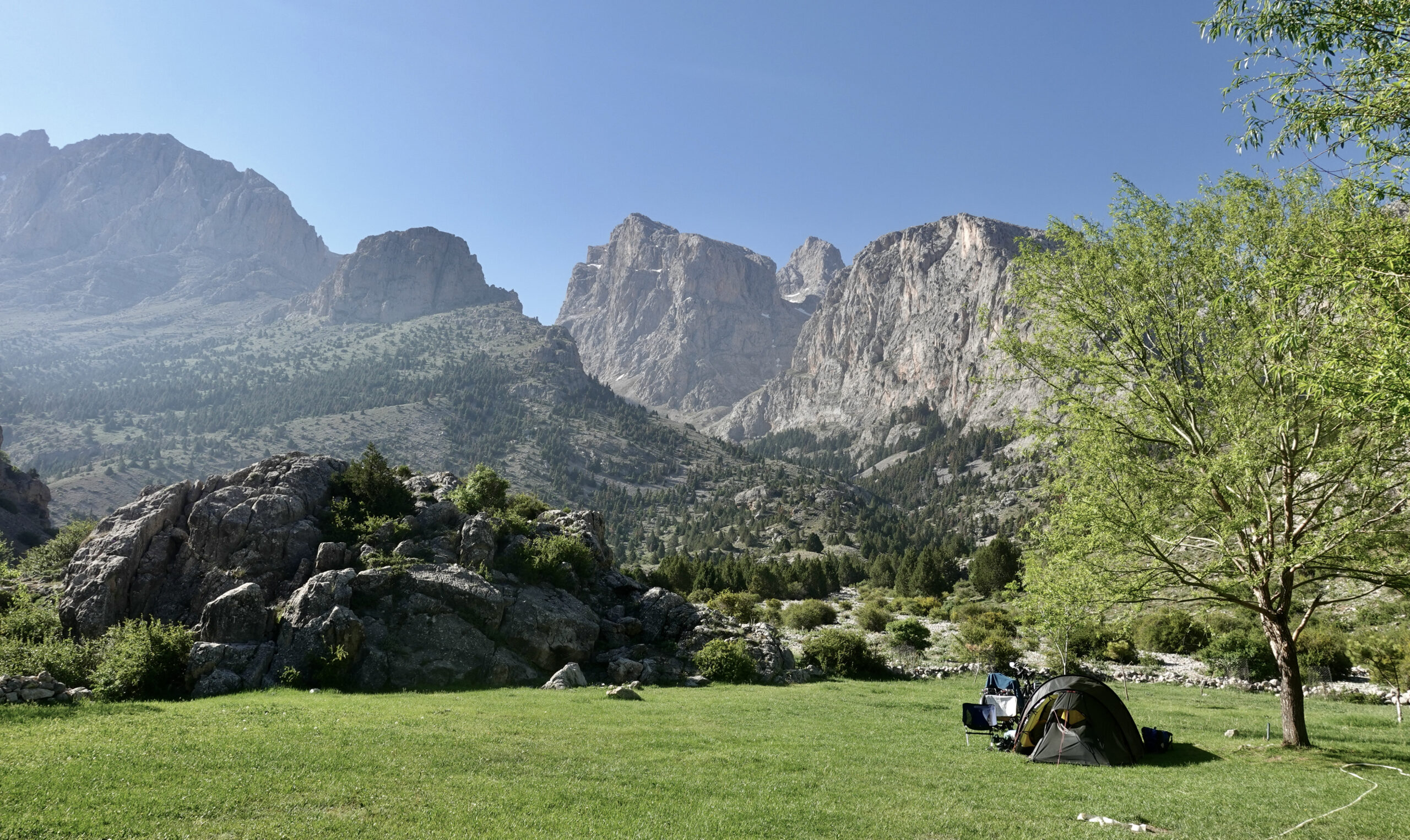
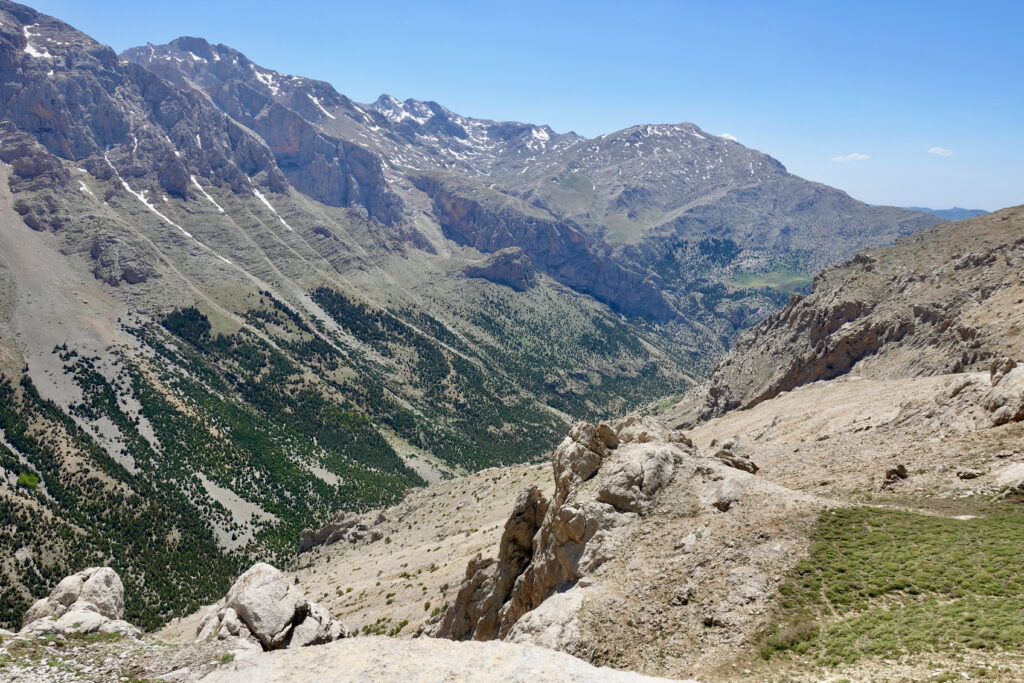
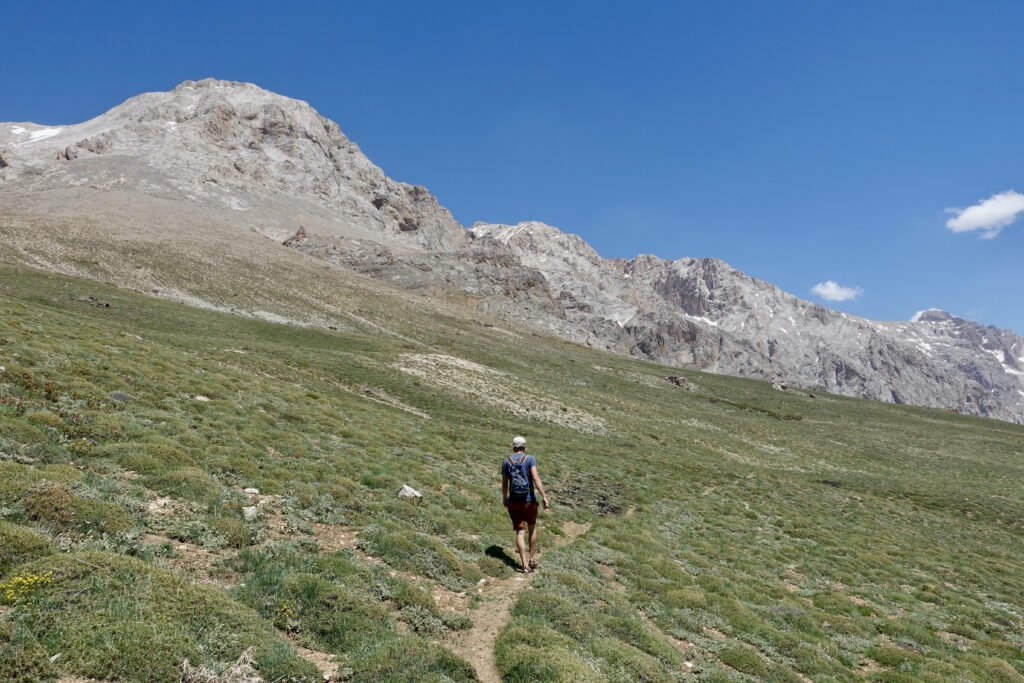
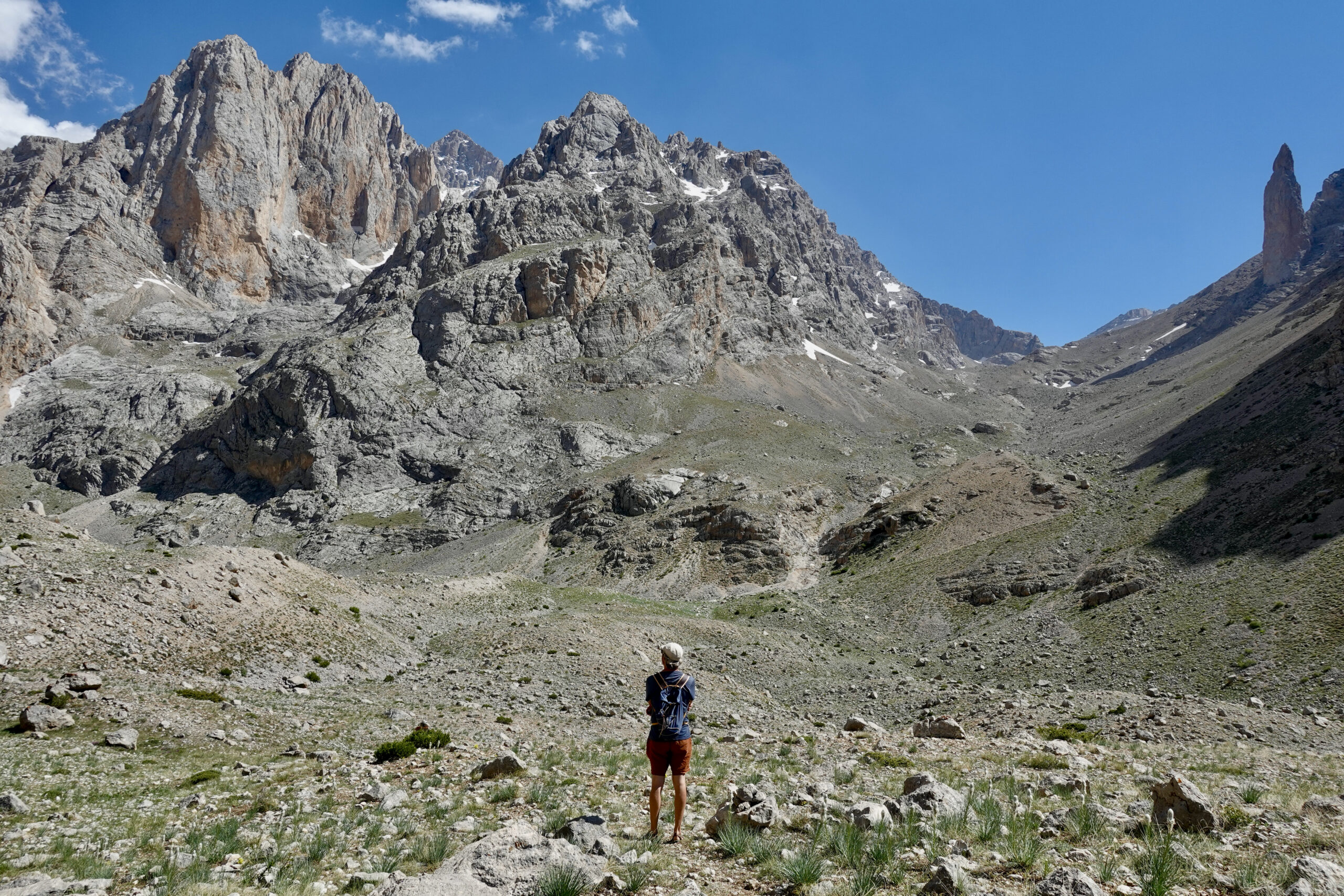
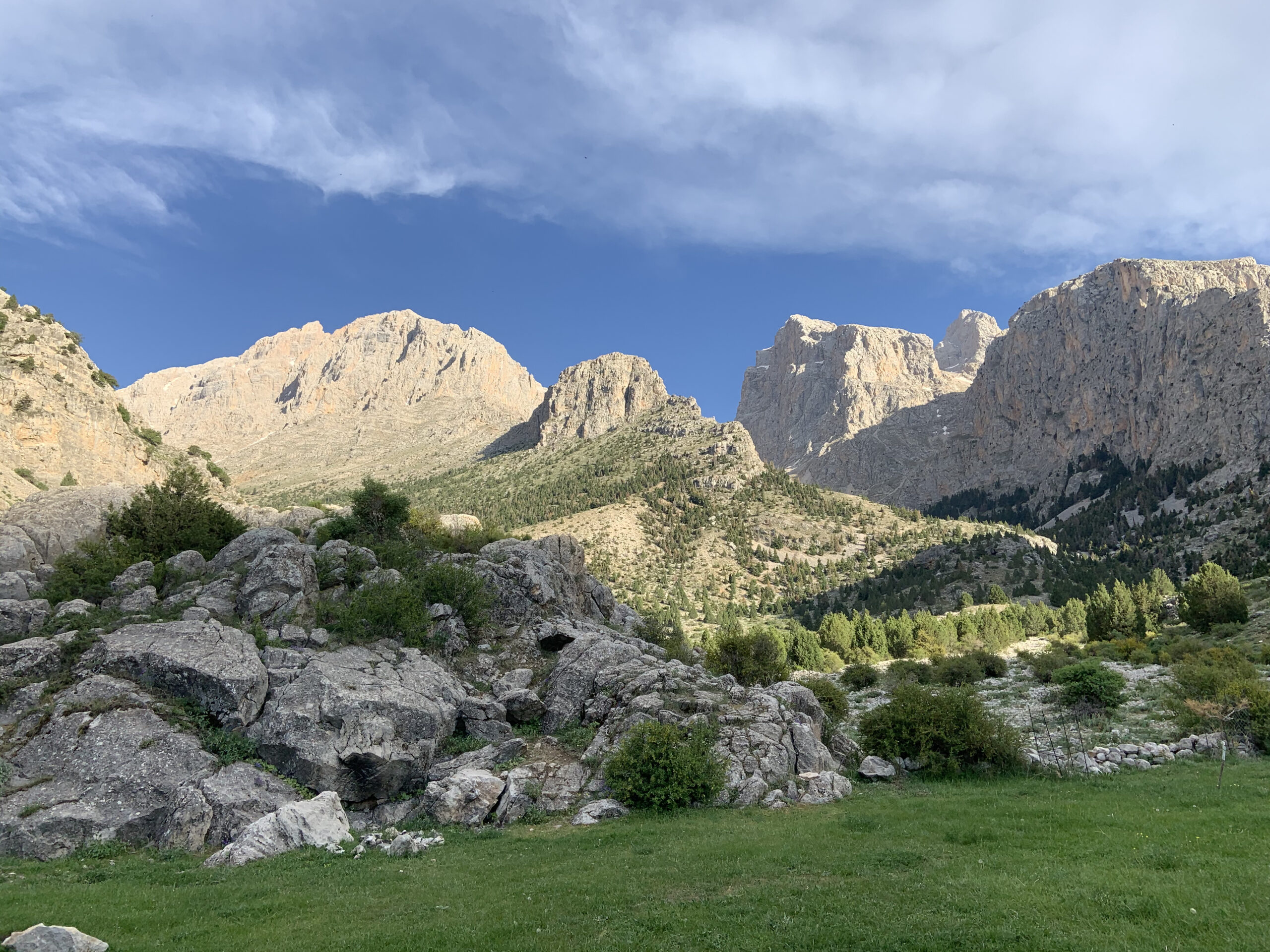
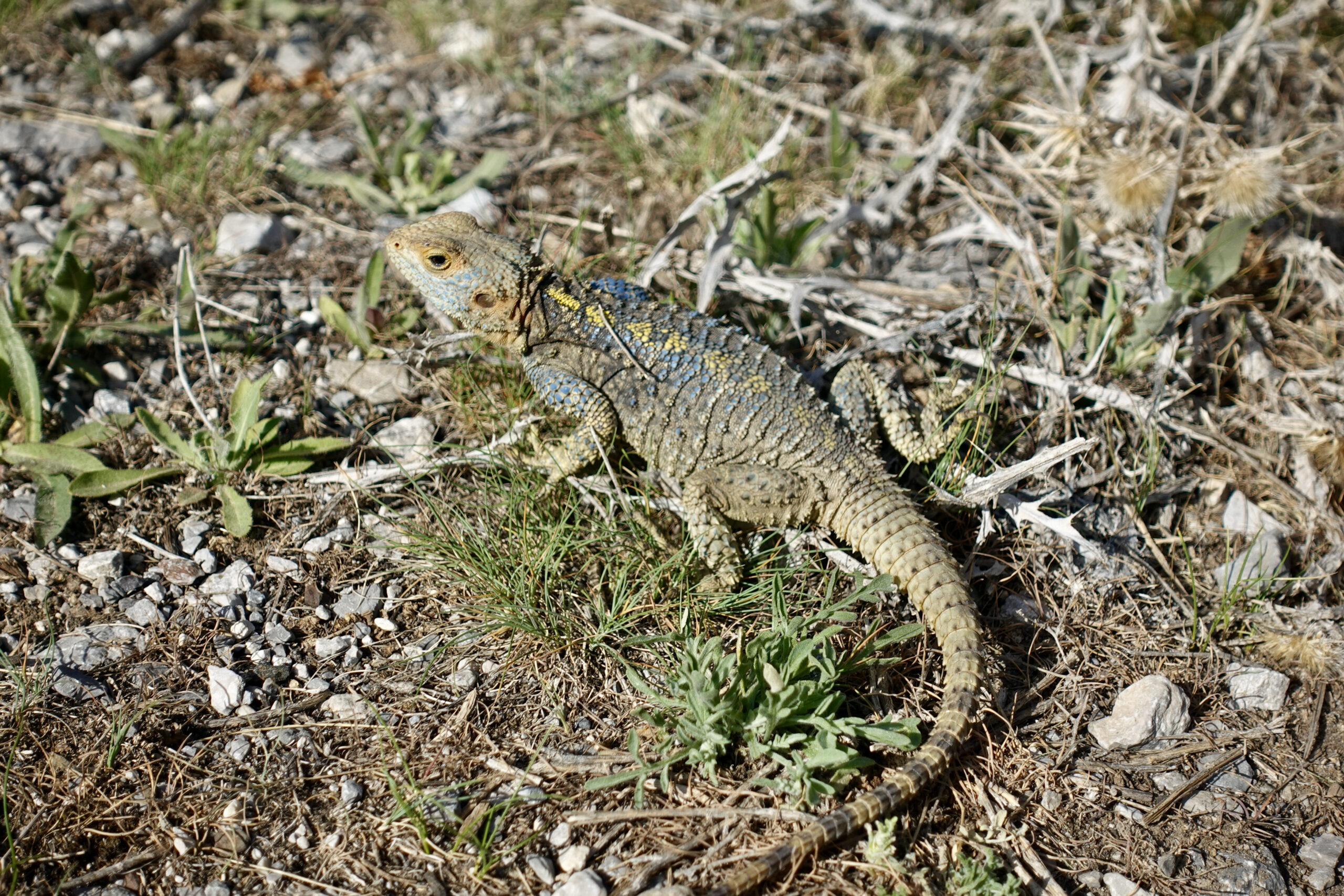
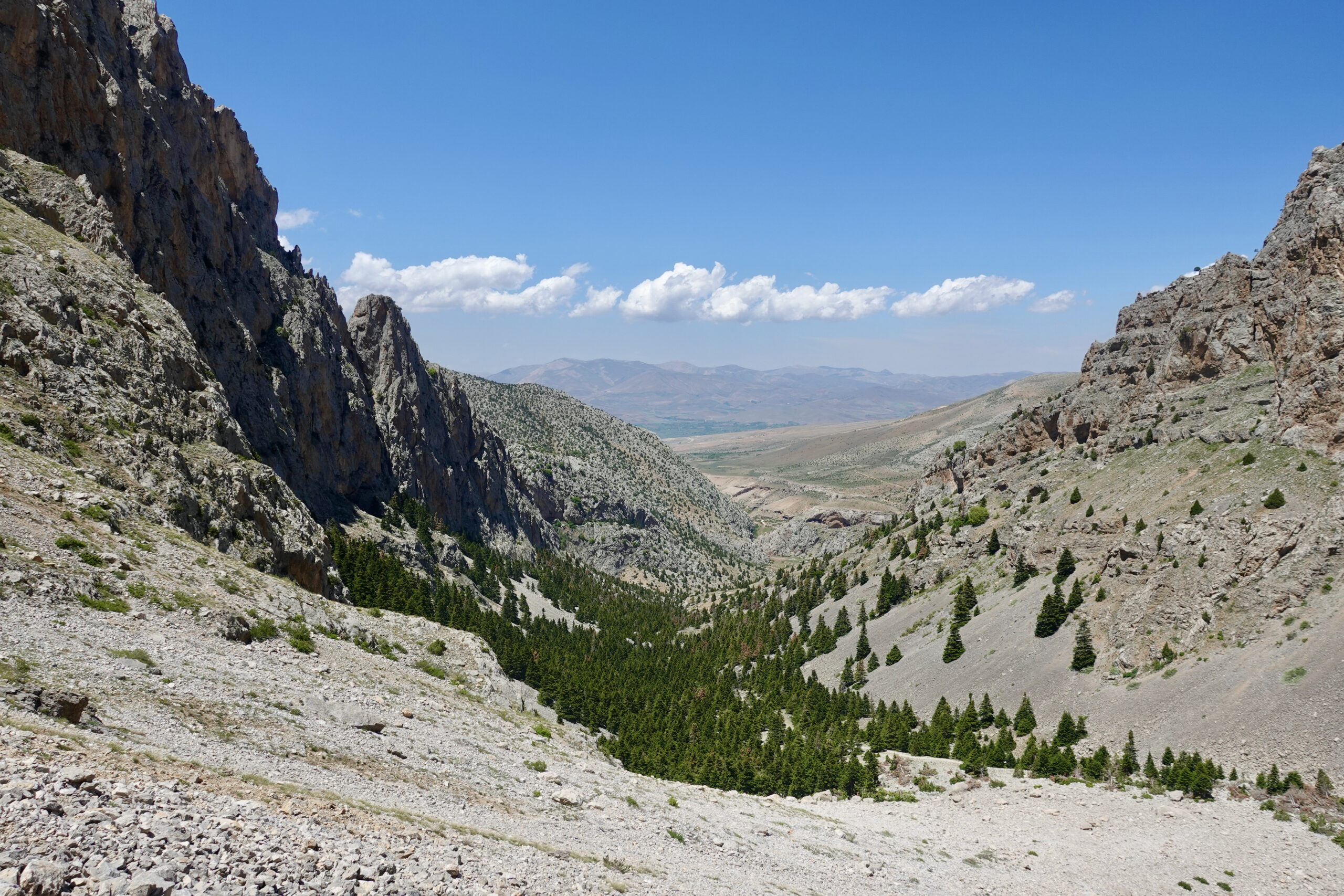
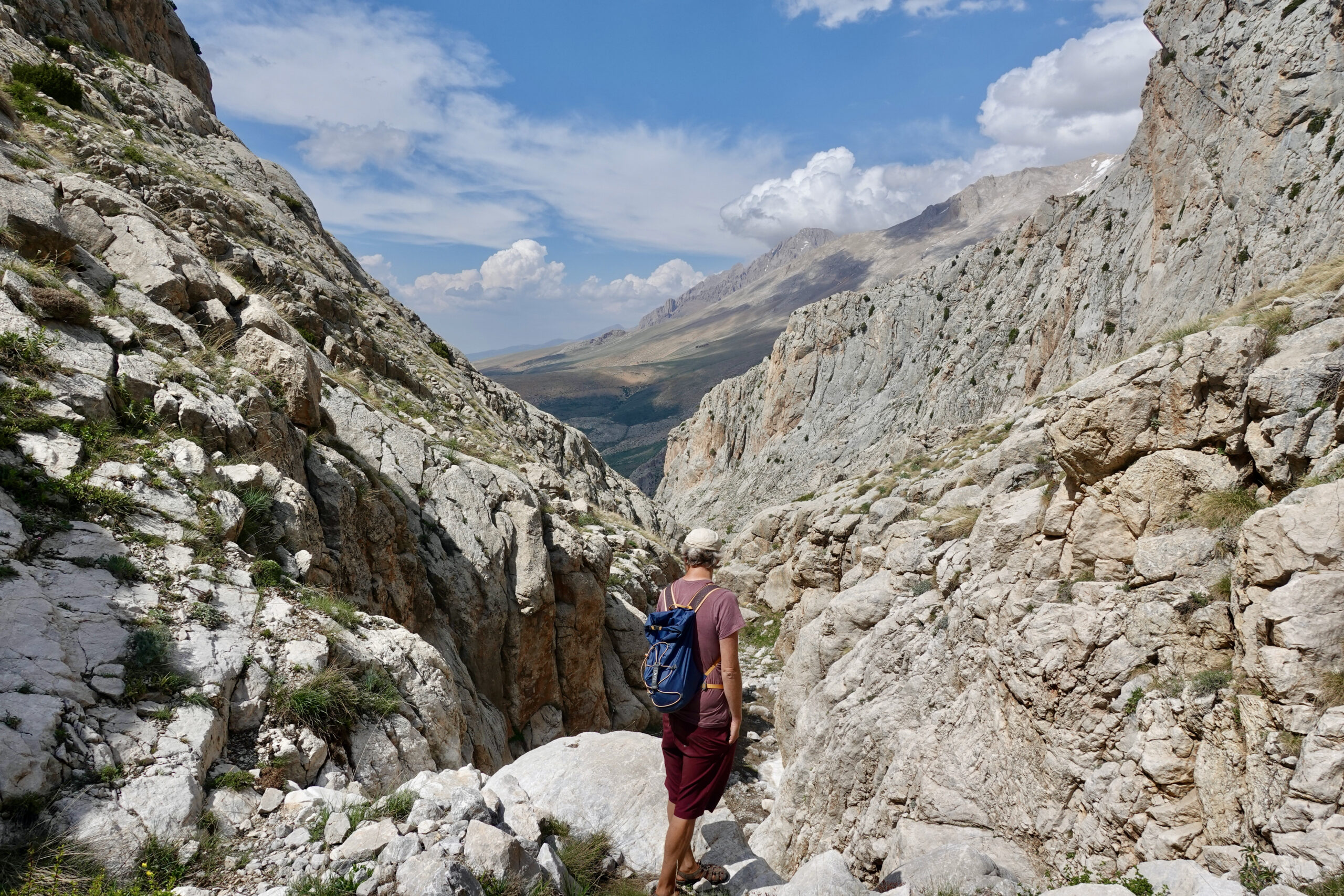

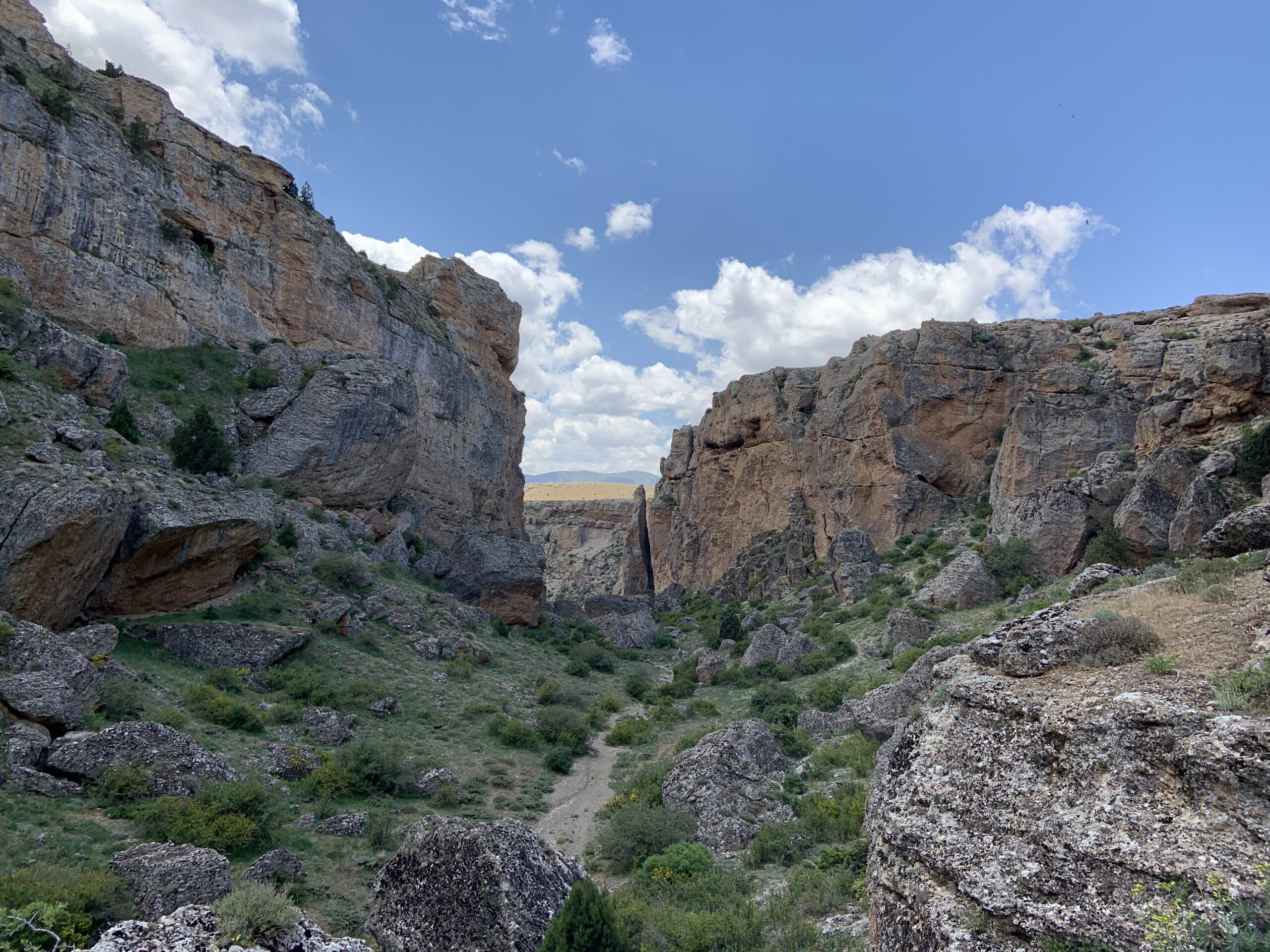
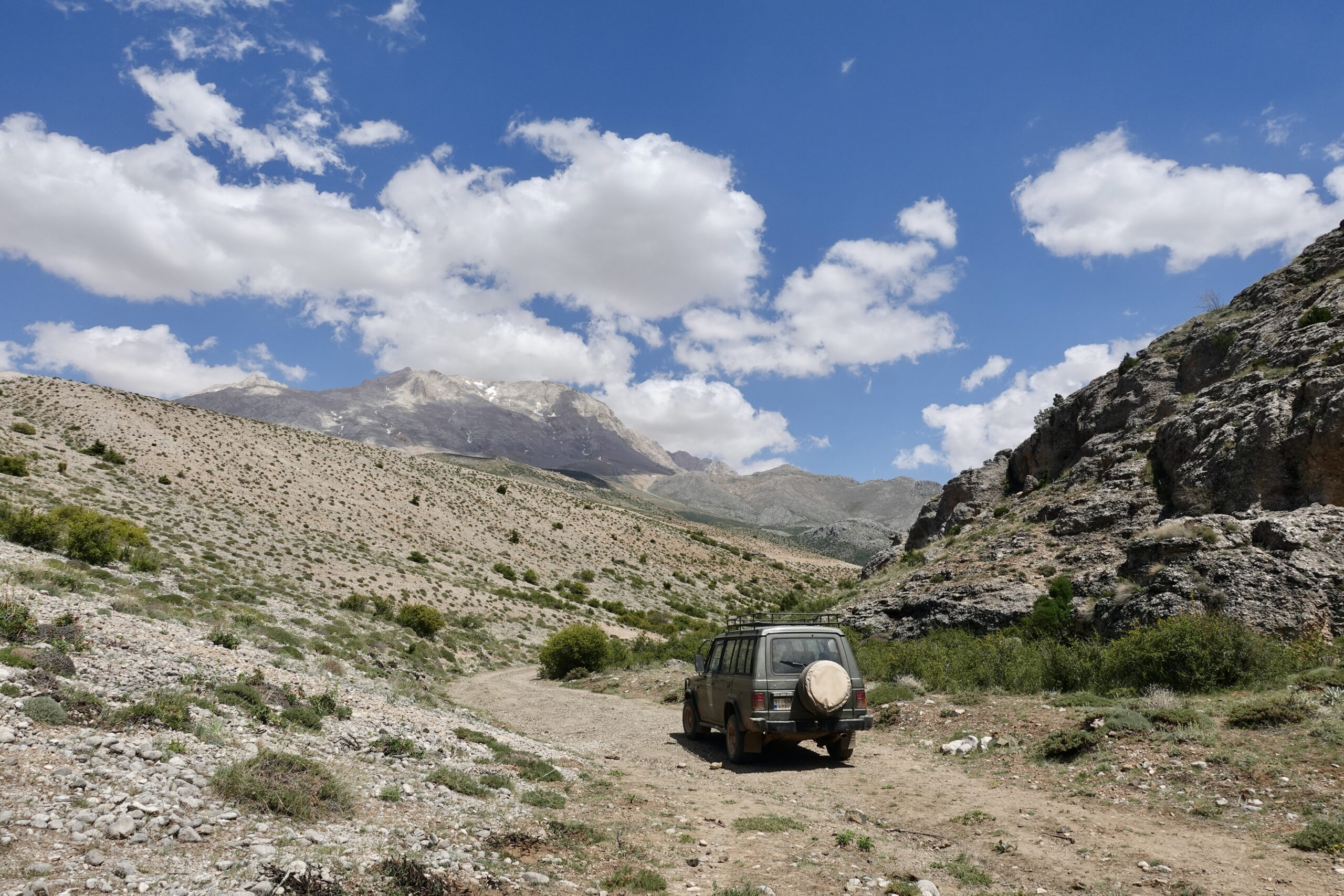
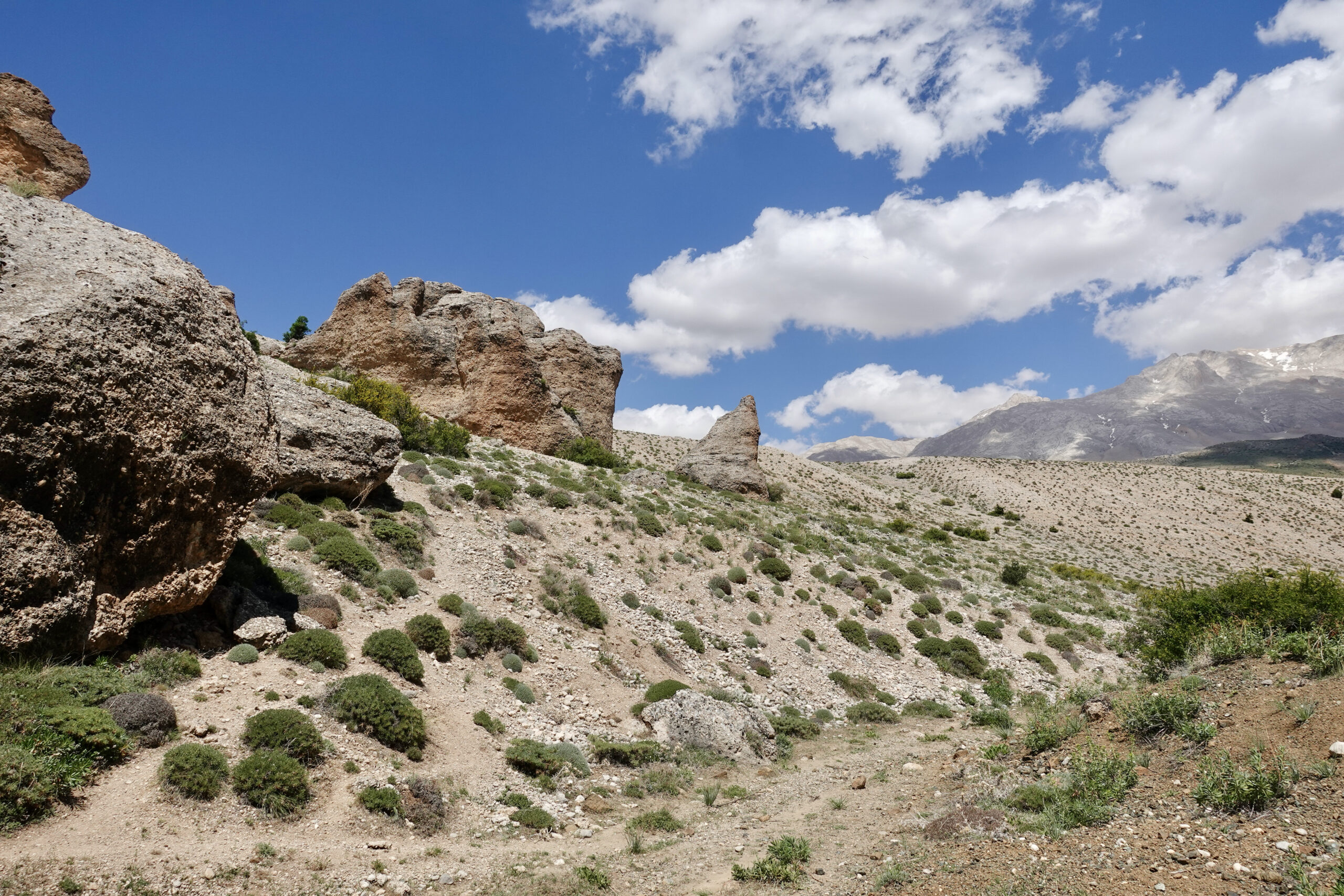
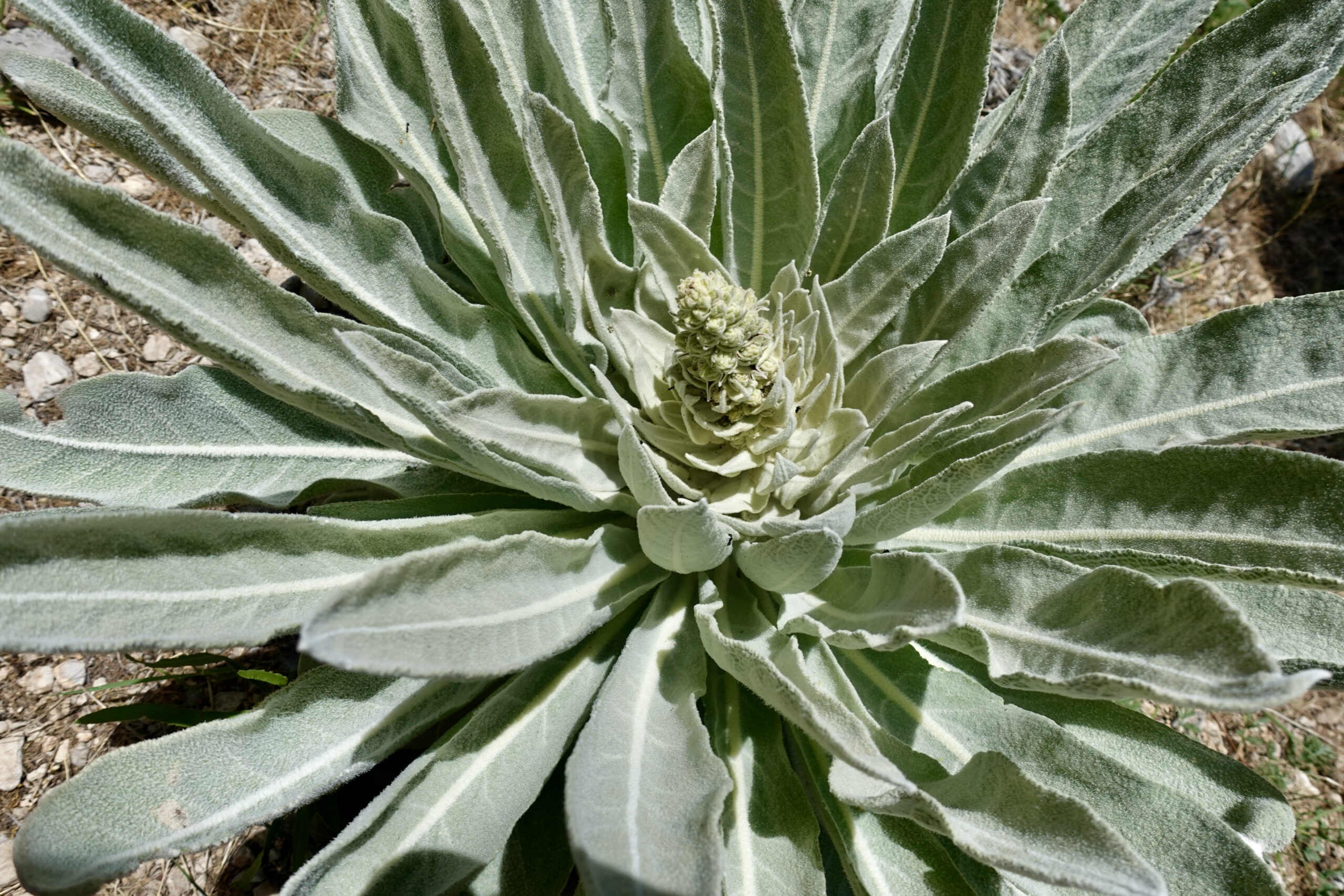


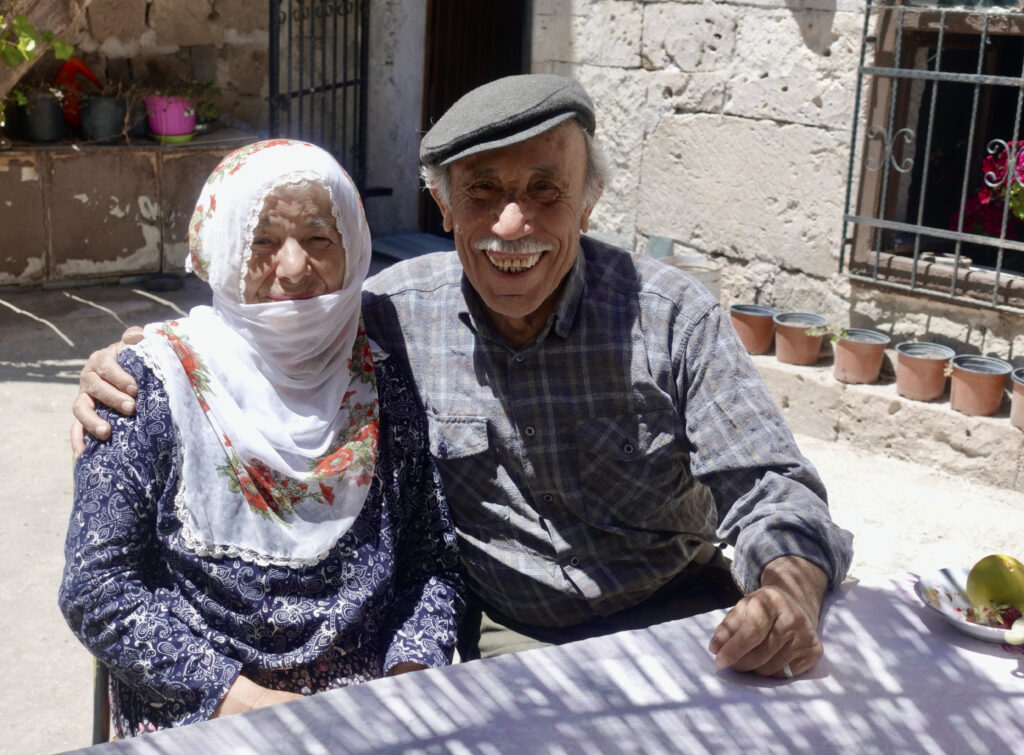

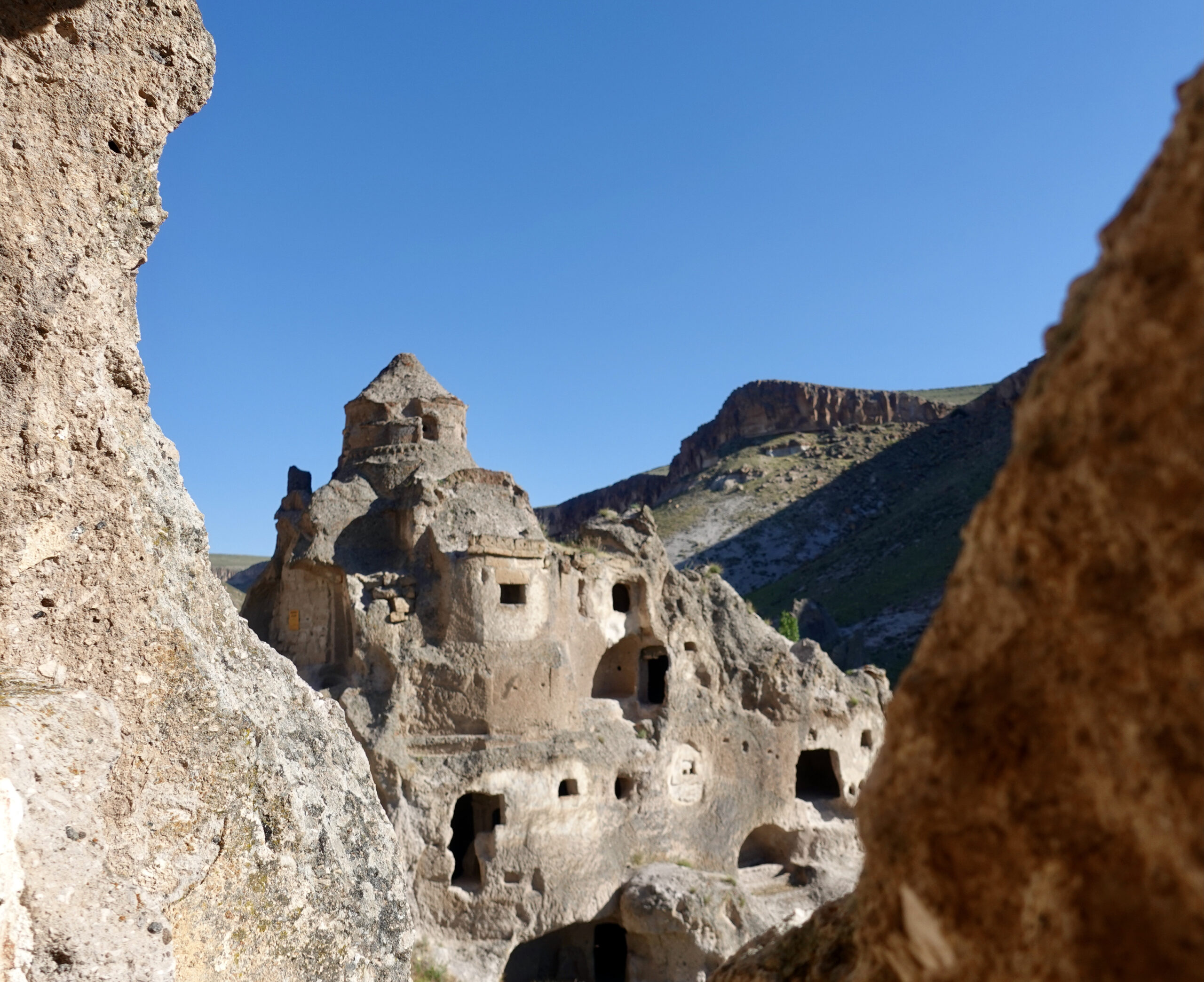


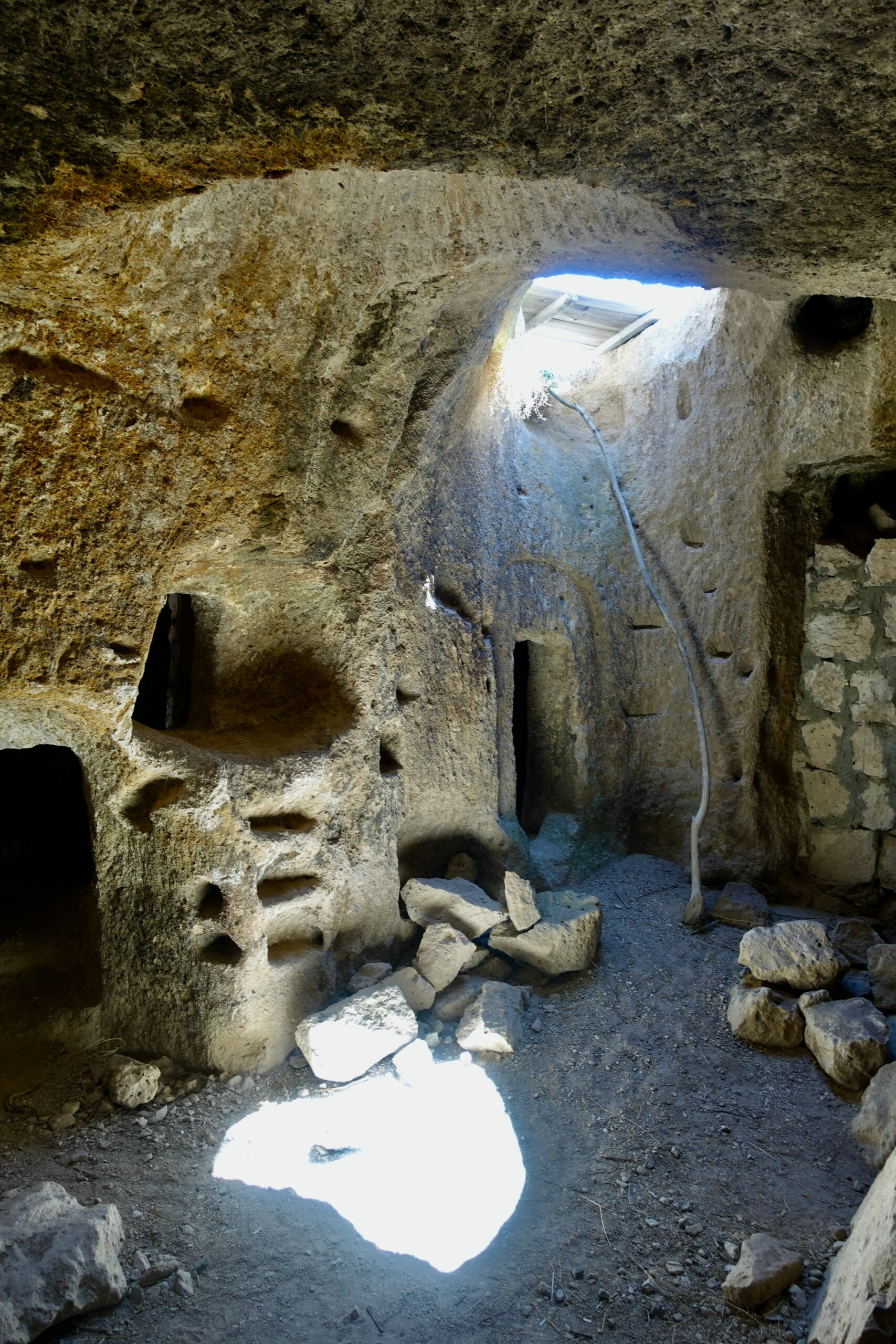
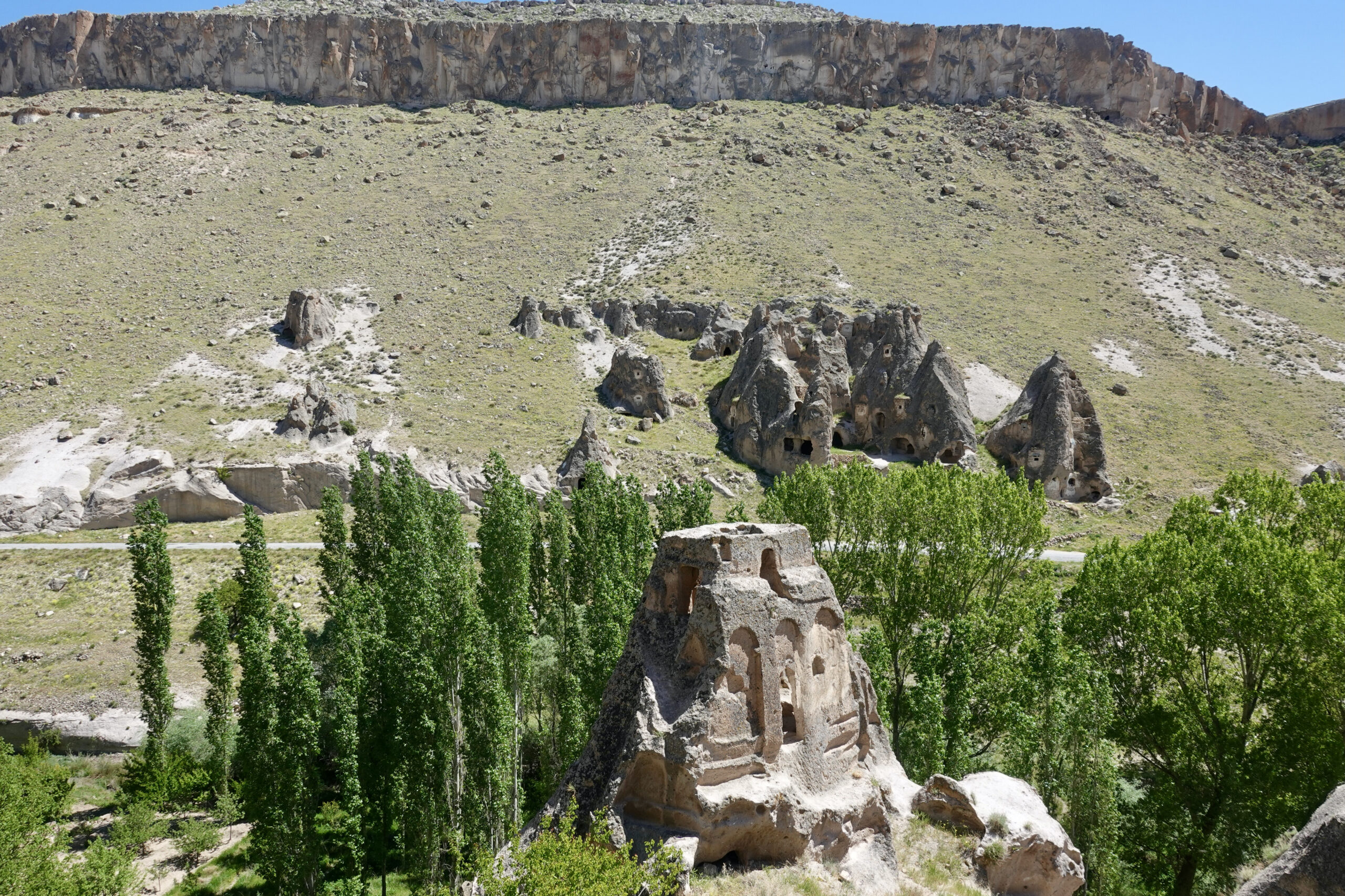
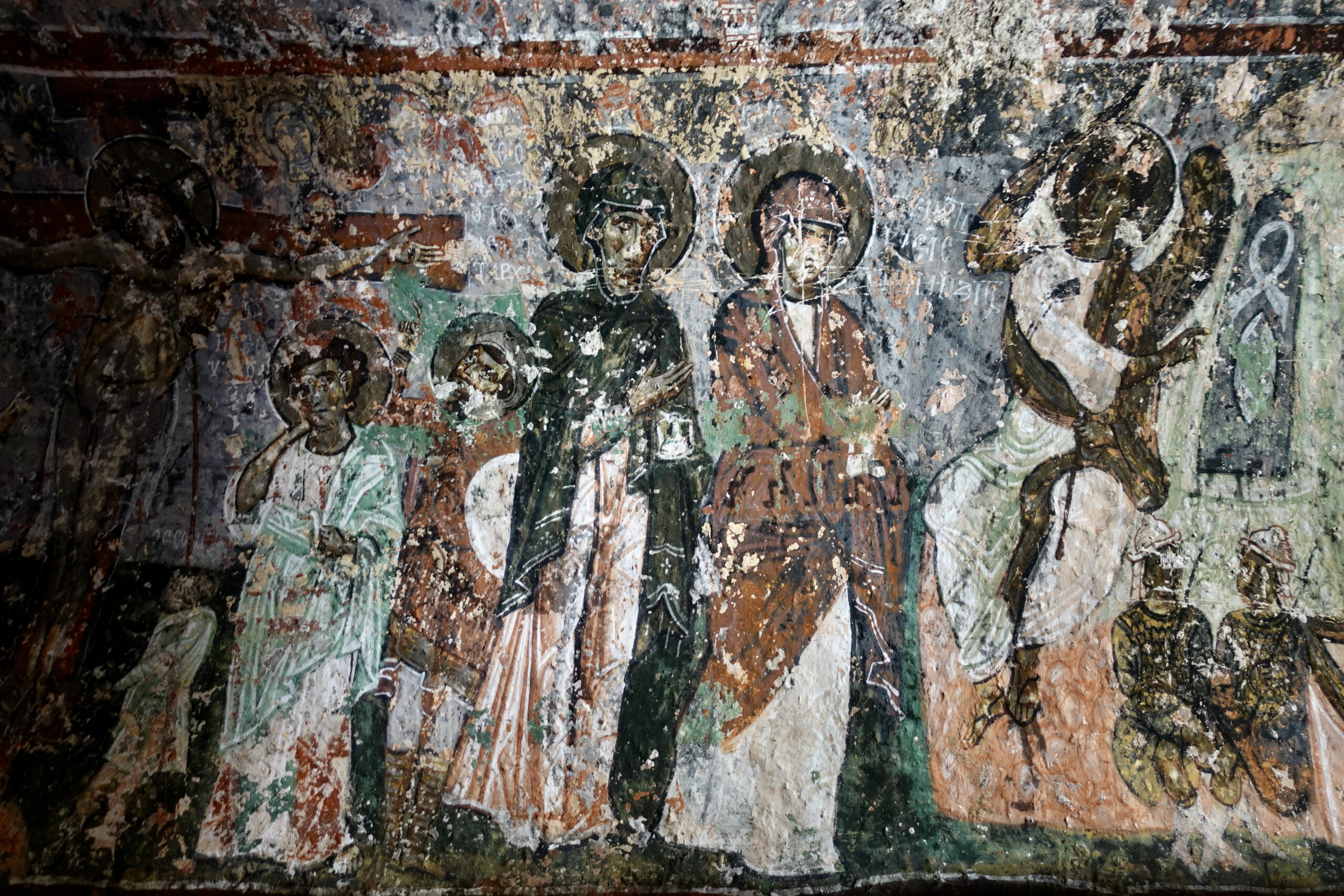
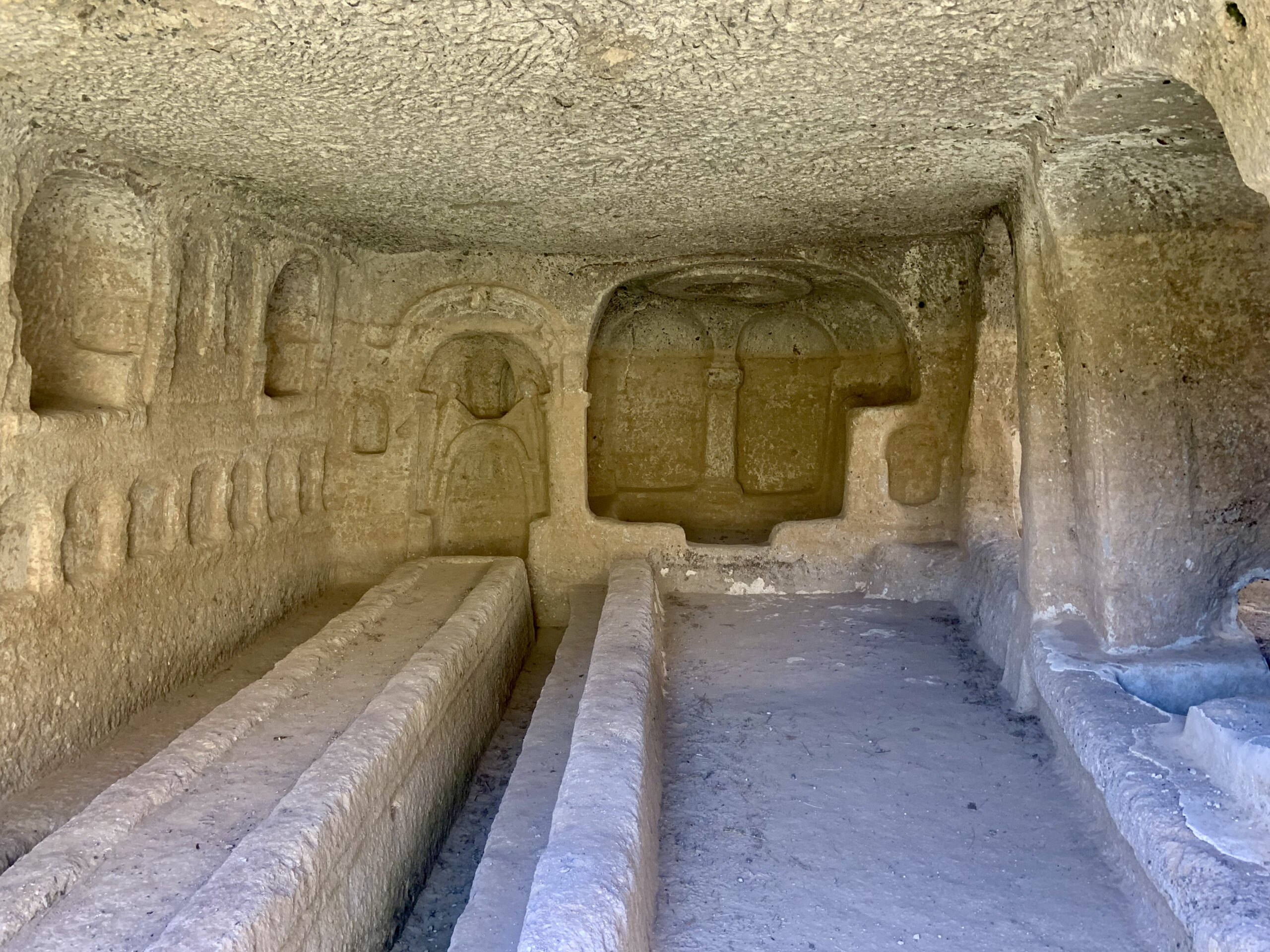

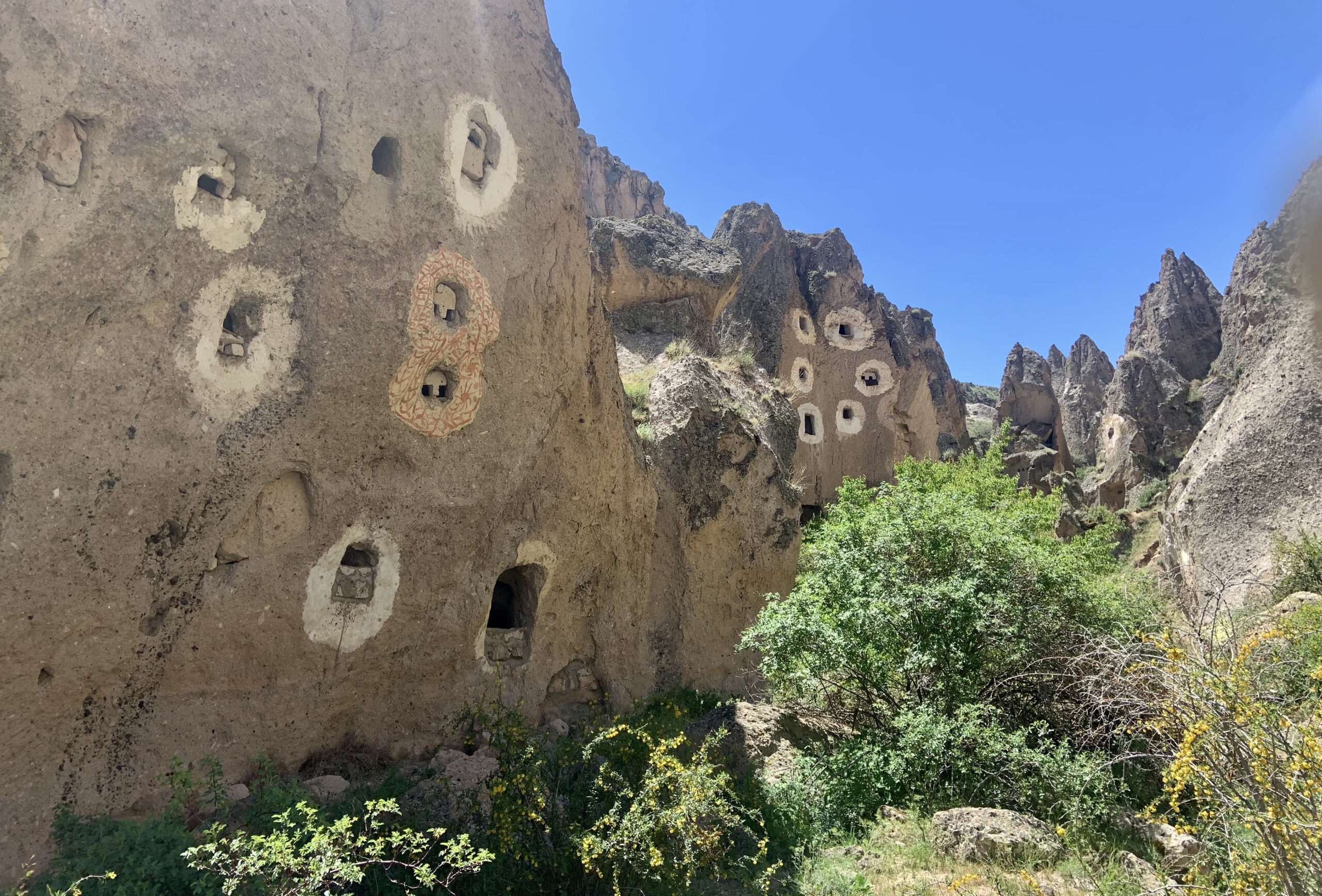
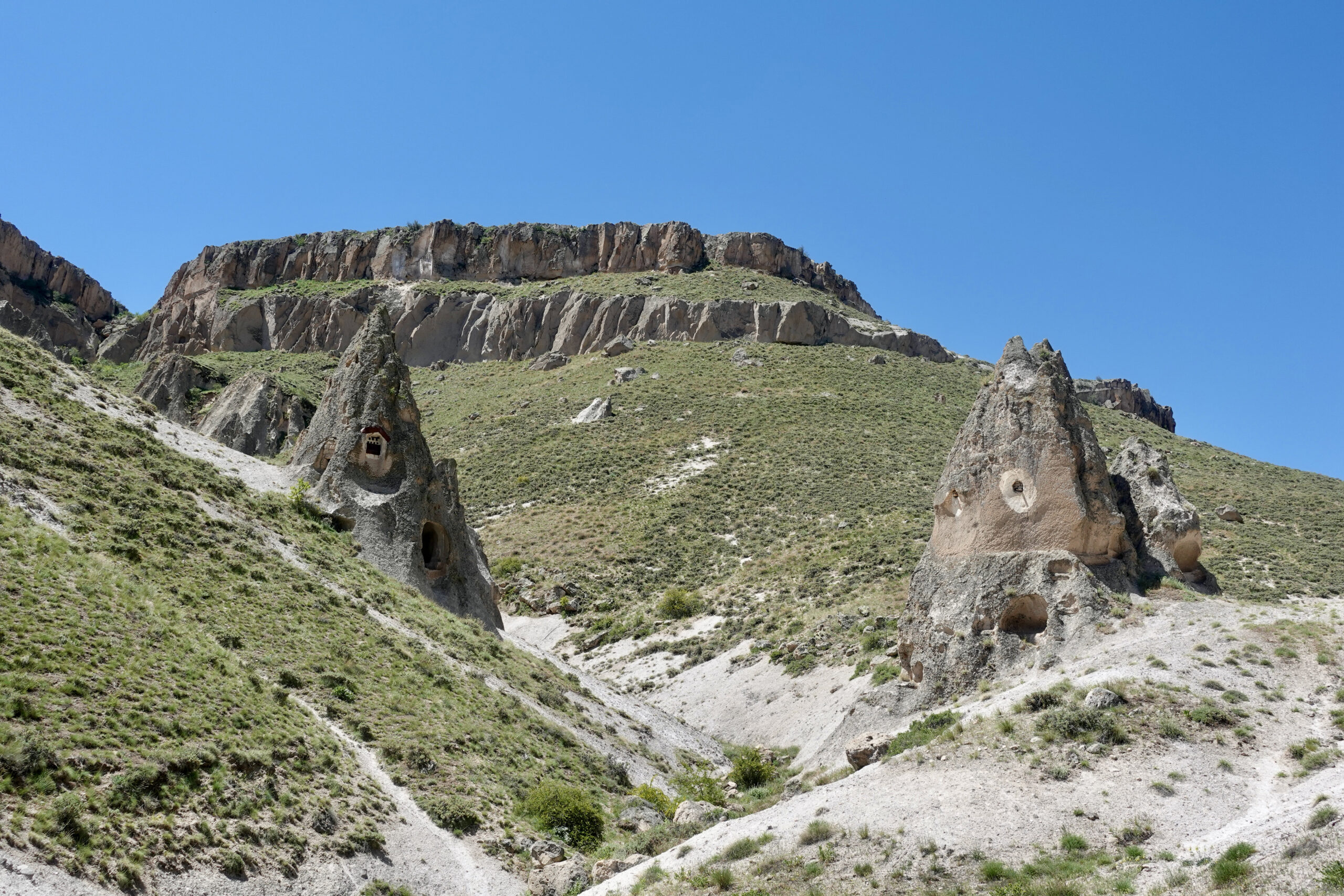
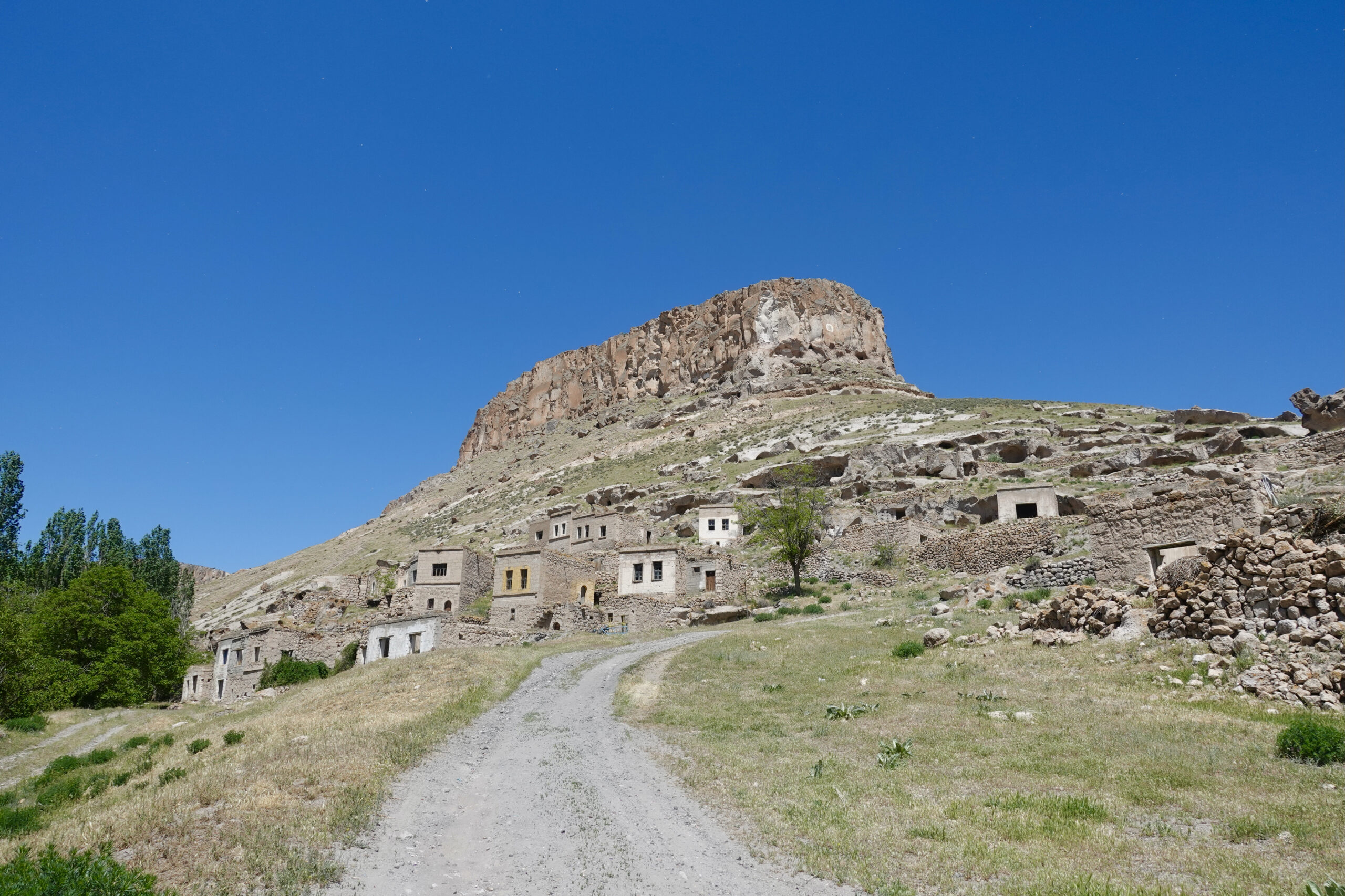
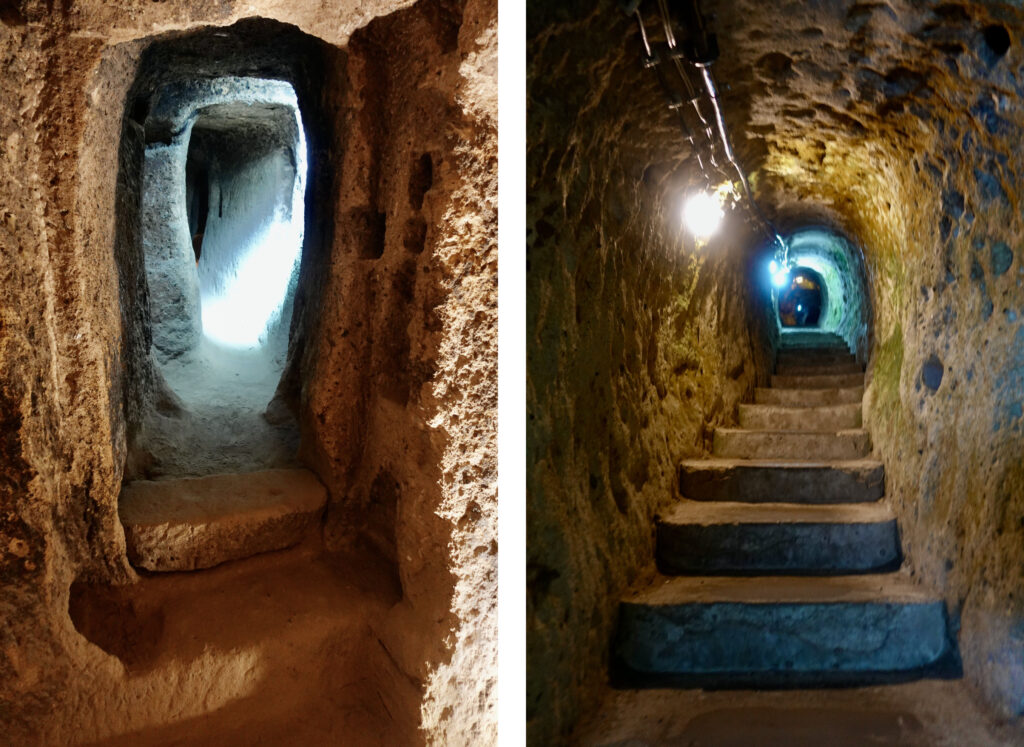

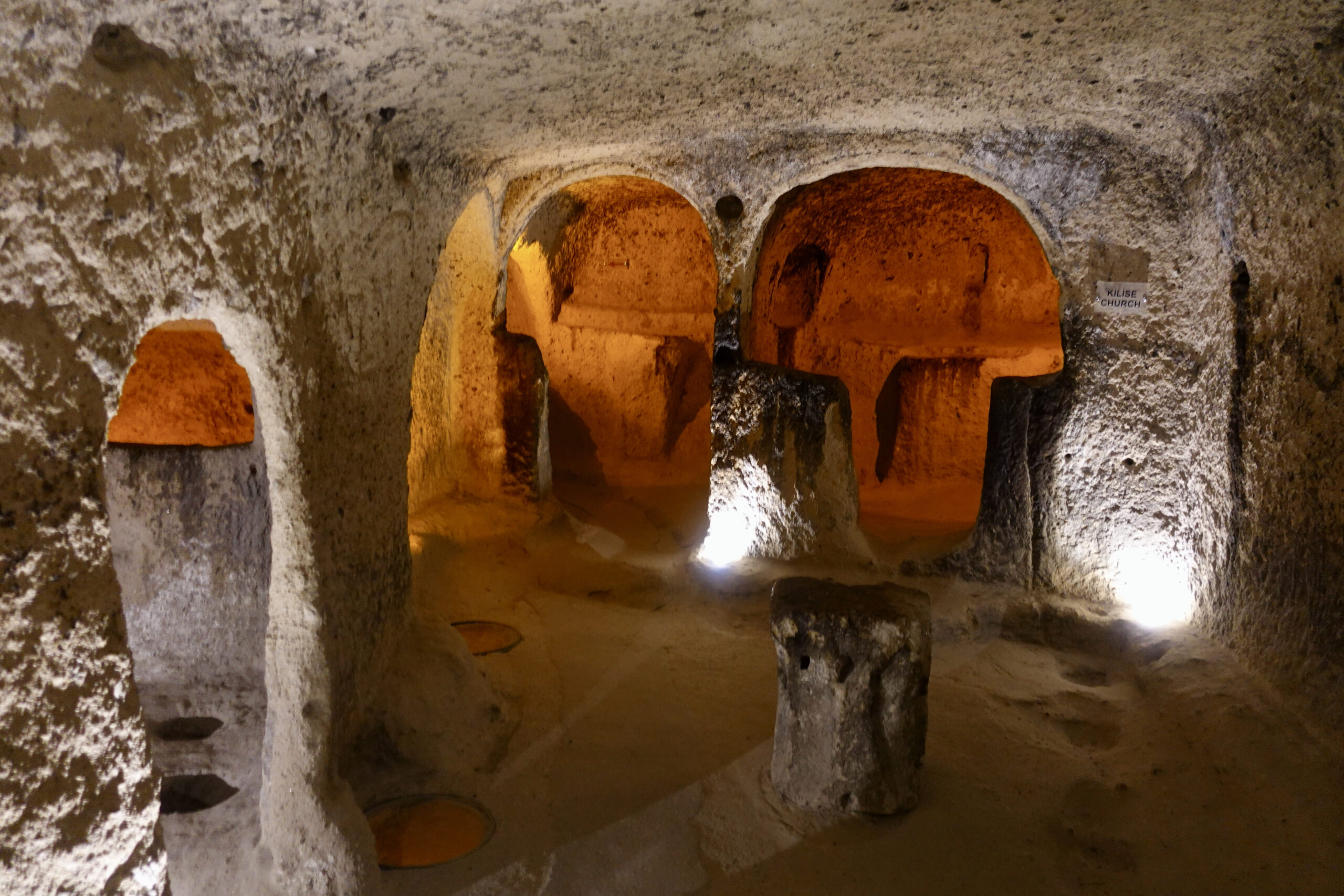

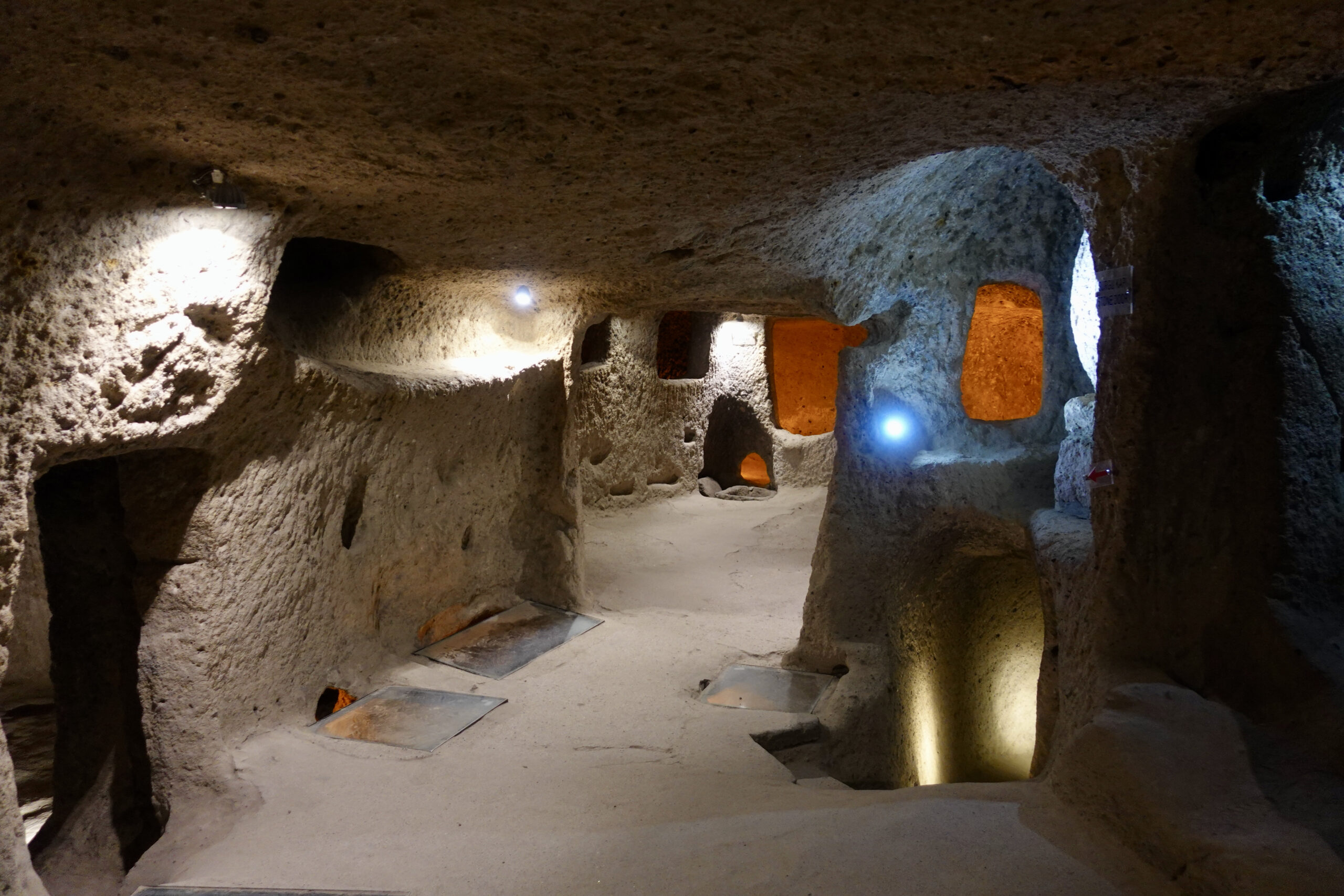
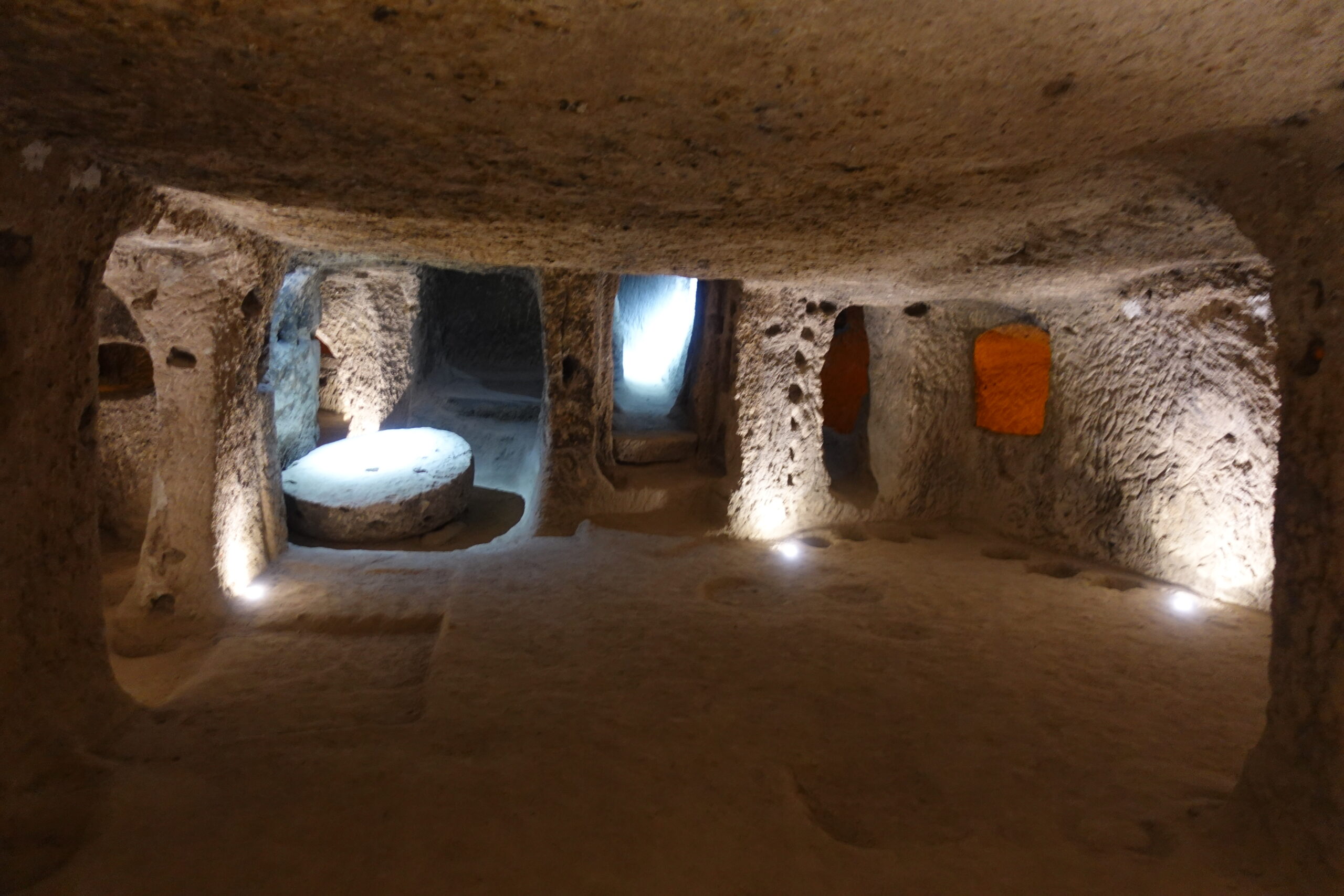
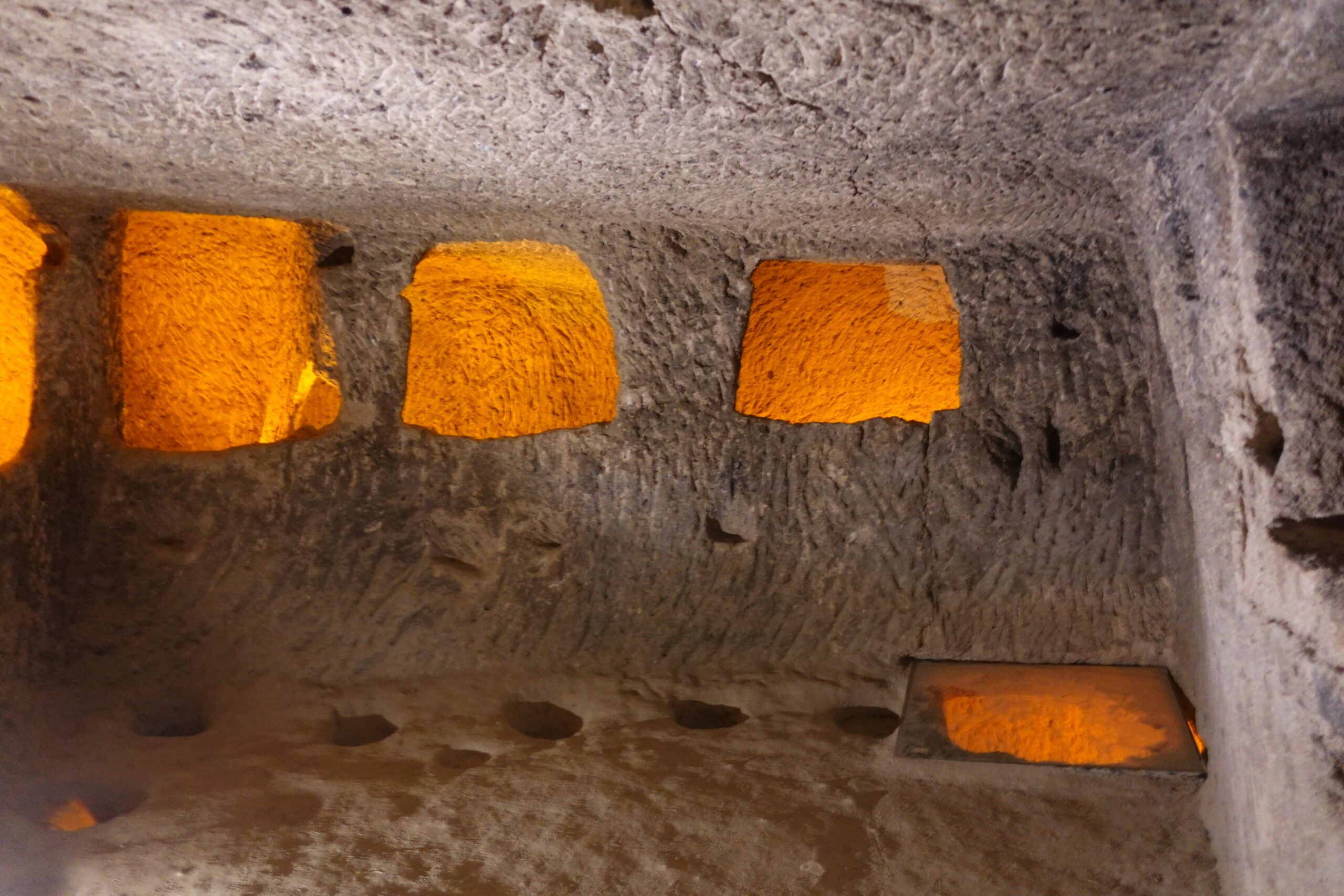
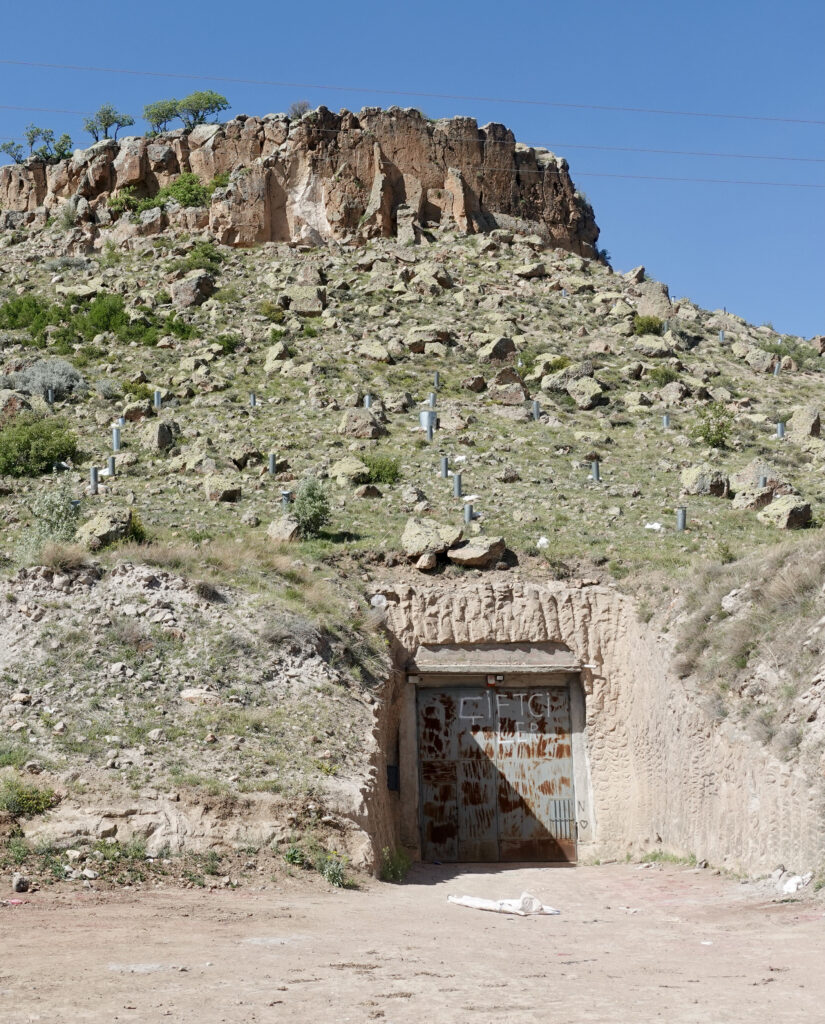
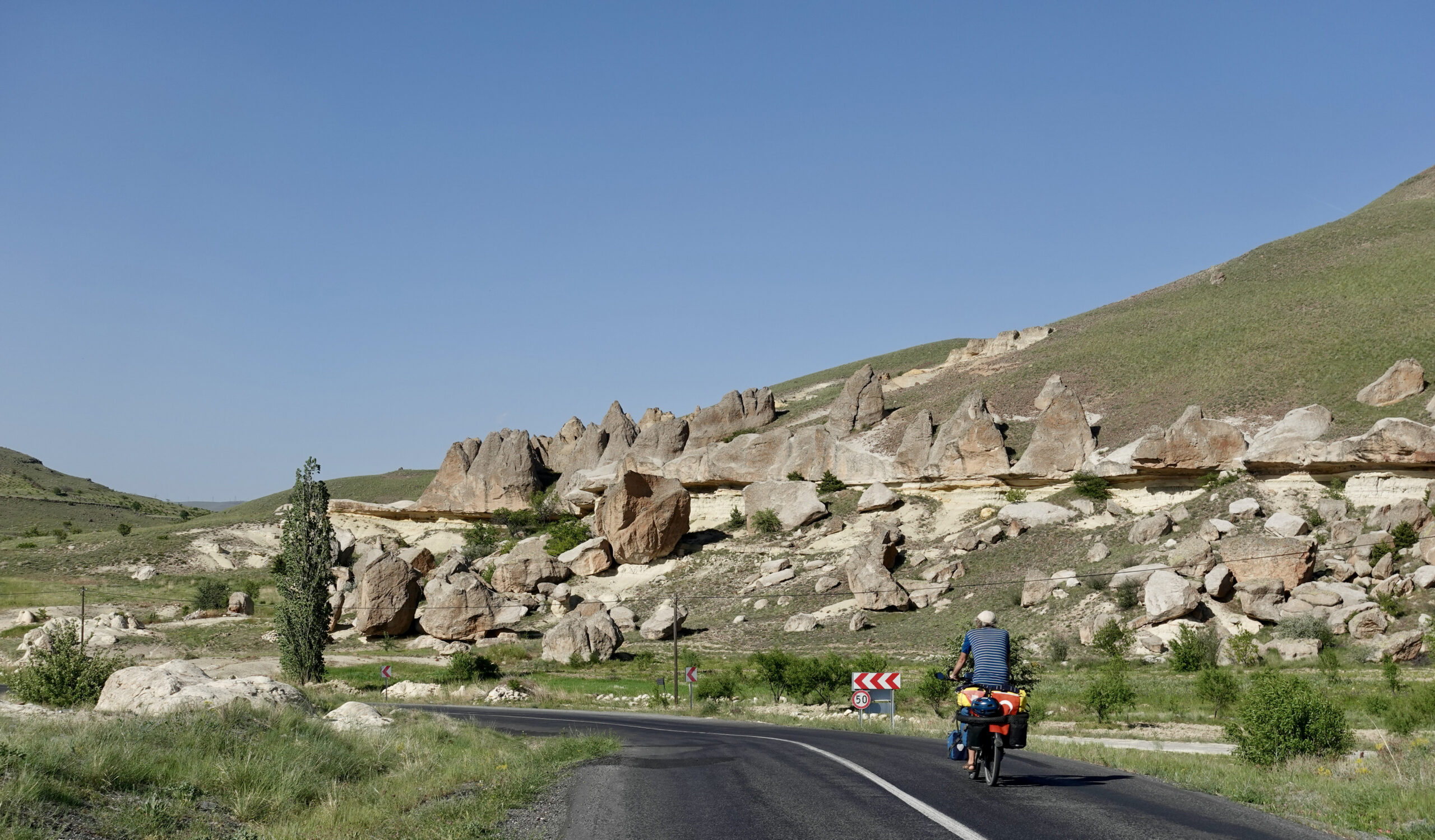
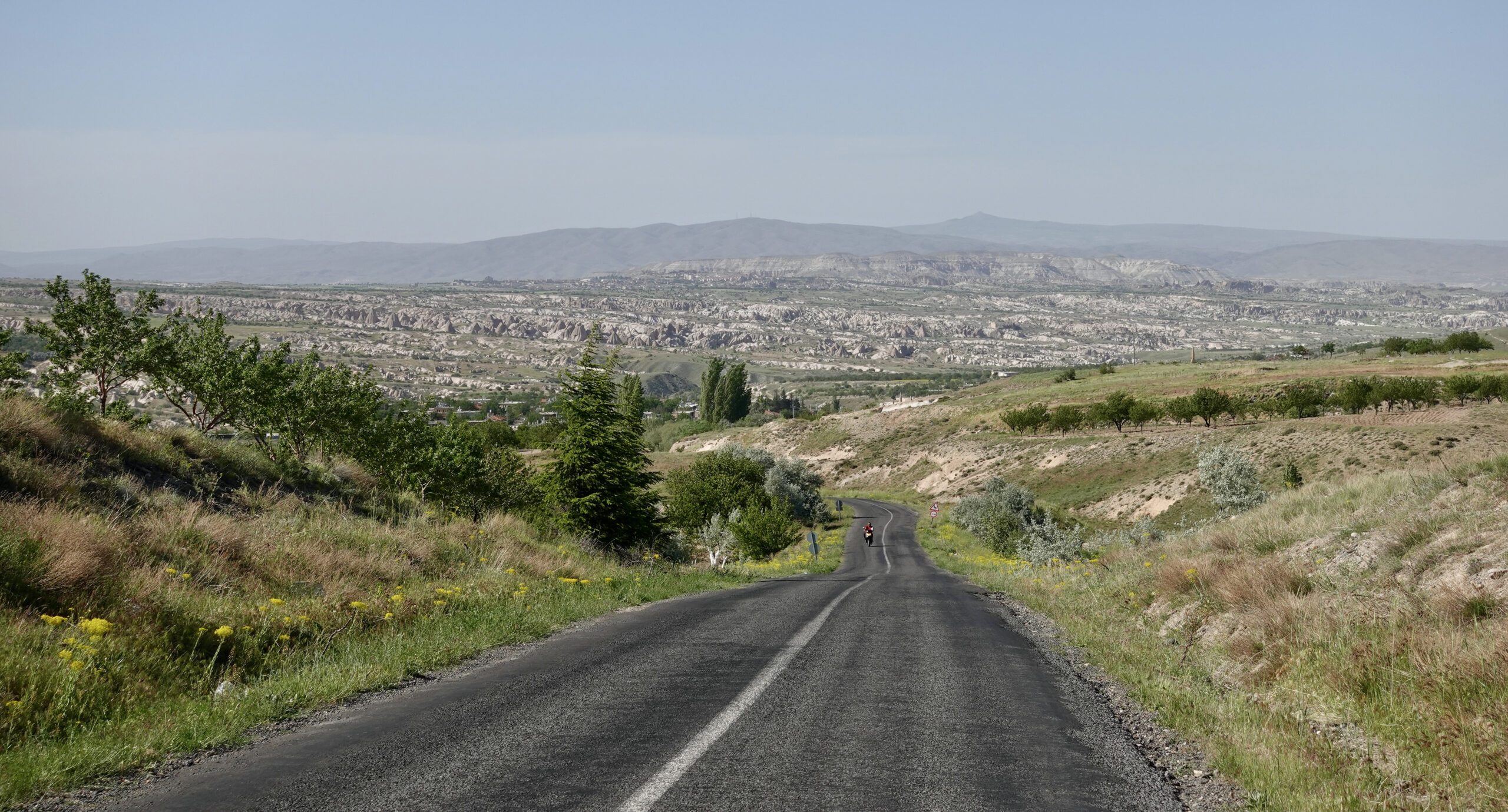
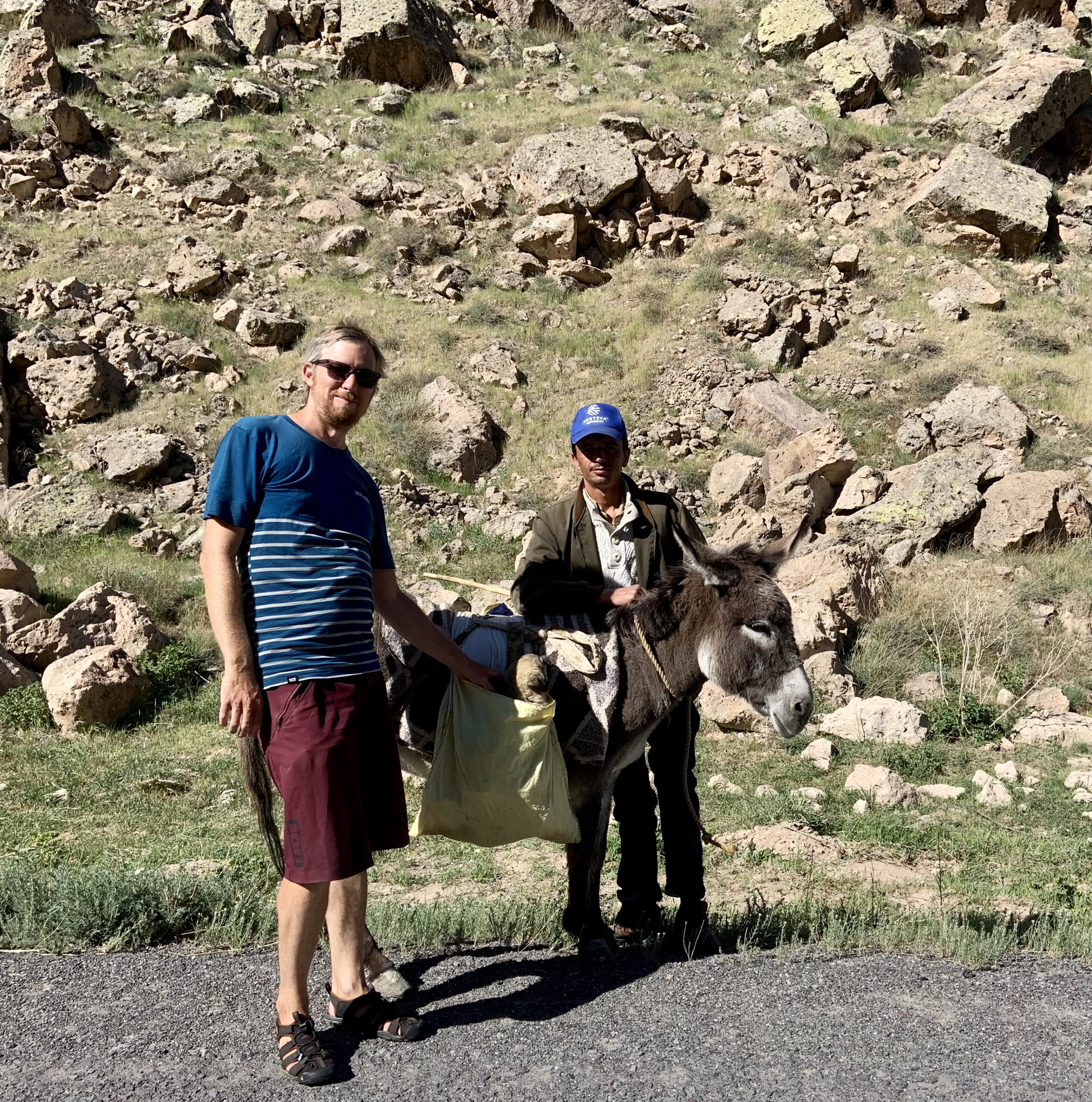
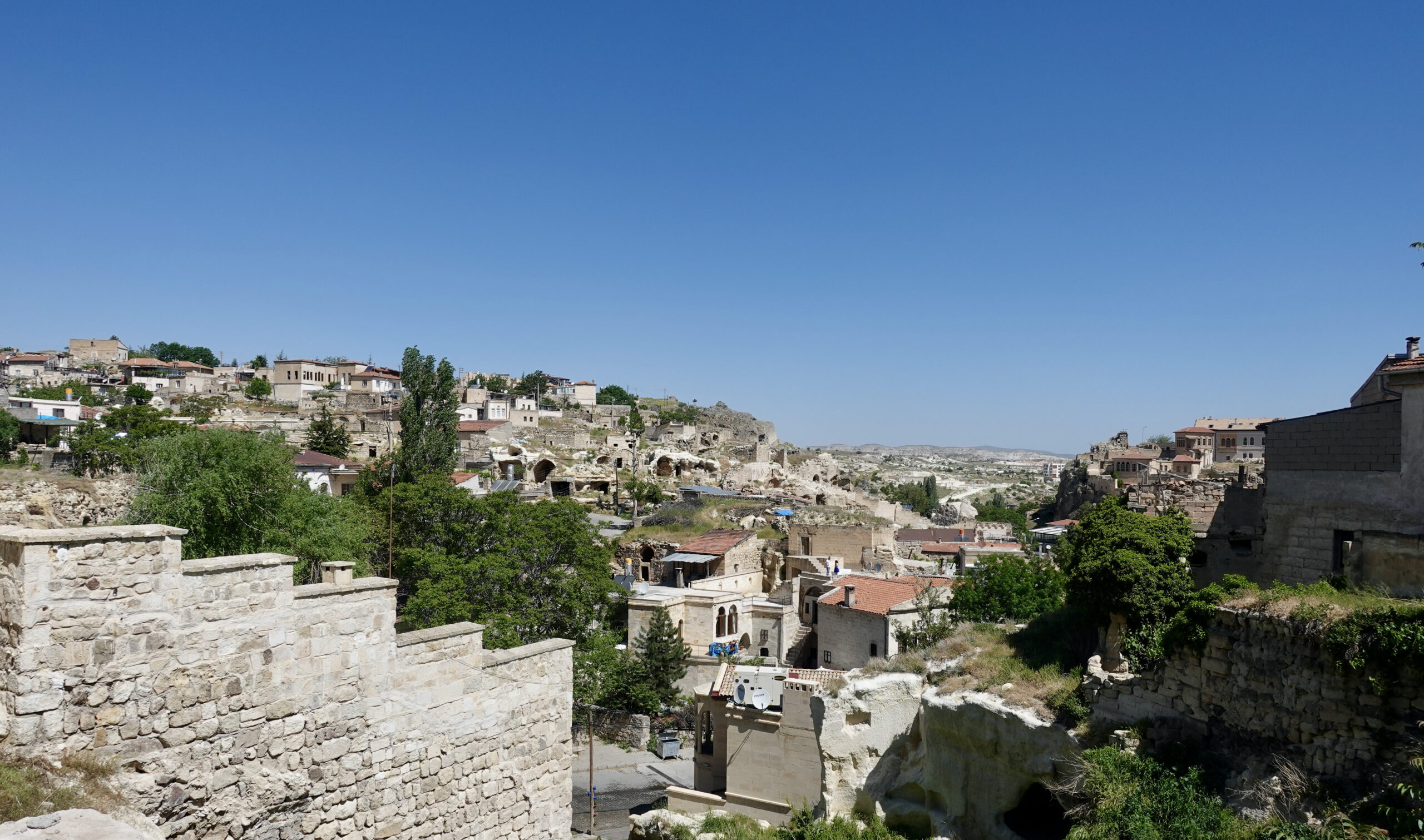


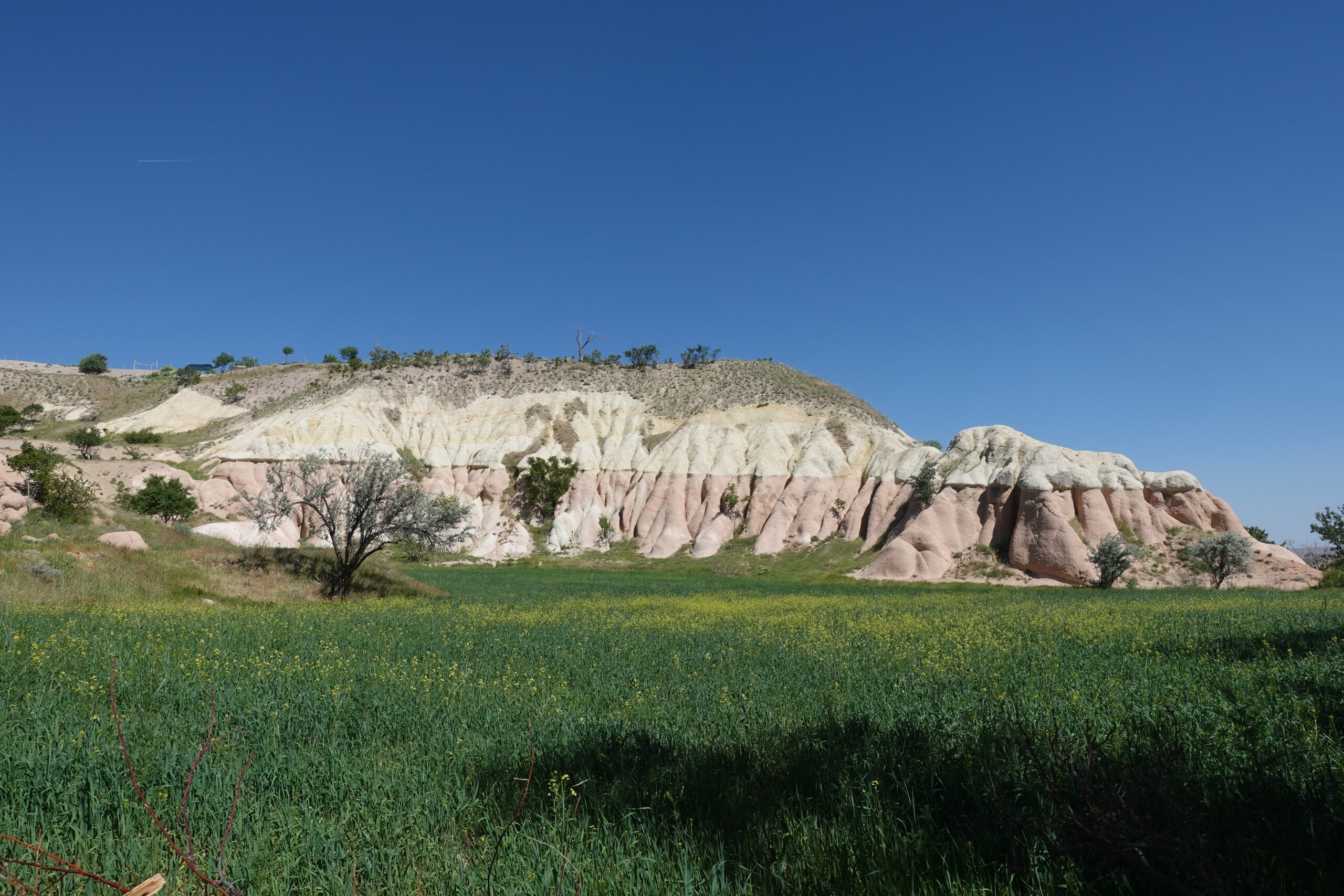
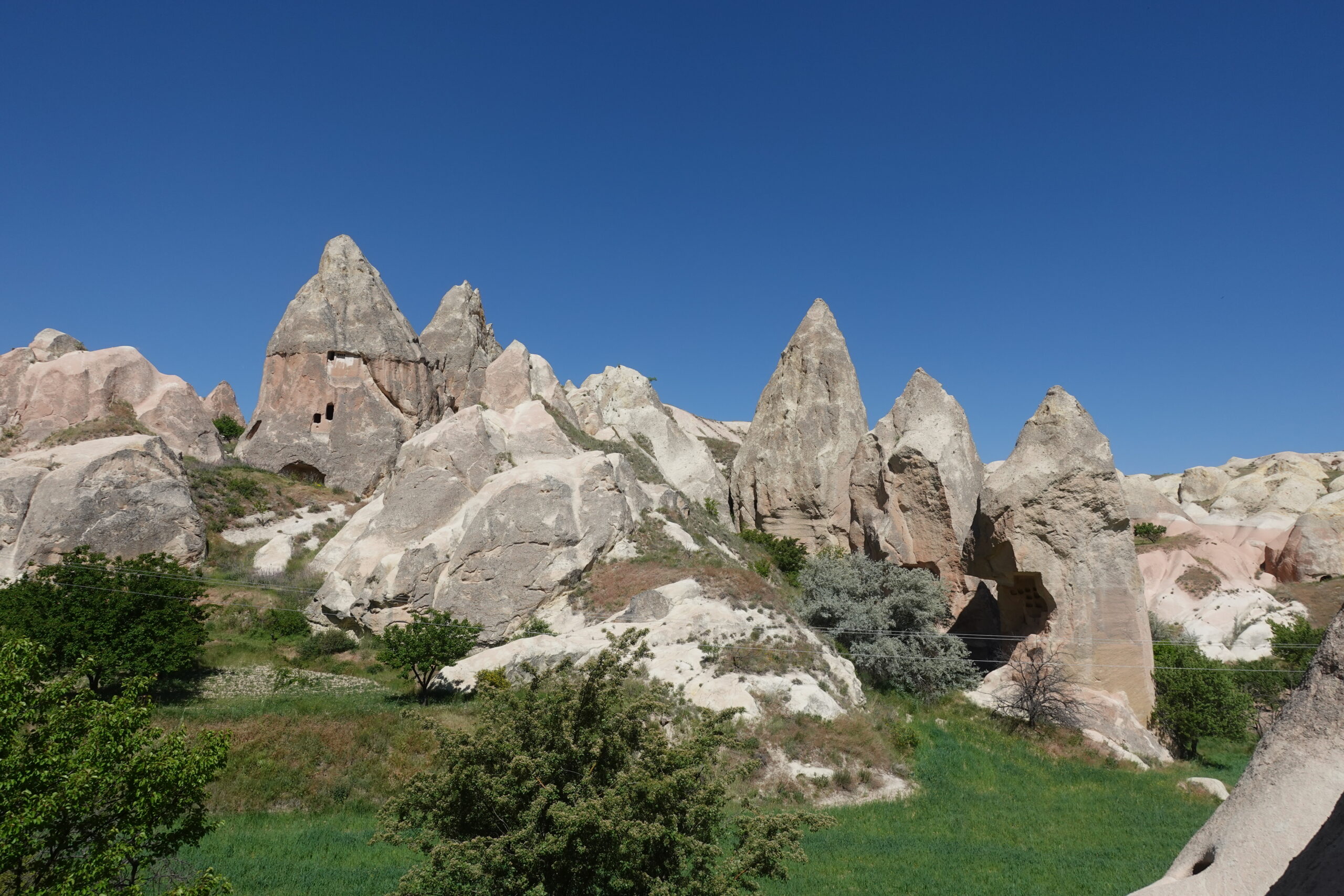
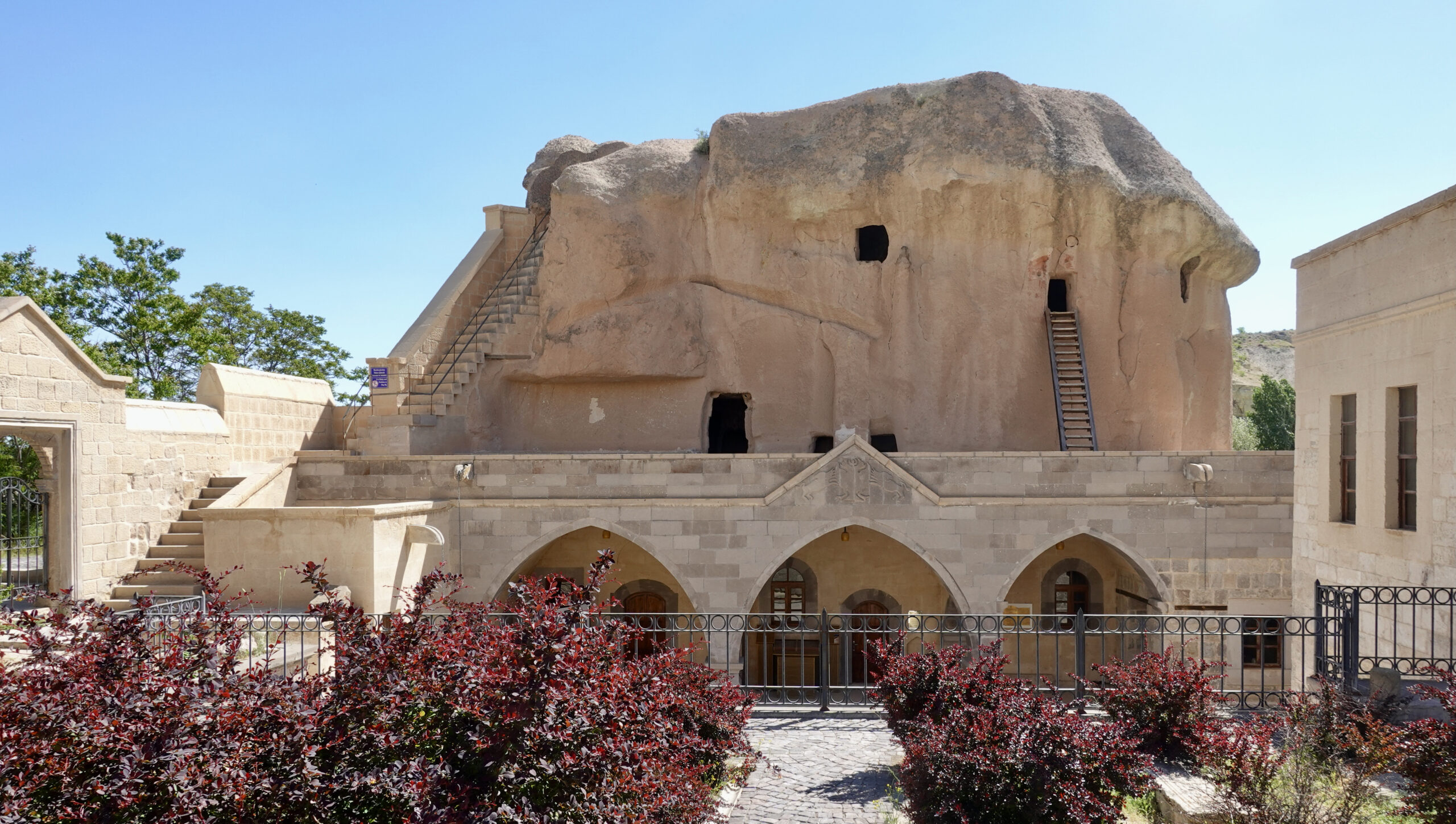

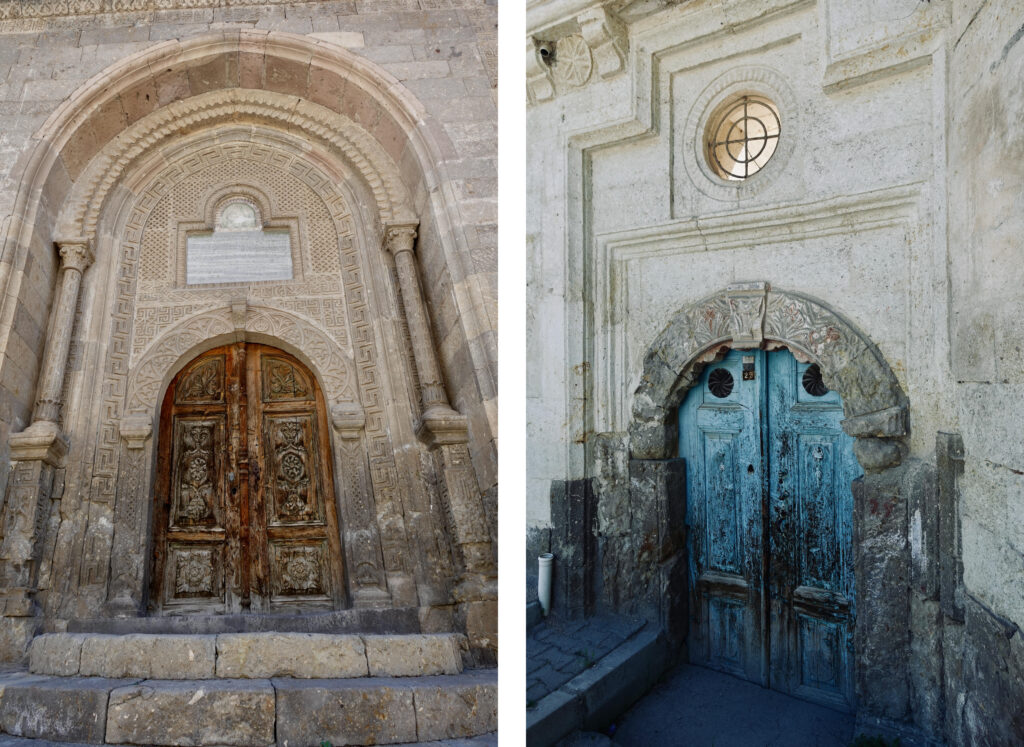
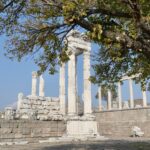
Leave a Reply